THIS account of my field work in Matto Grosso, Brazil, during 1931, is offered to those interested in primitive peoples and especially in South American archaeology and ethnology, with the sole motive of making available source material. The paper is not intended as a critical study of the region with which it deals nor does it purport to be thorough in its treatment of the subjects that it discusses. To my critical readers I plead the fact that I was a novice in the South American field at the time that the material presented was gathered, and that I was among tribes that are either but slightly known or not at all, and that thus my difficulties were those to be met by the first workers. One handicap was lack of interpreters, limiting the field of my investigations to what was physically observable. However, it is intended that the paper give the fundamental setting of the cultures with which I came in contact for any analytical study that may be undertaken in the future.
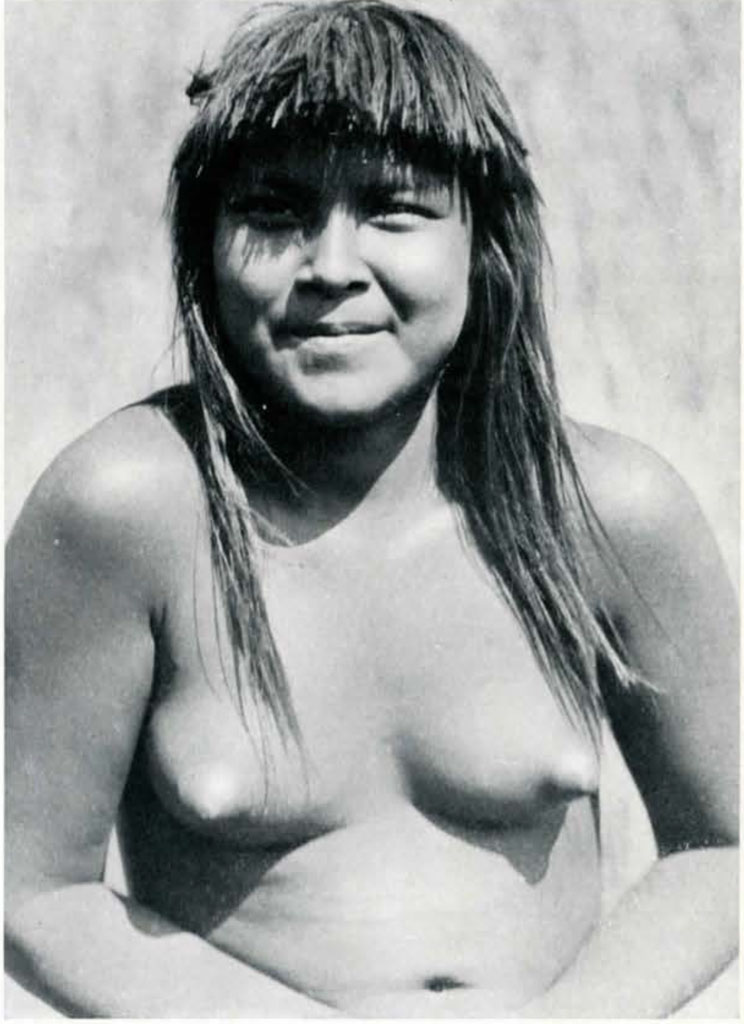
Image Number: 27542
The work was done under the auspices of the University Museum cooperating with the Matto Grosso Expedition and the Academy of Natural Sciences, whose representative was Mr. James A. G. Rehn.
Both archaeology and ethnology occupied my attention, my project being fundamentally in the nature of a survey of the possibilities that the country offers in both fields of research and to study the field conditions, rather than to bring back a conclusive and thorough study of some particular site or tribe. Though the unlooked-for acquisition of an amphibian airplane by the expedition aroused the hope that a prolonged stay with some tribe could be made, since the usual excessive amount of time spent in reaching the desired village could be saved by flying the distance in a few hours, the ultimate results were what had been originally planned for reasons that will appear in the narrative.
Briefly, my work included the locating of a number of archaeological sites and the partial excavation of two of them; visits to the Bororo da Campanha, or Western Bororo, and the Eastern Bororo of the São Lorenço river valley; and a trip to the headwaters of the Xingu river, which resulted in meeting with the following tribes of the Kuluseu-Kuluene region: Bakairi, Anahukua, Mehinaku, Aura, known also as the Vaura, Trumai, Yawalapiti, Kamayula or Kamayura, Tsuva, Kuikutl or Cuicuru, Kalapalu, and Naravute. Of these the Tsuva have never before been reported, and the Kalapalu, Kuikutl, and Naravute have not been described, though visited for the first time in 1920 by Major Ramiro Noronha while engaged in surveying the Kuluene river. The others are either described or mentioned by Karl von den Steinen and Max Schmidt.
So many stories have been told by travelers in little-known countries of the discovery and the collecting of remarkable material which was subsequently lost to science through some adventurous happening, that I hesitate to add another to these sagas of exploration. Nevertheless, as a matter of history, mention must be made that on the descent of the Kuluseu river we met with an accident under remarkably prosaic conditions which resulted in the loss of my Bakairi and Anahukua notes and collections, and the more serious loss of a great deal of equipment, which forced a more hasty itinerary and did not permit me to bring back any anthropometric data nor to carry out the work in racial blood group-ing that had been projected. Modern equipment in the form of an airplane saved the trip from being entirely fruitless. By bringing fresh supplies of food and ammunition, it made possible the reorganization and continuation of the work, though the stay in the region was not as long as had been intended.
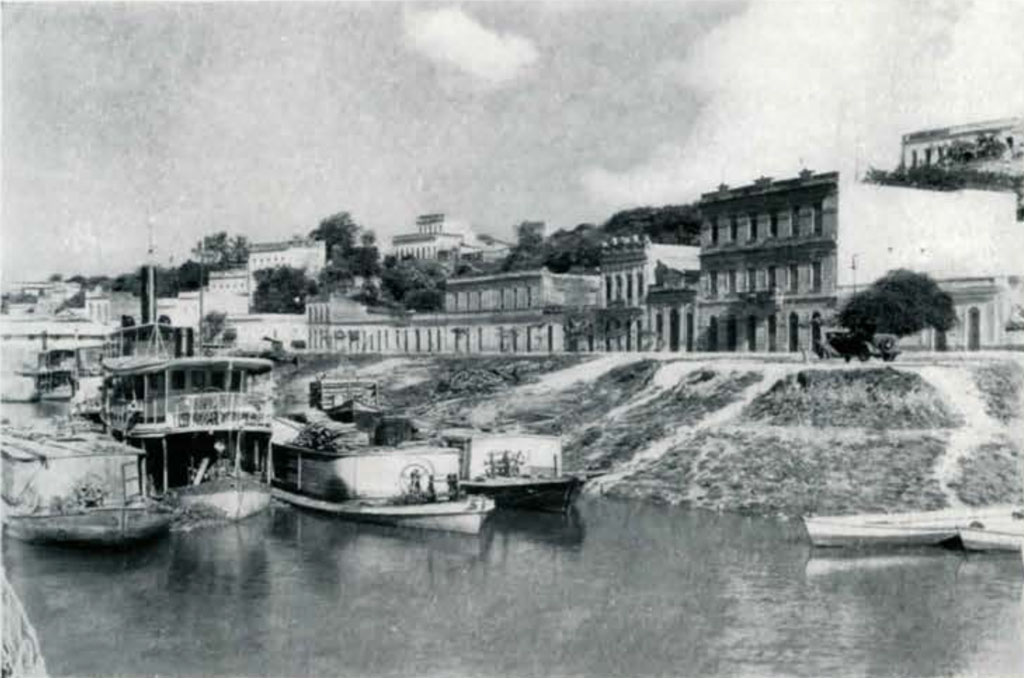
Image Number: 25529
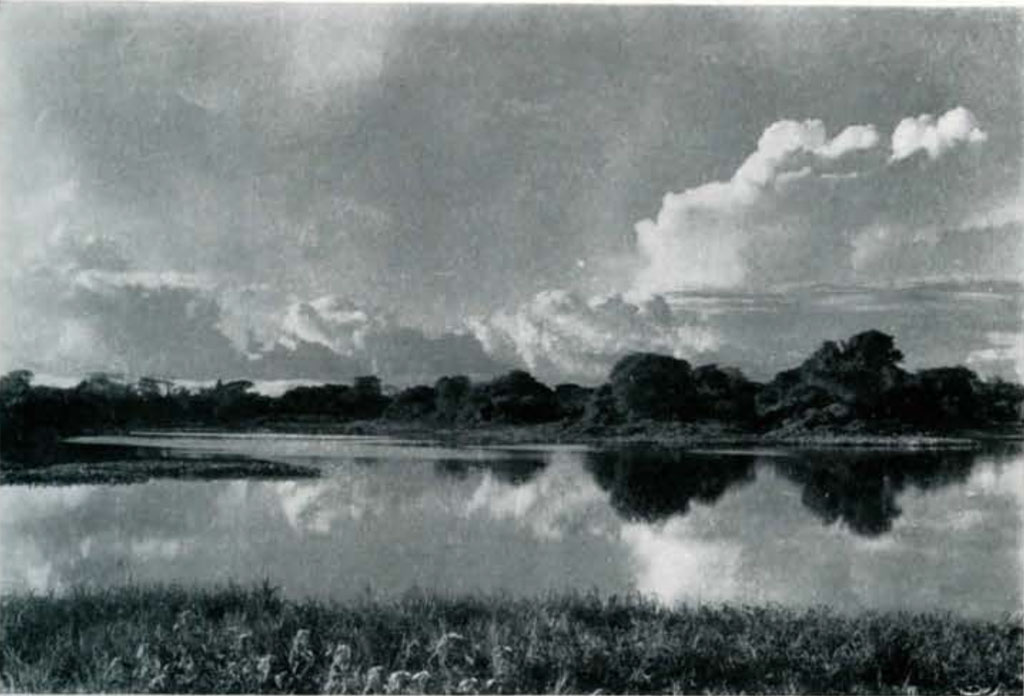
Image Number: 25545
The projects of the Matto Grosso Expedition were many, and it is with regret that I cannot include a discussion of them in the present report. However, it is with pleasure that I take the opportunity of acknowledging my indebtedness to my companions on the expedition, with whom I shared so many pleasant anti unpleasant experiences, and other things that fall to the lot of those traveling in little-known territory. Especially do my thanks go to those who were concerned with my work more intimately, and at times shared in bringing it to a successful end: to Mr. E. R. Fenimore Johnson; to Mr. Arthur P. Rossi, who is responsible for what photographic records we have of the Xingu region; to Messrs. Floyd Crosby and Ainslee Davis for photographic and sound recording; to Mr. Charles Lorber, the pilot of the amphibian plane, and to Messrs. Joseph Sauceda and John Due, co-pilot and radio operator respectively; to Mr. John S. Clarke, Jr; to my Brazilian ‘camaradas’ and Bakairi canoemen, who followed me so courageously into a region that is not devoid of danger, and to whom a large share of the credit for the success of the venture is due; and to Mr. Giacomo Anzil.
To others not so intimately connected with my field work I am no less obligated. To Mr. Eldridge R. Johnson for his generosity in placing at my disposal the amphibian plane, without which my survey would not have been carried out over such a vast region, and which was instrumental in averting a tragic end to the Xingu venture; to General Candido Mariano da Silva Rondo”, who so courteously granted the expedition permission to enter the Indian country, favoring us with his personal interest and friendship and with countless kindnesses; to Major Ramiro Noronha for the infinite pains that he took to give us all the information at his disposal concerning the region that only he knows so well, and for his intimate interest in our welfare; to Dr. Benedicto Duarte Monteiro and Dr. Alvaro Duarte Monteiro of the Inspectoria de Protecção aos Indios.
I further wish to thank the following institutions and individuals that in some way or other helped me in my task: Dr. Jules Freund of the Henry Phipps Institute; Dr. Max Schmidt for his advice and mapping out for me many projects; Dr. E. Roquette-Pinto, the director of the Museu Nacional, and Dr. Heloise Alberto Torres, of the same institution; Dr. A. Amaral and the Institute Butantan for numerous courtesies and supplying Dick test material; the Inspectoria de Protecção aos Indios; Mr. John Gordon Ramsey for his hospitality and permission to excavate at Descavaldos; Miss Eleanor M. Moore for making the six plates of drawings; Miss M. Louise Baker for drawing the map.
* * * *

Image Number: 27585
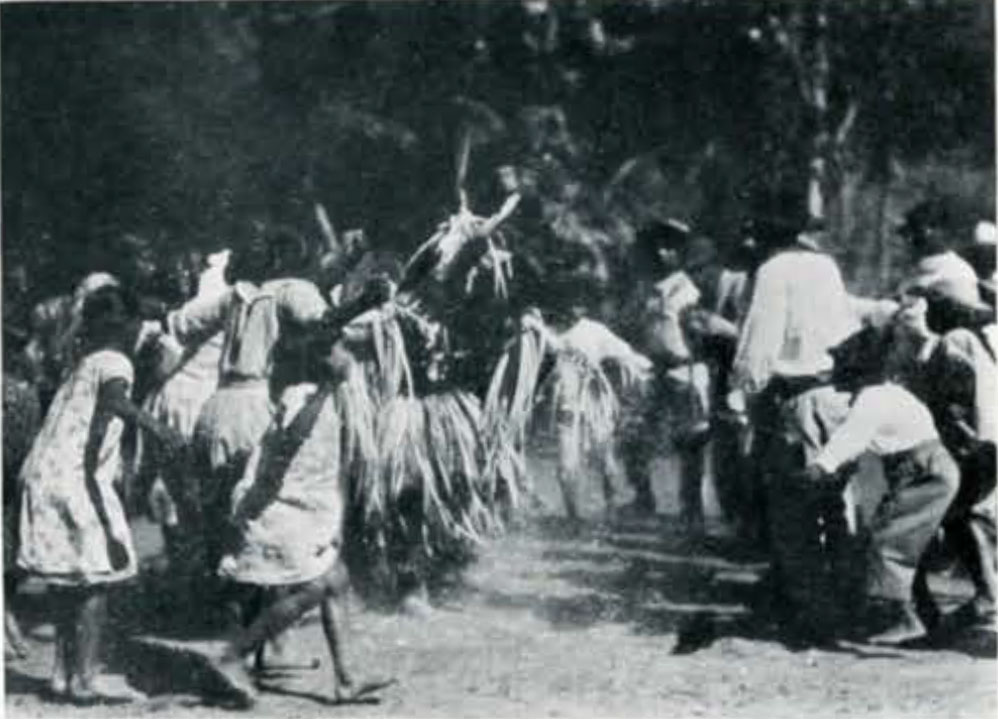
Image Number: 27726
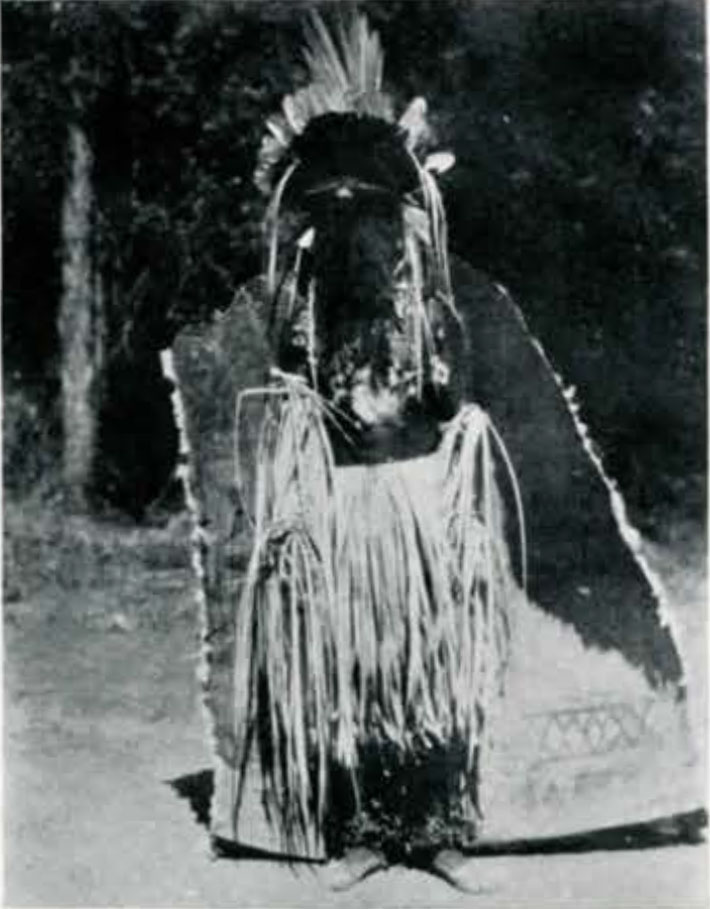
Image Number: 40459
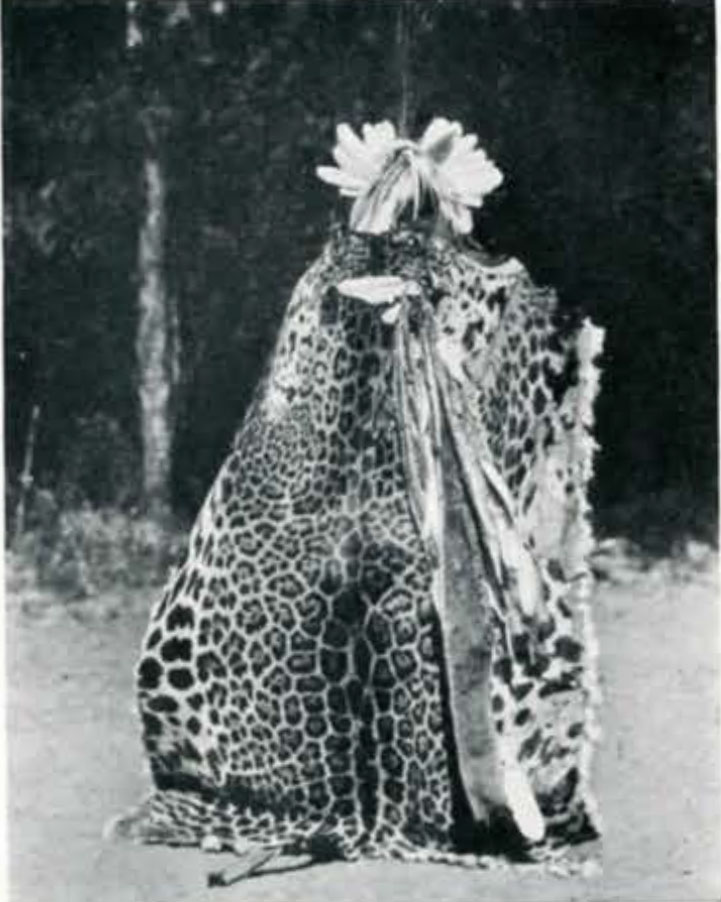
Image Number: 40471
Dr. E. Roquette-Pinto has expressed the opinion that to-day the most interesting groups of mankind are those to be found in the northern forests of Matto Grosso. Investigating the section of the state which lie has called Rondonia, he found numerous tribes with a simple stone-age culture apparently unaffected by what has been happening on the continent of South America since the first arrival of European adventurers. Geographical barriers, and the fact that the surrounding peoples have borne the brunt of European aggression have been instrumental in preserving for the anthropologist, cultures that are simple and archaic, and unquestionably of South American fostering.
* * * *
Matto Grosso was first entered, by way of the Paraguay river, in the latter part of the sixteenth century by Spaniards. Soon afterwards the Portuguese came from the east, succeeding in traversing the southern portion and even reaching the Andes, the sharing of the wealth of Peru being their goal. In the early eighteenth century, towns were founded on the banks of the Cuyabá and the Paraguay rivers. Following the establishing of these settlements, the southern portion of the state underwent gradual exploration, and its aboriginal peoples inevitable subjugation.
The nineteenth century produced a number of scientific expeditions which descended various southern affluents of the Amazon that have their origin in the highlands of Matto Grosso, but generally the north resisted penetration, so that at the beginning of the twentieth century it still remained largely unknown.
A number of reasons can be found for this. Unquestionably its isolation from the rest of Brazil, being surrounded by geographic barriers that permit entry only from the south, has contributed to its slow settlement. In fact, for the settlers it has held little attraction, until recent times. In earlier times, the desire to reach Peru, or to discover a watercourse linking the Amazon with the Paraguay, or to search for fabled gold mines, led to the penetration of the country.
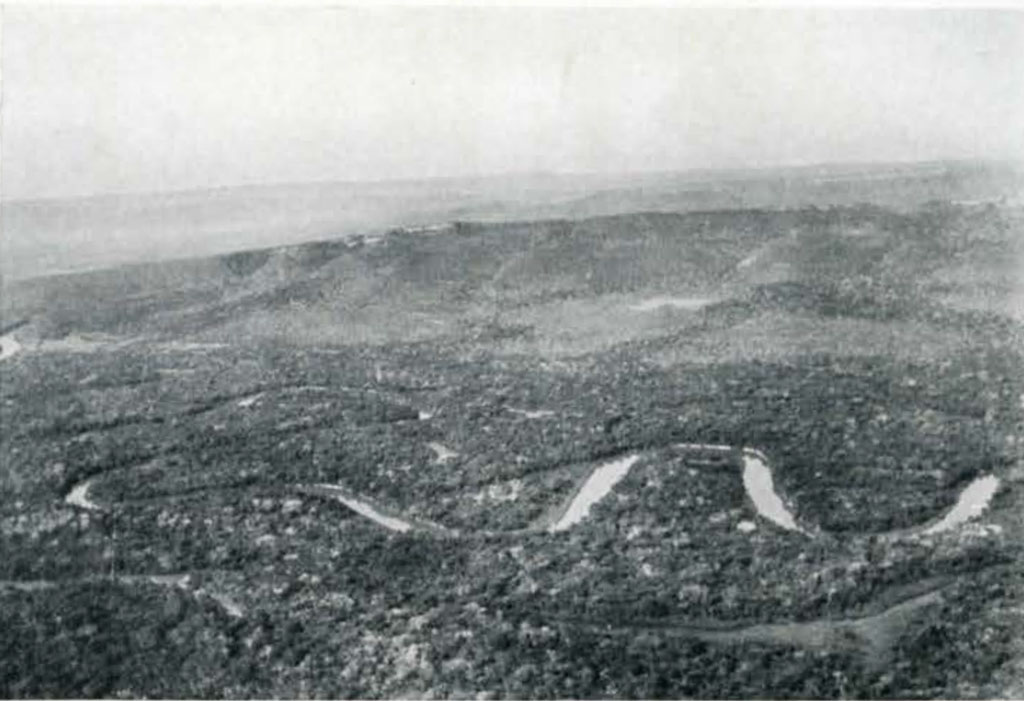
Image Number: 25629
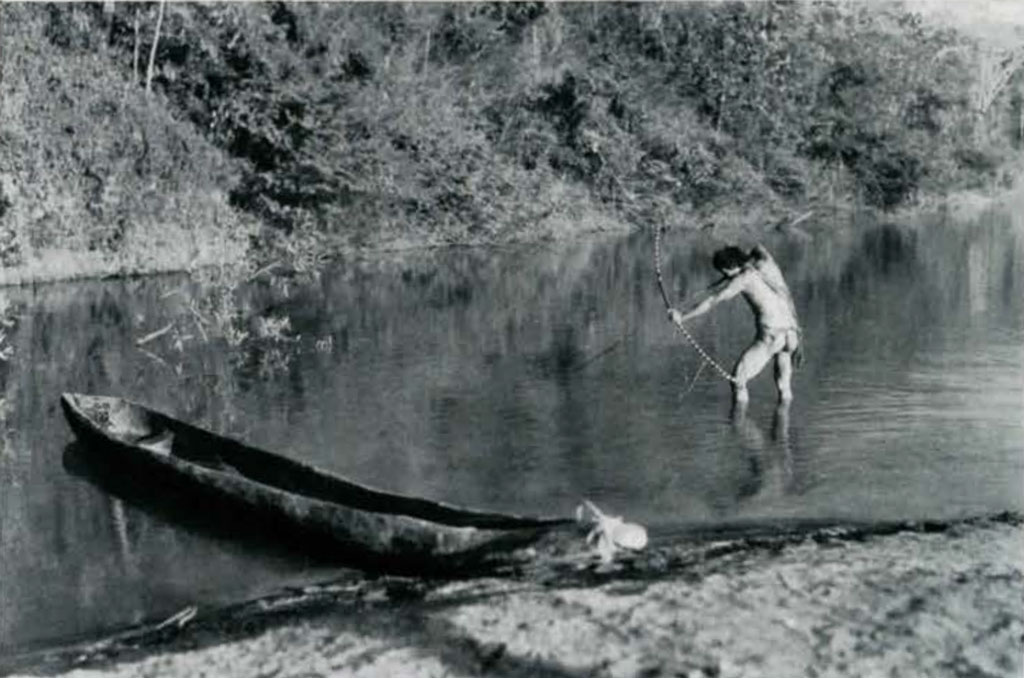
Image Number: 25686
The second dream drew many expeditions. For many years the hope was entertained—it still is entertained by some adventurers—that shipping could pass from the Amazonian waters to the Paraguayan, under the belief that Brazil was an island. In fact, the theory was not founded without being based on reasonable suppositions. At places the waters of the Amazon system almost meet the waters of the Paraguay, being separated only by a few miles, but the dream of free navigation beyond the headwaters of the Paraguay has never been realized. All of the vast rivers that flow northward to join the Amazon are broken by numerous falls, rapids and cataracts, making navigation impossible except with small canoes. Inspired by commercial projects as these early explorations were, there was loss of interest in the interior of Matto Grosso when the above fact was ascertained.
Thus a large portion of the vast territory has remained a great hinter-land, still little known and as difficult to penetrate as ever. In the popular literature it is often referred to as the land of lost civilizations, golden cities, fabulous gold mines, diamonds, death, hardships, terrible dangers, and unconquerable aborigines. In short, it is still largely the land of fable rather than a land of reality.
For opening the country, more than to any one else the scientific world is indebted to General Candido Mariano Rondon, who has devoted almost his entire lifetime to exploring the country and pacifying and protecting the Indians. He has led one expedition after another into the interior at great personal sacrifice. He has succeeded in instilling the same enthusiasm that characterizes him, in his assistants, to whom with characteristic modesty he attributes the success with which the expeditions have met. Without any practical laurels to reap, there has been sacrifice of health, and sometimes of life, in doing the country a service not always appreciated nor understood. The humane motive that inspired General Rondon and his subordinates to stop the inconsiderate treatment of the aborigines and to convert them into useful, productive citizens of Brazil, was too idealistic to meet always with the approval of the politicians. However, General Rondon has been successful even in overcoming this obstacle. So successful has he been in his contact with the aborigines that these same people, who a few years ago attacked his parties, have assisted him in building roads, and in putting up telegraph lines. Instead of being harassed by adventurers, these people are protected, taught and encouraged to develop their mode of existence as suits them best.
Matto Grosso is too vast a country even for such an exceptionally indefatigable worker as General Rondon to cover. A great deal of the work has been done by subordinates often leading expeditions into new and difficult territory. Major Ramiro Noronha, geographer, ethnog-rapher and humanitarian, has been the leader of expeditions in the northeastern portion of the state and the only one who has visited many tribes on the tributaries of the Xingu river. Yet the Inspectoria de Protecção aos Indios, of which General Rondon was the chief, and Major Noronha, the leader in charge of the Matto Grosso district, has not completed its work. There still are many regions to be explored, and many tribes to he pacified.
* * * *
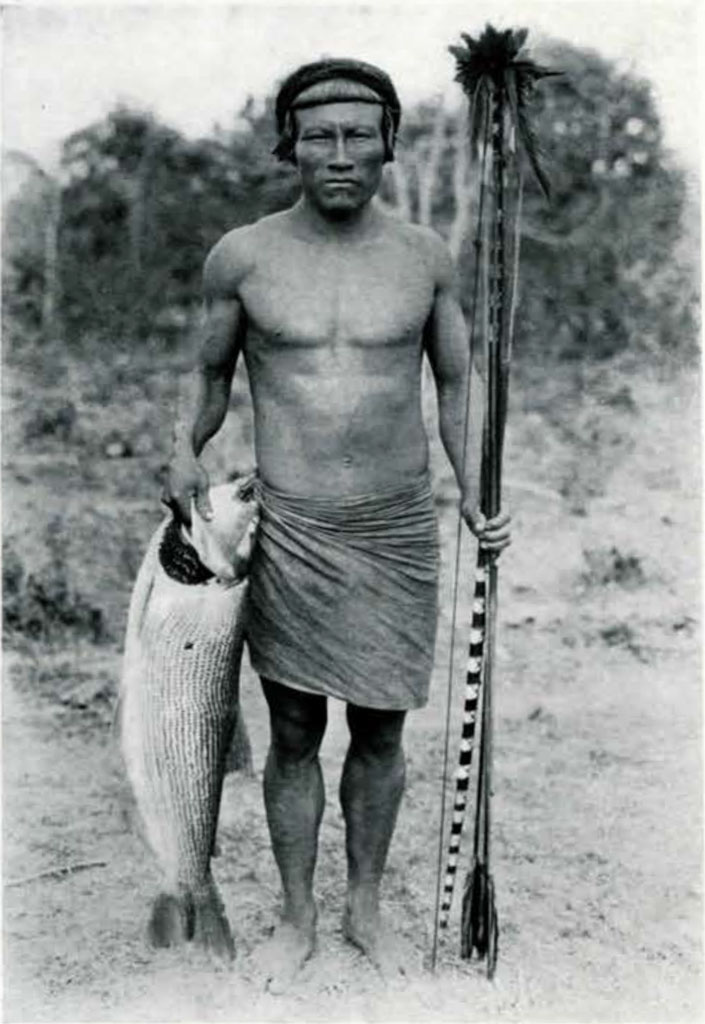
Image Number: 25687
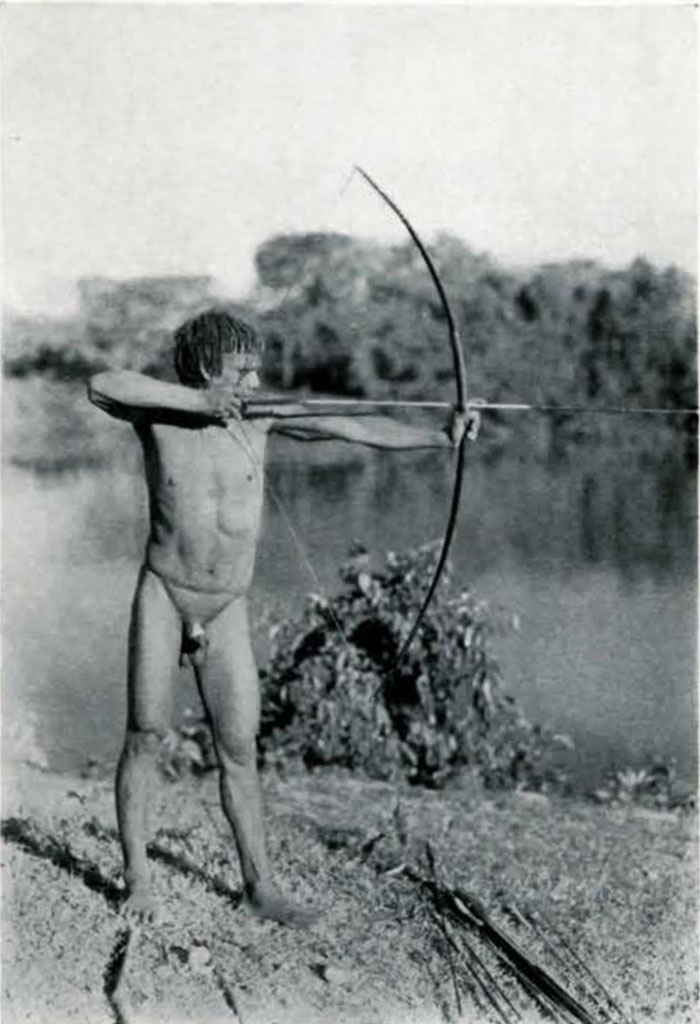
Image Number: 36733
Straddling as it does the Amazonian and Paraguayan drainage systems, Matto Grosso does not form a geographic unit, but is divisible topographically into three sections, each differing from the others in important geographic features. The south, drained by the Paraguay system, is low flat country subject to yearly floods which convert it into a veritable lake dotted with a few islands to which animal and human life retreats. At the height of the dry season this same plain becomes so arid that habitation is limited to the borders of the larger streams or the larger water holes. For the most part it is open grass country, with islands of jungle and palm groves to which the wild life withdraws during the day. Bordering the streams is found the thick and almost impenetrable jungle, presenting two solid walls of green vegetation transformed in season to walls of flowers. In this country, bird life is rich and varied; mammalian life is plentiful and attains unusual size, especially in the cat family, one member of which, the jaguar, attains the size of a female Bengal tiger; tapir, capivara, deer, peccary, and otter abound, as well as various species of reptiles which crowd the banks of the rivers during the dry season; fish of many kinds, including the notorious piranha, crowd the rivers. [Plates II, 2; III, 1; IV, 1.]
The central plateau area, the chapadão, is in direct contrast with the southern portion, the pantanal. It rises abruptly from the pantanal to some twenty-five hundred feet in a series of steps [Plate IV, 1]. It is an undulating, open, sandstone table-land, cut into segments by numerous jungle-bordered streams that are the fountains of the Paraguay and southern affluents of the Amazon. Flat-topped escarpments, constantly being undermined by the streams, break the monotony of the vast open expanse. These sandy and open wind-swept moorlands are covered with grasses, shrubs and dwarf palms. Though many species of plants may be found, there is no luxuriant vegetation. Likewise, animal life, though it may be varied enough, is not abundant.
Where the Amazonian waters begin to assume the proportions of rivers, the Amazonian forest belt begins. Conditions in certain features approximate those of the pantanal. Bird life is richer than in the chapadão, as is also mammalian and floral life. The rivers are likewise well stocked with fish, and as the pantanal originally was comparatively thickly settled, so is this part of Matto Grosso. The quantities of fish seem to determine the density of the population. Indian villages are found along the rivers quite closely together. It is this section of Matto Grosso that is poorly and in some parts totally unknown.
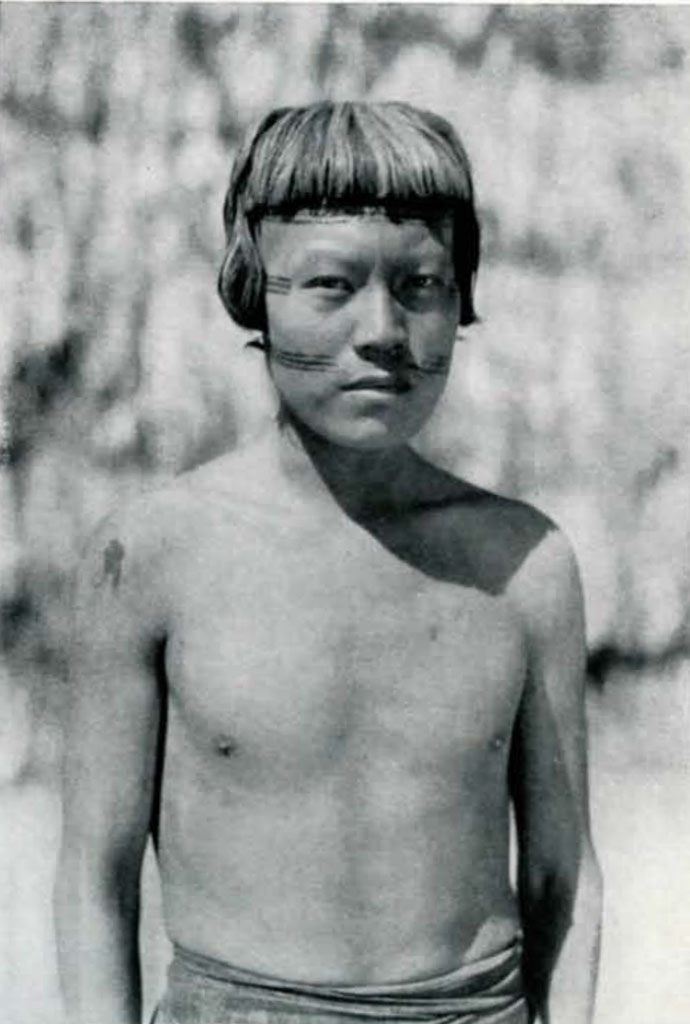
Image Number: 25677
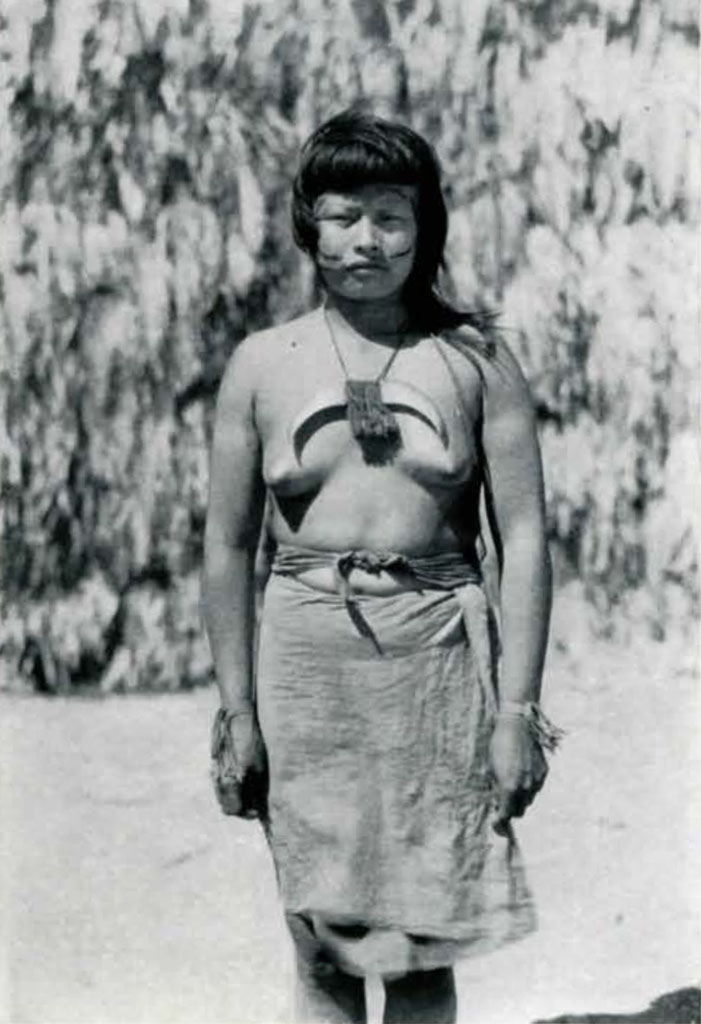
Image Number: 25673
Most of the southern part of the state is given over to civilized pursuits. The aboriginal peoples have practically disappeared, either having become exterminated or absorbed by the newcomers. From the time of the arrival of the earliest exploring parties, diamonds, gold and rubber have attracted the European adventurer, but now the main activity is cattle raising, though the search for diamonds still continues, especially at the headwaters of the Paraguay and the Araguaya rivers. A number of modern towns thrive along the railroad line, which runs from Porto Esperança on the Paraguay river, eastward. The most important cities are Cuyabá, the capital of the state, and Corumbá, the terminus of the shipping lines from Montevideo and Buenos Aires. S. Luis de Caceres is a typical frontier town, conservatively maintaining an atmosphere of the old colonial days. [Plate II, 1.]
Only the Eastern Bororo, on the São Lorengo, have survived the incur-sions of the white man. Pacified but a few years ago, they have been collected on reservations, where they still maintain their own culture. Pirigara, Corrego Grande and Rondonopolis, all on the Sao Lorenço river, are comparatively large settlements.
The Bororo da Campanha have almost disappeared, and there exist but a few families of the semi-nomadic Guató These are not of pure blood, having mixed with negroes and whites, and have practically forgotten their original culture. On the Taquary, a few Terenos have been collected in a settlement.
At Barra dos Bugres a few Barbados remain. Their pacification has been completed and they are making rapid progress under the tutelage of the Inspectoria.
Further north the Paressi and some Nhambikuaras live in settlements along the telegraph line. The Paressi have shown great adaptability for Brazilian culture.
The Inspectoria maintains other posts, in various parts of the country, but at places like Pedro Dantes it has not succeeded in establishing permanent settlements. [ See map, Plate XXV.]
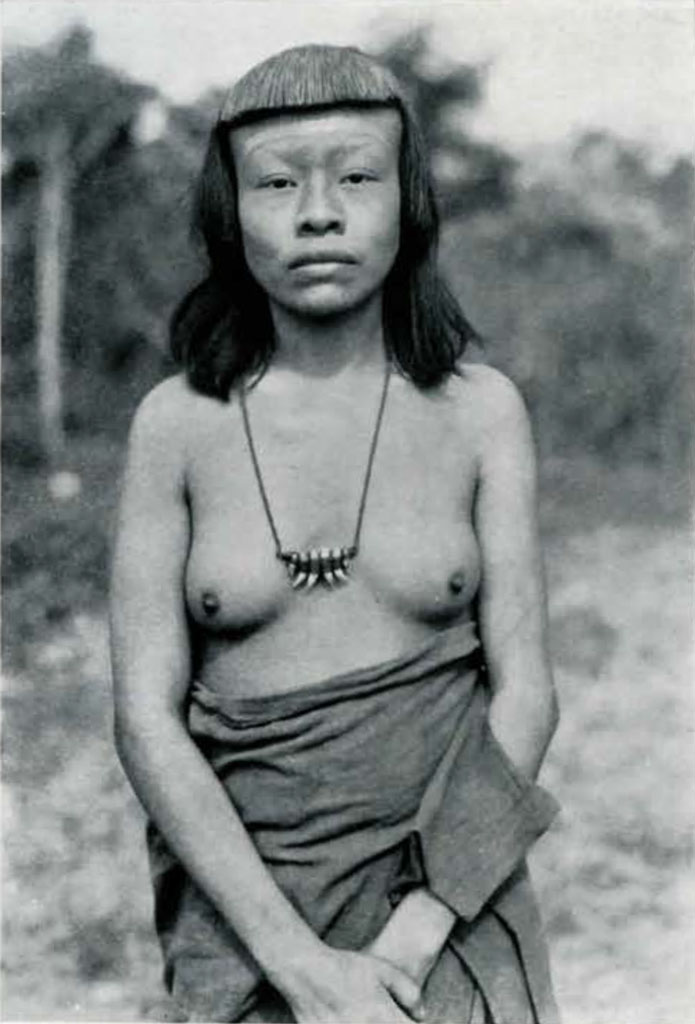
Image Number: 36726
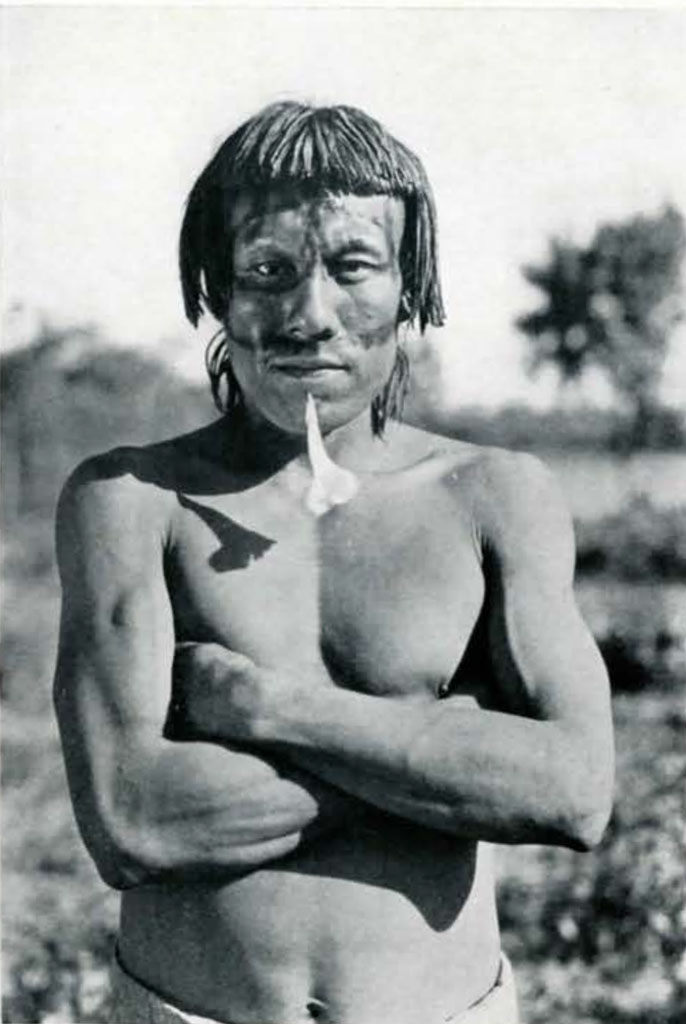
Image Number: 36725
Descavaldos, a cattle ranch situated about two hundred and fifty miles north of Corumbá, on the west bank of the Paraguay river, was chosen by the Matto Grosso expedition as its headquarters. It offered advantages of possessing abundant animal life, the study of which was one of the projects of the expedition, of comparatively good communication with the outside world, and localities rich in archaeology. Unfortunately the aborigines have practically disappeared from the region. A few Guató families still hunt in the marshes to the south, and a Bororo da Campanha village is within a day’s ride of the port of the ranch, but its acculturation has gone so far that there is little left for the ethnologist. A few Chiquitos from time to time came from Bolivia, generally with rubber, over the road which probably has been taken by many migrating tribal groups, moving eastward or westward, for Descavaldos is the end of the natural road leading from the Andean Highlands. For this reason archaeological excavation there is of special interest.
Though a narrow-gauge railroad connects Rio de Janeiro with Porto Esperança on the Paraguay river in the southernmost portion of Matto Grosso, the more convenient way of entering the country for an expedition burdened with tons of baggage is by the Paraguay river. On reaching Montevideo from New York, the baggage can be transferred to a large and surprisingly comfortable river boat, and in two weeks Corumbá is reached. For this part of the journey the traveler would do well to equip himself with a hammock and mosquito net of fine mesh.
To the naturalist, the territory flanking the Paraguay river still offers interesting material, but to the ethnologist, unless lie leaves the boat and penetrates to the interior, especially to the west, there is little. The original inhabitants of the territory have given way to the Argentinian, Paraguayan, Bolivian, Brazilian and even the American. The country has been turned to the raising of cattle, or to various manufacturing projects. The world war hastened the process of transformation. With the need of meat in Europe, the country saw boom times, relics of which are deserted pretentious-looking buildings and equipment. However, small groups of aborigines can still be met at the ranches or the factories.
Whether met in groups or singly, the aborigines that are close to the ranches, towns or factories, show the usual effects of acculturation, which very often results in reducing culture to almost nothing. For example, at Puerto Pinasco were found a hand of Angaité, presumably employed to round up cattle for the factory. In the brief time spent with them, no vestige of their own original culture could be discovered. Living in abject poverty under wall-less shelters made of strips of corrugated iron, hits of cloth, and grass, wearing filthy clothing which was hastily donned on our approach, they seemed to have retained nothing hut their language. Some Chamacoco and Lenguas that were met presented the same degeneration. However, it is said that when they withdraw to the interior, which is done seasonally, they revert to their own ways.
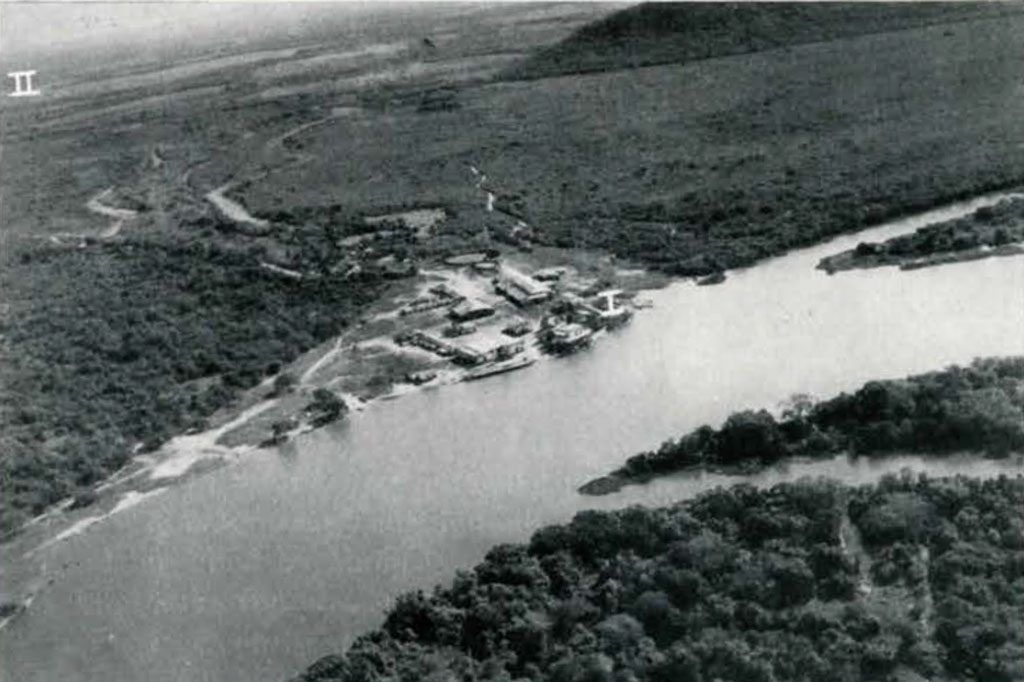
Image Number: 25626
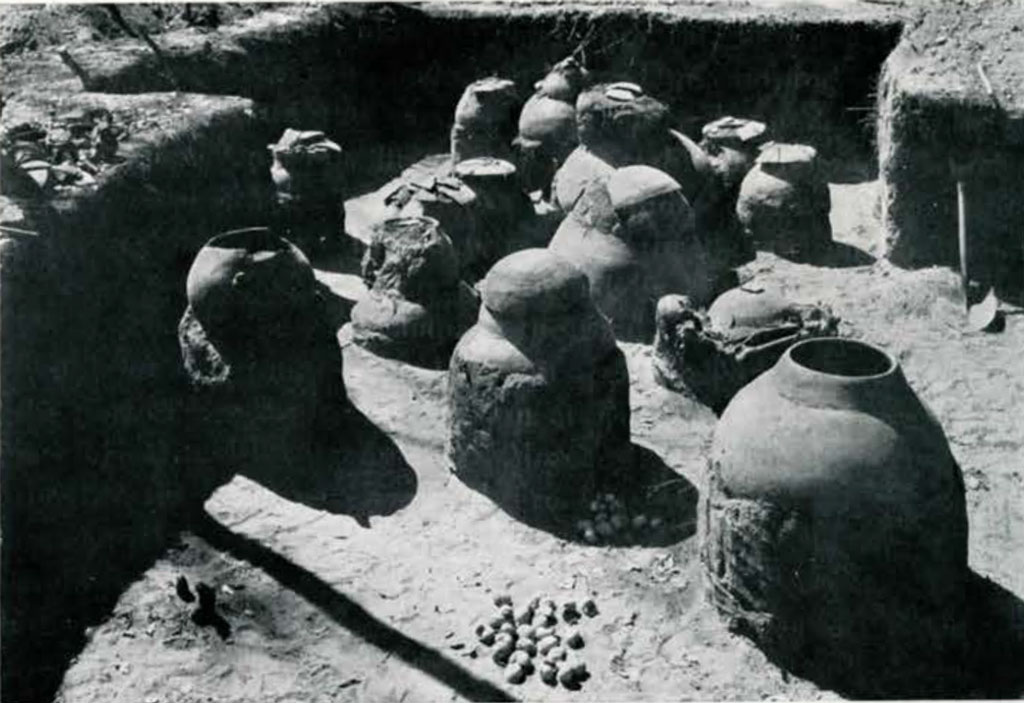
Corumbá, which was reached in the middle of February, is a modern, comparatively busy port depending on commerce for its existence. The large boats from Buenos Aires or Montevideo leave their merchandise at Corumbá, where it is loaded on smaller wood-burning steamers, to be taken to S. Luis de Careres or to Cuyabá. It is also the real terminus of the railroad line running to the coast from Porto Esperança. [ Plate II, 1.] An air line has for some years been established between Corumbá and Cuyabá, reducing a journey of several weeks to a few hours.
While the expedition proceeded to Descavaldos in a small boat and three barges, I flew to Cuyabá, in order to present my credentials to the government and to arrange with the Inspectoria de Protecção aos Indios matters pertaining to my field work. The absence of Major Ramiro Noronha from Cuyabá did not make possible the achievement of my motive. However, since General Rondon, who had received me in Rio de Janeiro, had been good enough to send a telegram presenting me to the authorities at Cuyabá, the records of the Inspectoria were placed at my disposal. The presence of Professor Max Schmidt of Berlin at Cuyabá was a fortunate occurrence. So little is known about the interior of Matto Grosso that the opportunity of conversing with Professor Schmidt and of the Inspectoria field men was indeed a fortunate one. Later, on my meeting Major Ramiro Noronha, and on the reception of a telegram from General Rondon giving the desired permission to enter the Indian territory, Major Noronha, whom I found in Cuyabá on other visits, placed at my disposal and at the disposal of the expedition personal knowledge, especially of a geographical nature, which proved invaluable.
Perhaps a word ought to be said concerning the attitude of the Inspectoria in respect to foreign expeditions. On arrival at Cuyabá I discovered that it was forbidden to visit any of the aboriginal tribes without special permission from the government. It developed that in recent years a number of foreign expeditions, under the guise of having scientific and humanitarian purposes, well supplied with credentials from pretentious scientific societies, membership in which can be had simply by subscribing to some publication, and often with political recommendations, have applied for entrance to the interior of Brazil. They have been received courteously and often every facility at the disposal of the government has been theirs. Subsequently have appeared sensational articles describing the terrible hardships encountered, and the scientific results have never been made public other titan from the popular lecture platform, or have been published in some kind of adventure book. In many cases both the Brazilians and the aborigines have been maligned, and hardly ever is it mentioned that the Brazilian government did all in its power to help the expedition. This modern ‘exploration racket’ has justly aroused the ire especially of the Inspectoria de Protecção aos Indios, and the attempt is made to keep all foreigners out of the Indian country, unless it is proved without a doubt that the purpose is scientific. An expedition of the above kind which sensationally visited the country a few years ago was well remembered at Cuyabá, and its antics unquestionably caused us much delay. However, when the Inspectoria was convinced of our sincerity, it cooperated with great courtesy and sympathy.
Archaeological Excavations at Descavaldos
Early in April, I returned to Descavaldos, and immediately began excavating the first archaeological site on the west bank of the Paraguay river. The water was so high at this time that traveling overland was impossible. Descavaldos was literally an island, and the project of sampling numerous archaeological sites further inland, the location of which I had learned from the natives, had to be abandoned. Intermittent heavy rains threatened to destroy what was uncovered, and the untrained work-men made progress slow at first.
As soon as the water subsided somewhat, another site was opened some five miles away to the north of the first. This site was covered with jungle which had to be cleared. In the place of rains, we had to contend with peccarys and wild cattle. The site differed strikingly from the first in the types of burials.
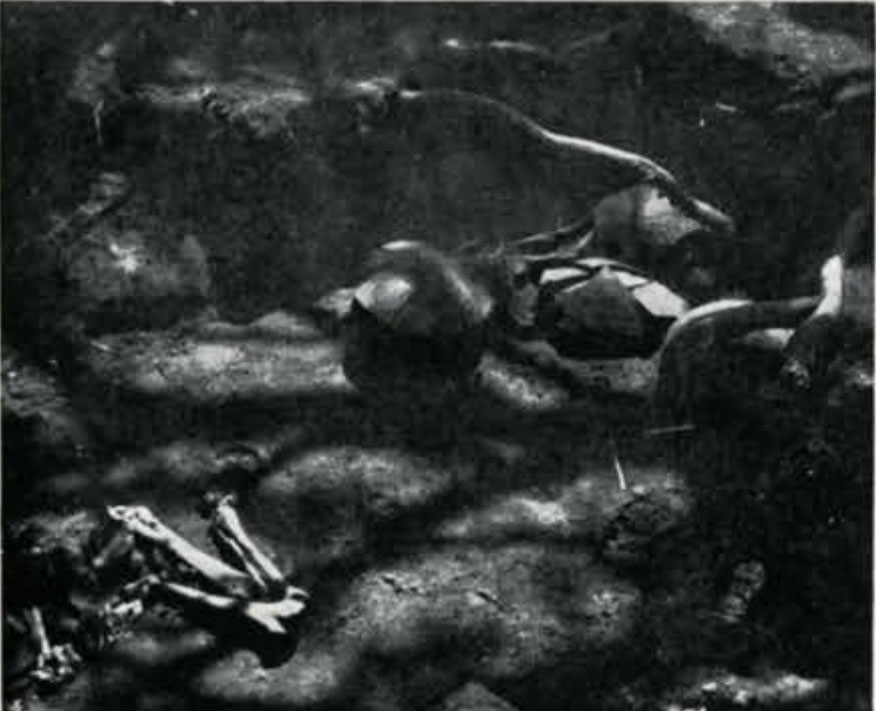

Image Number: 27512
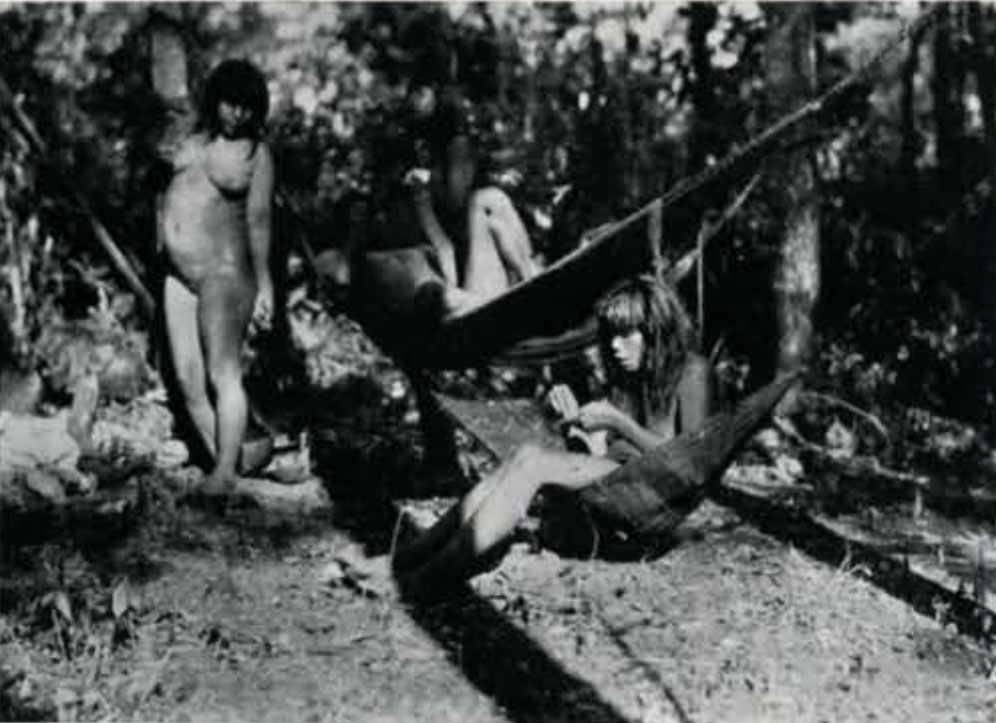
Image Number: 27568
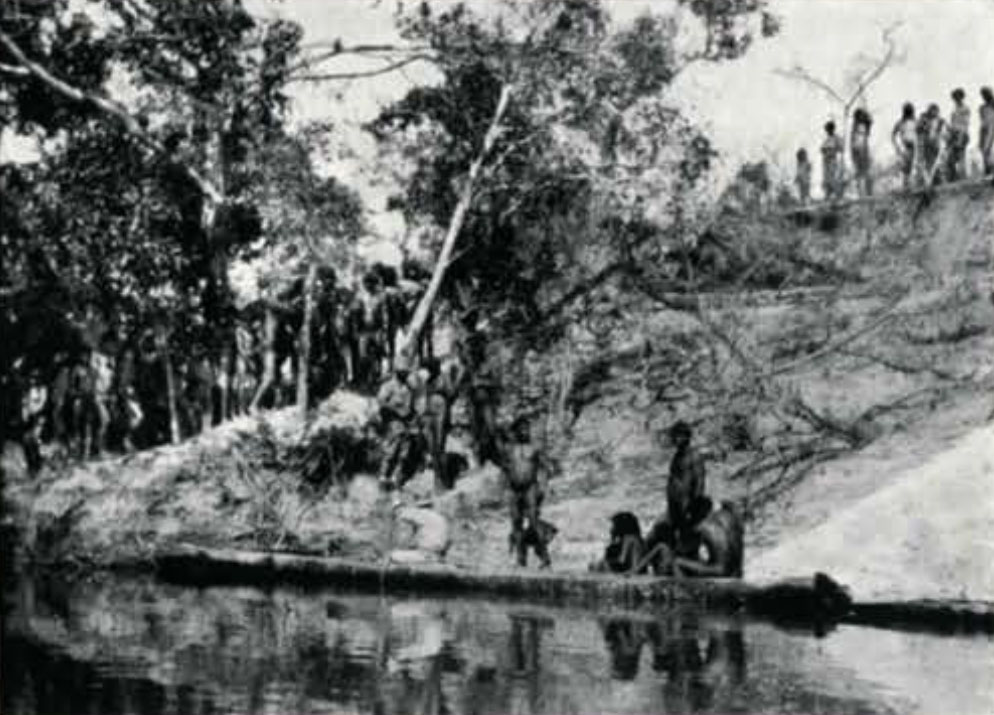
Image Number: 27576
With the exception of the hills of Dourados, the country between Corumbá and S. Luis de Caceres is pantanal, with here and there a hill or range of hills rising abruptly from the level lowlands. Between Dourados and the Jauru river, the Bolivian border and the Paraguay river, is the vast ranch of Descavaldos, which is larger than Belgium in area, with many thousands of cattle roaming its meadows and an insignificant number of people to testify to its existence as a reclaimed land. Wild life is more abundant than the cattle, demonstrating its great tenacity in comparison to human life. Its original human inhabitants have gone, and new ones, Brazilian, Paraguayan, Bolivian, German and American, have taken their place. A mere handful of Boron), who are so only in name, remain where there were once thousands.
But the ranch is rich in archaeology. Its aboriginal population planted in the ground some phases of its culture which have withstood the action of water and other destructive elements. There are numerous localities where the archaeologist can recover some of the products of the arts of the now-extinct tribes. The newcomers to the land have not left these undisturbed. In the making of caña and in keeping it afterwards the large funeral urns that can be so easily gotten from the ground have been found to be excellent receptacles. In the making of new pottery, it has been discovered that the clay of the old mixed with the fresh preparation, gives it a better temper. The result of these two useful discoveries has been the ruthless excavation of a number of sites in a most destructive way. Fortunately the area is a vast one and the population very sparse, and archaeology is to be found everywhere, so that the scientist can still tap fresh and undisturbed sources.
It has been known that urn fields are plentiful in the region, and Max Schmidt also discovered petroglyphs in the hills of the Morro do Triompho near the Ilha de Caracaras. The natives also report the presence of mounds or tumuli, from one of which at Agua Verde. located on the Descavaldos ranch, the specimen shown in Plate XIX, 3 is supposed to have come, according to the lessee of the territory. It had been planned to visit the Morro do Triompho and the hills of Dourados to search for petroglyphs, and also to excavate one of these mounds. Climatic conditions interfered, causing the abandonment of these projects, for when the waters were high it was impossible to reach the desired localities, and when they had withdrawn, ethnology was occupying my attention.
As has been mentioned, in the early months of the year the expedition was practically marooned on what was virtually an island, the port of Descavaldos, where most of the ranch buildings are located. At one time it was a prosperous and thriving settlement, having in addition to the buildings for the officials of the company that owned the ranch, a number of rows of houses for the ranch hands and their families, a factory, warehouses, power plant, hospital, church, and school house. Today the empty, crumbling buildings and rusting machinery attest to its past grandeur. Where hundreds led a busy and gay life, only a few score have remained.
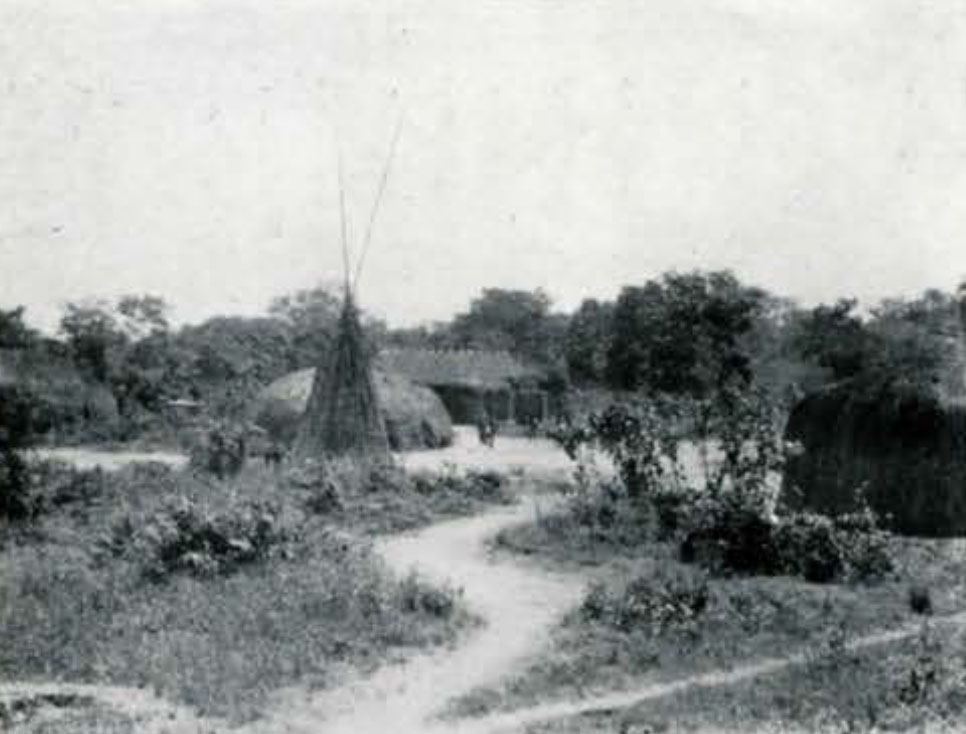
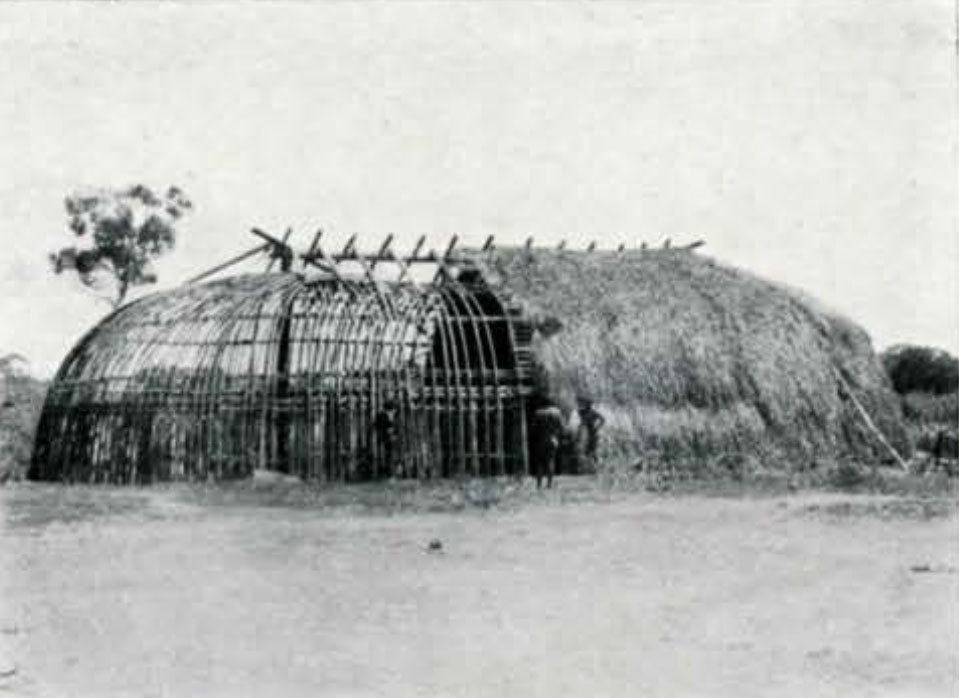
Image Number: 40469
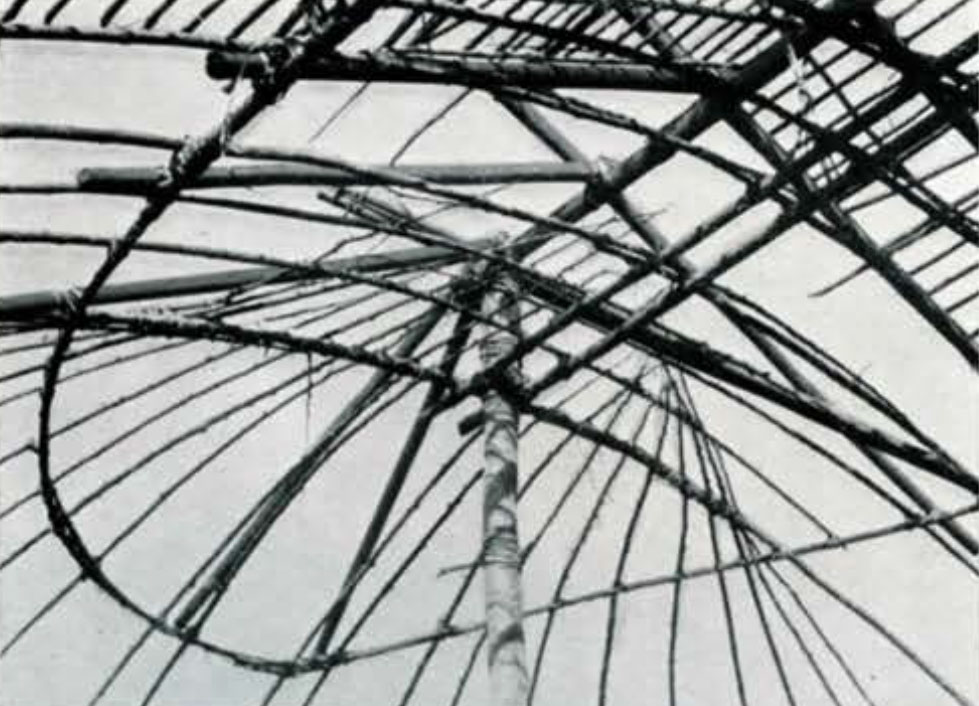
Image Numbers: 40480, 40481
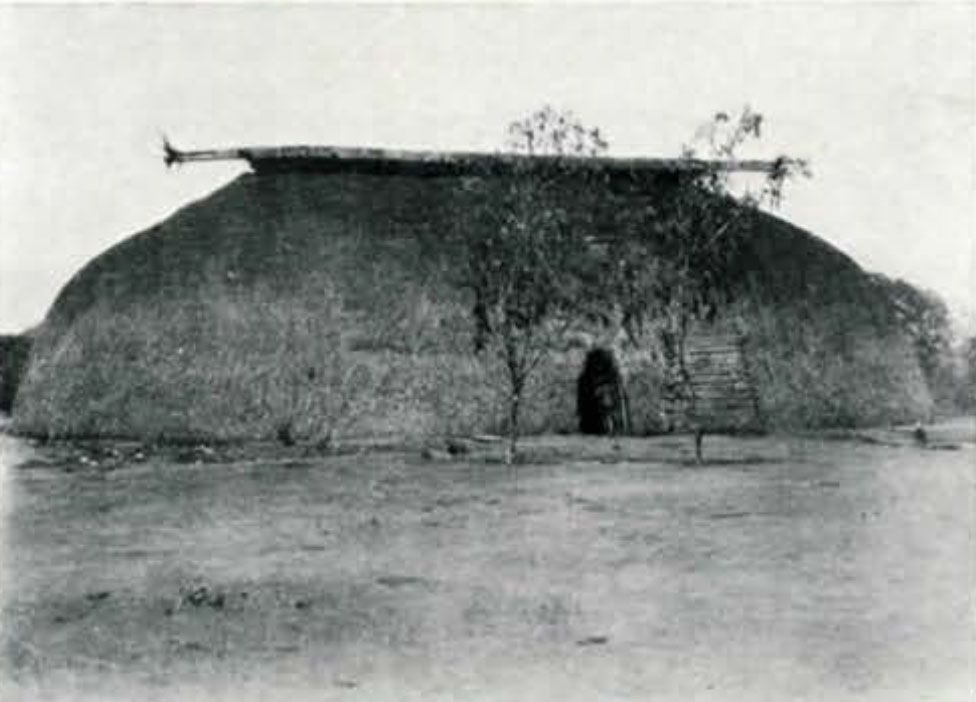
Image Number: 40470
Cemetery I
[Plates VIII, 1; IX, 1, 21]
The settlement was built on an extensive aboriginal cemetery, whose limits have not been established as yet. For many years archaeological material has been brought to the surface by workmen, but no systematic excavating has been done, though the site was tested by Max Schmidt. While digging a fence ditch, members of the expedition came upon some interesting material, and work was stopped awaiting my arrival, and after that event the withdrawal of the waters, before continuing further.
This section, which was subsequently excavated, is between a row of houses and the waters of a lagoon that sweeps in from the Paraguay proper. At the commencement of the work early in April, it was no more than twenty meters from the water’s edge. The buildings, fences, and a large tree that we were not permitted to remove, interfered with extending the excavation in desired directions, after the work was gotten under way. When work was stopped two trenches perpendicular to each other had been made covering twenty-two square metres of ground, at an average depth of one and one-half metres.
For the work, men were drawn from those on the ranch, men accustomed more to the saddle and work in connection with cattle, rather
than such a careful and meticulous occupation. However, after it became settled in their minds that the objects uncovered were of importance and interest to me, they made excellent helpers.
Surface Finds
Over the entire area on which the buildings are built, potsherds are found in great quantities, but other artefacts are rare. The withdrawal of the water after the flood season often exposes objects, and several interesting pieces were found on the very edge of the bed of the Paraguay, indicating probably that the river has shifted its course since the time that the land was held by the aborigines, a not uncommon thing for the rivers of Matto Grosso to do. One such piece is a broken, polished, thin celt of limy chert. It is two centimetres in thickness, eight centimetres in width, and ten in length [Plate XIX, 1].
Most of the potsherds are of no value, since they show no decoration and no technique different from that of the pottery that is to be found below the surface. Several pieces show impressed string pattern decoration.
A grooved, heavy, polished celt was found on the surface of the section excavated. It is shown in Plate XIX, 2. It is badly and unevenly made of quartzite of coarse texture.
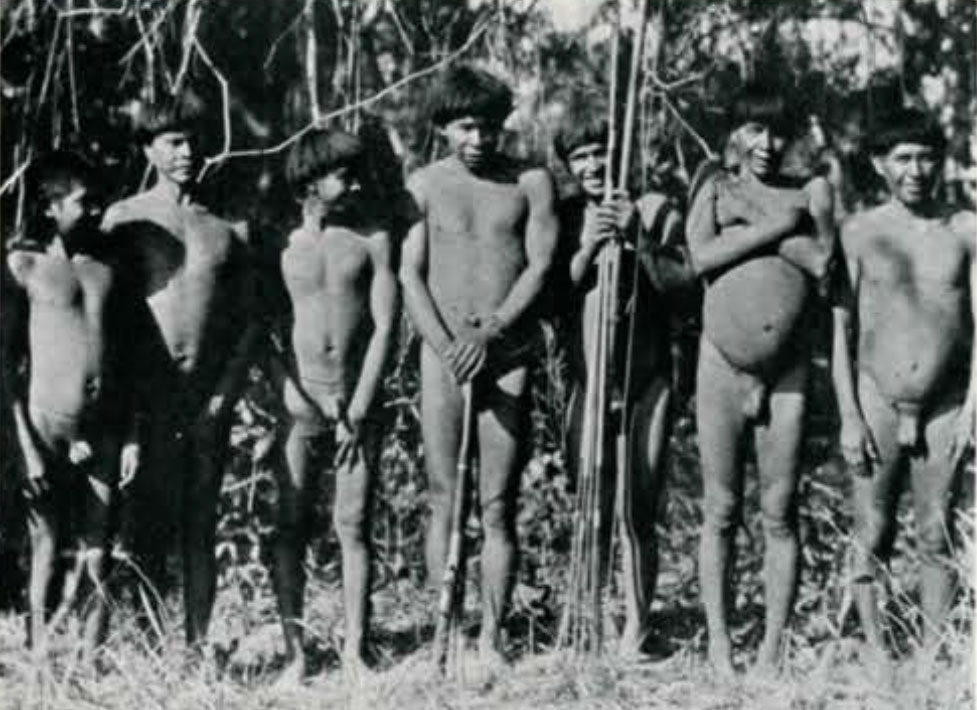
Image Number: 27556
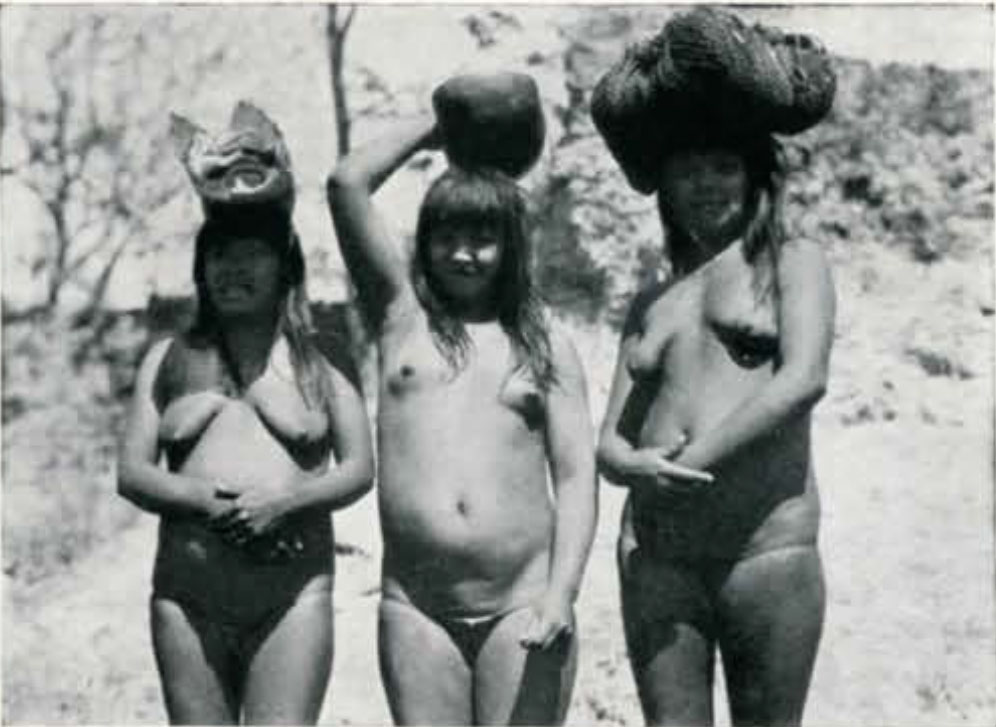
Image Number: 27555
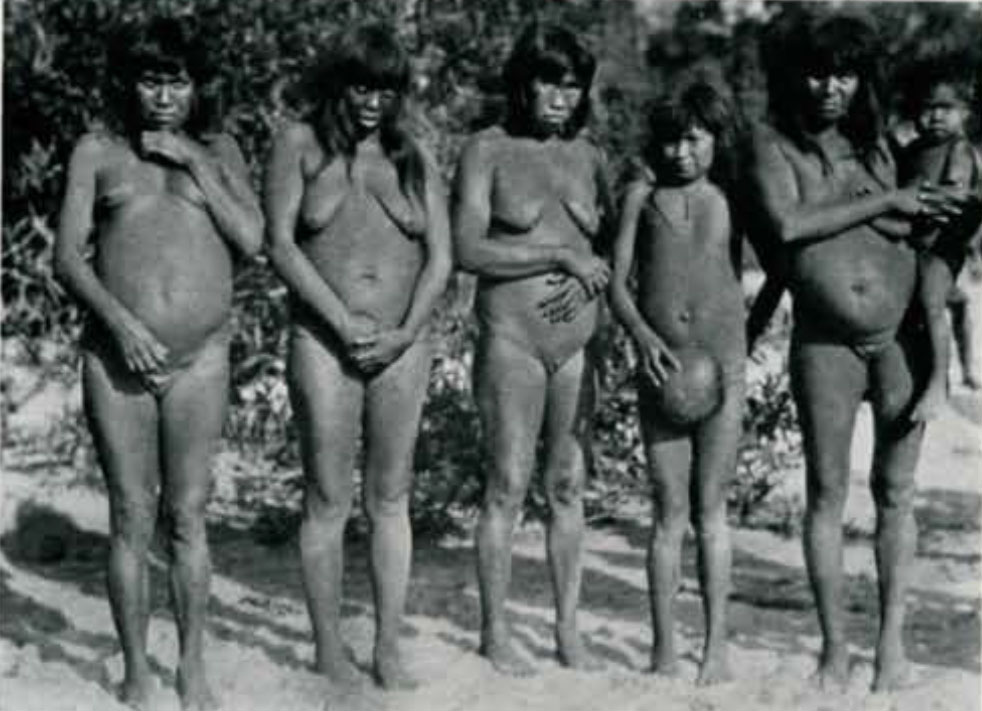
Image Number: 27560

Image Number: 40494
A polished, grooved, round fragment, measuring five centimetres in diameter and eight centimetres in length, may have been the upper part of a pestle. Another piece may have been used as a hammer stone.
At all levels between thirty centimetres below the surface and the floor of the excavation which was the top of the hard pan, were found burials, most of which were badly preserved. The action of water, and roots of the tree, and probable disturbance during the construction of the buildings, had broken many of the pots and damaged the skeletal material.
The hard pan was struck at an average depth of one and one-half metres. At several places, with much labor, it was excavated to a depth of ten and fifteen centimetres, but this brought forth nothing. Lack of time stopped further investigation in this direction.
No evidence of any geological stratification appeared on the walls of the trenches, so that the dating of the site is impossible by this means, except to say that it is of a recent date.
The site yielded abundant pottery, shell and teeth ornaments, but very little skeletal material could be preserved with the materials that we had. However, several skull caps, one skull minus the lower mandible, and a skeleton minus the head have been brought out but have not been studied by a competent person as yet.
Scattered everywhere, and sometimes definitely associated with the burials, were found a large quantity of aquatic shells [Pomacea australis (Orbigny)].
So close together were some of the burials that in some cases they overlapped. Though not enough burials were uncovered to determine this without further question, from what was found, there is indicated that the burials were grouped. In order to make the description easier to follow, the term `unit’ has been adopted, referring to a find that is considered to be separated from the others, though it may originally have consisted of more than one burial.
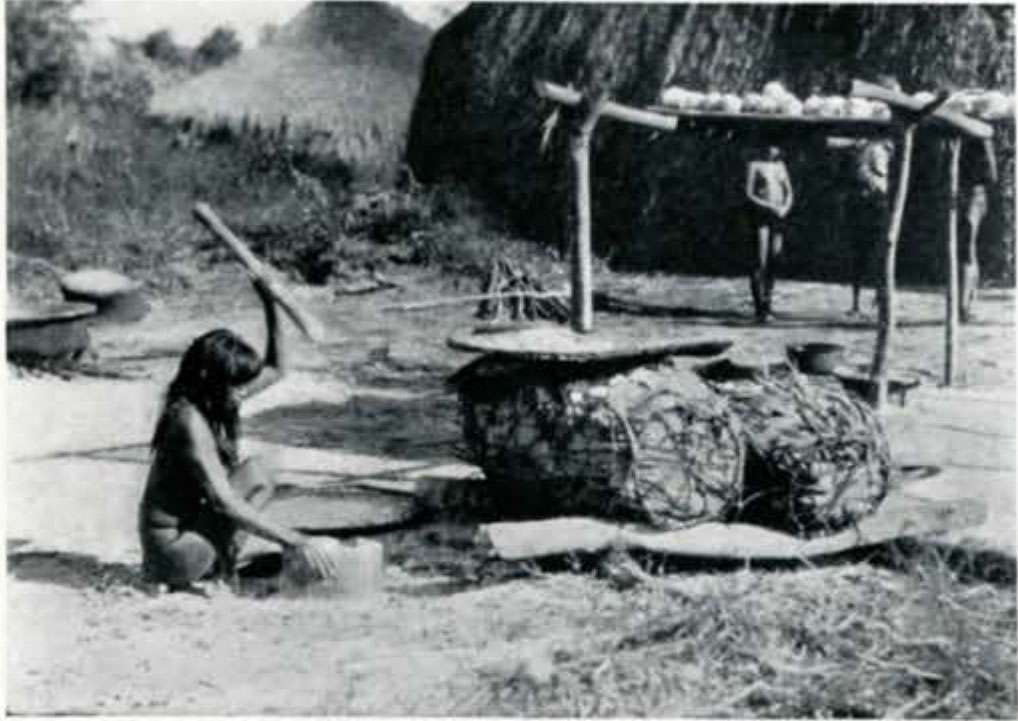
Image Numbers: 27657, 41278
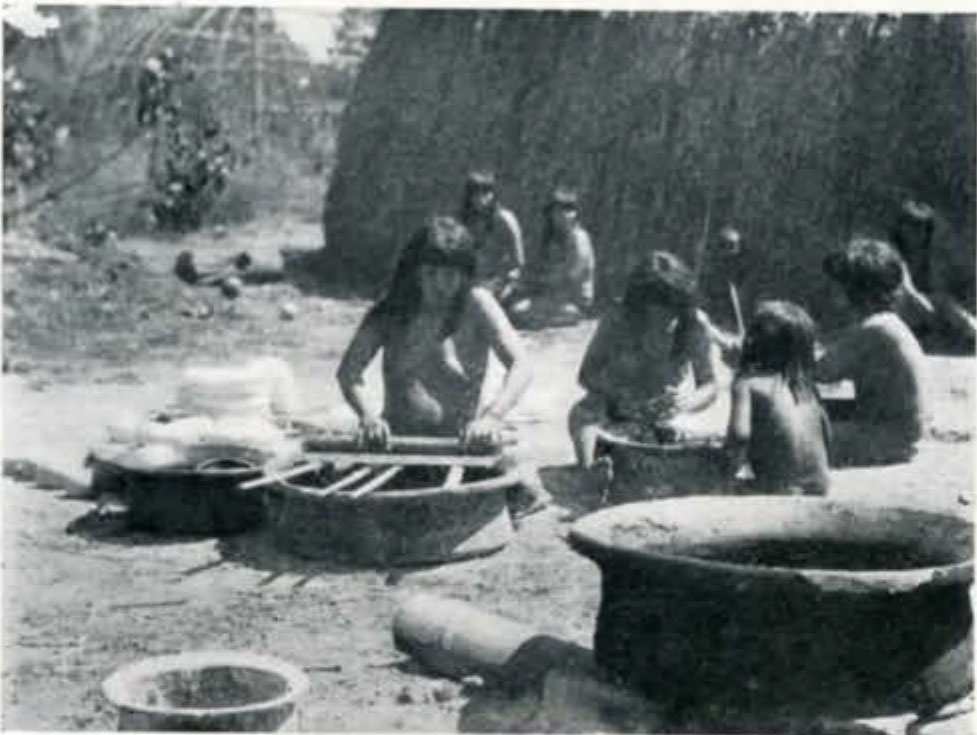
Image Numbers: 40468, 40482
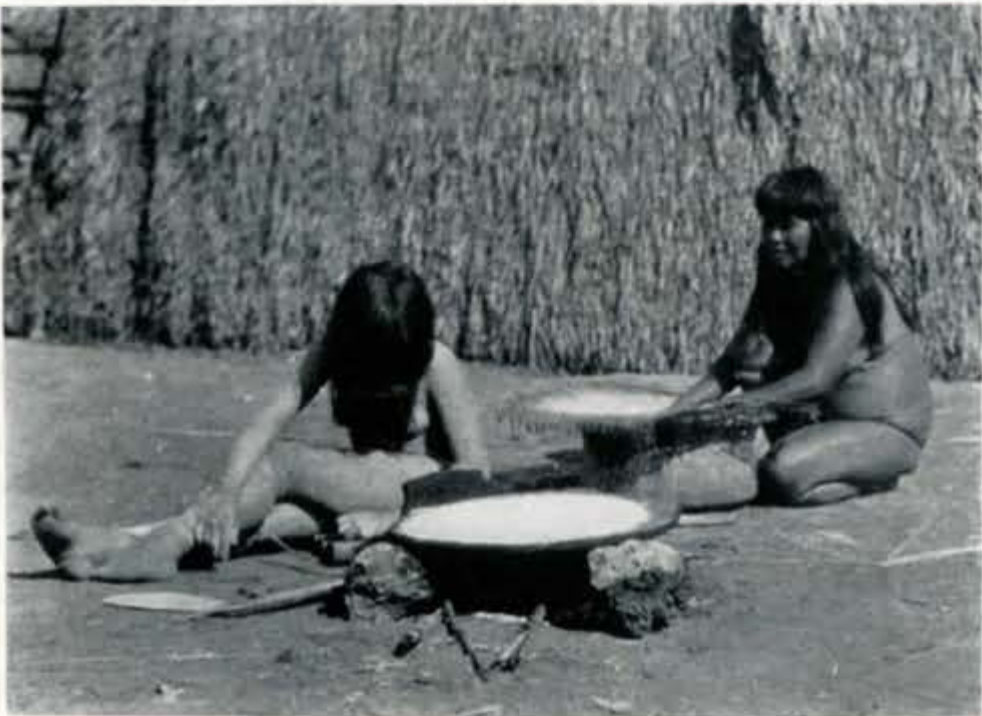
Image Number: 27669

Image Number: 27676
Unit A
At a depth of thirty centimetres there was uncovered an inverted yellow pottery bowl, but slightly damaged, measuring about thirty centimetres in diameter and ten in depth. There are marks on the surface which indicate that it was made by the coiling technique. On the whole it is poorly made, and bears no decoration of any kind.
Underneath it were found a number of small, fragile mussel shell beads and perforated monkey teeth. No bone fragments of any species were associated with this unit. However, the presence of the teeth and beads is good evidence that originally a skeleton had lain under the bowl. In all probability it was that of a very young child, the fragility of the bony material accounting for its disappearance under the climatic conditions.
Unit B
This unit was located at a slightly lower level than A, and about a metre away from it. It consisted of an inverted pottery bowl, slightly smaller than the bowl in A, of red ware, in excellent condition. On its removal it was discovered that it had been covering another bowl of elliptical shape which rested on a skull. It was found that this second piece fitted the top of the skull exactly, so that it must he concluded that it was made for that purpose. The skull rested on its base, facing the southeast. It was that of a young person, and its bones were poorly preserved. In spite of all the care that was taken, most of it crumbled when the attempt was made to remove it.
At the base of the skull and close to it were several shells, and also perforated teeth, a few long, cylindrical jasper beads, and the fragile mussel shell beads that were found with A. In addition there were a few long bones of some bird or mammal, which because of their fragility could neither be taken out nor identified.
Unit C
A badly preserved skull, at a slightly lower level than B, and at a distance from it of one and one-half metres. It was not protected by any pottery, and no artefacts were found associated with it. It was the skull of an adult.
Unit D
About a half metre away from C appeared an inverted bowl of approxi-mately the same size, shape, and workmanship of A. Under it were some unidentifiable fragments of bone and some mussel shell beads. Being on the same level as C, this unit may very well have been a part of the C burial, shifted and separated from it subsequent to the interment, by the action of the water and other disturbing elements.
Unit E
At a depth of half a metre and about two metres away from D was uncovered the skeleton of a child, unprotected by any pottery. The child had been placed on its back, the knees drawn up to the chest, the lower Ieg doubled on the femur. The greater portion of the skull had disintegrated, but a few teeth remained. All of the bones were badly damaged and could not be preserved. No grave furniture of any kind was found in association.

Image Numbers: 40486, 41278
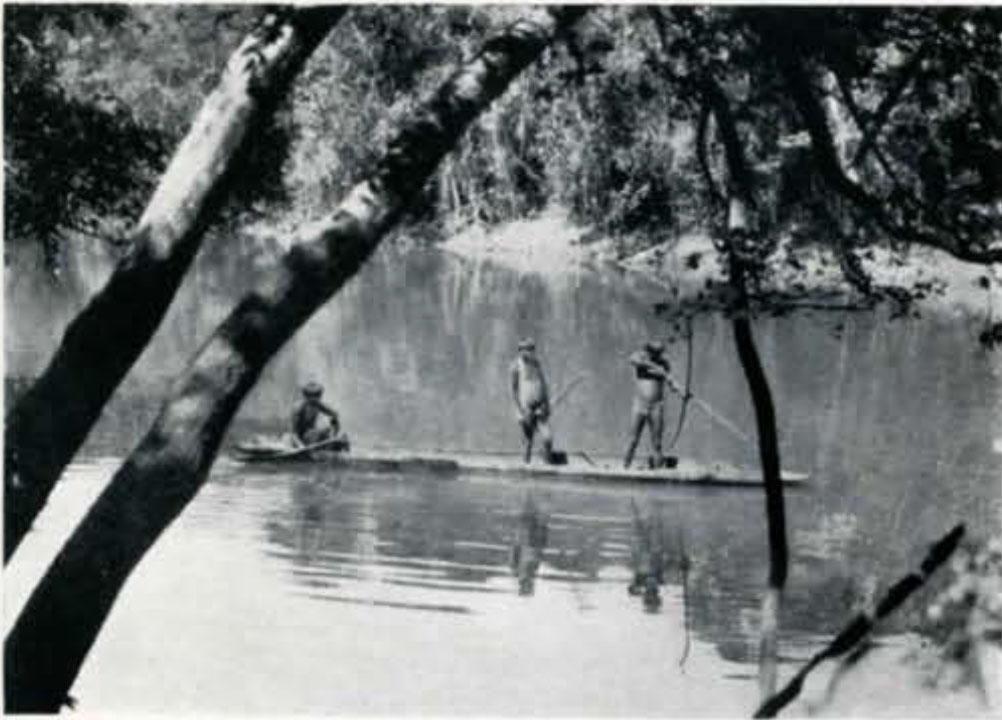
Image Number: 40483
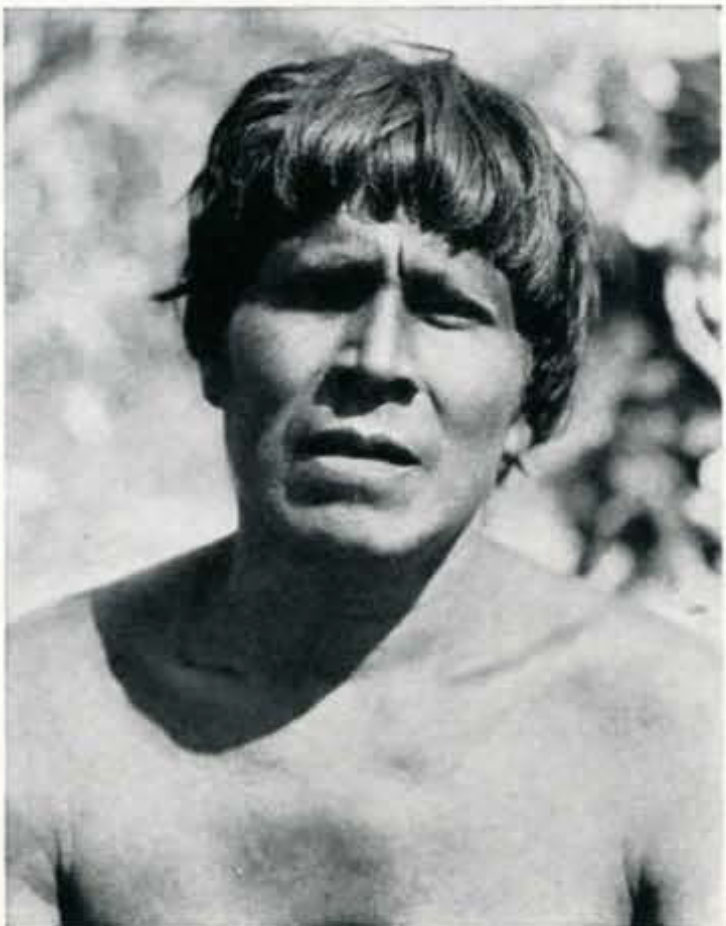
Image Number: 27563
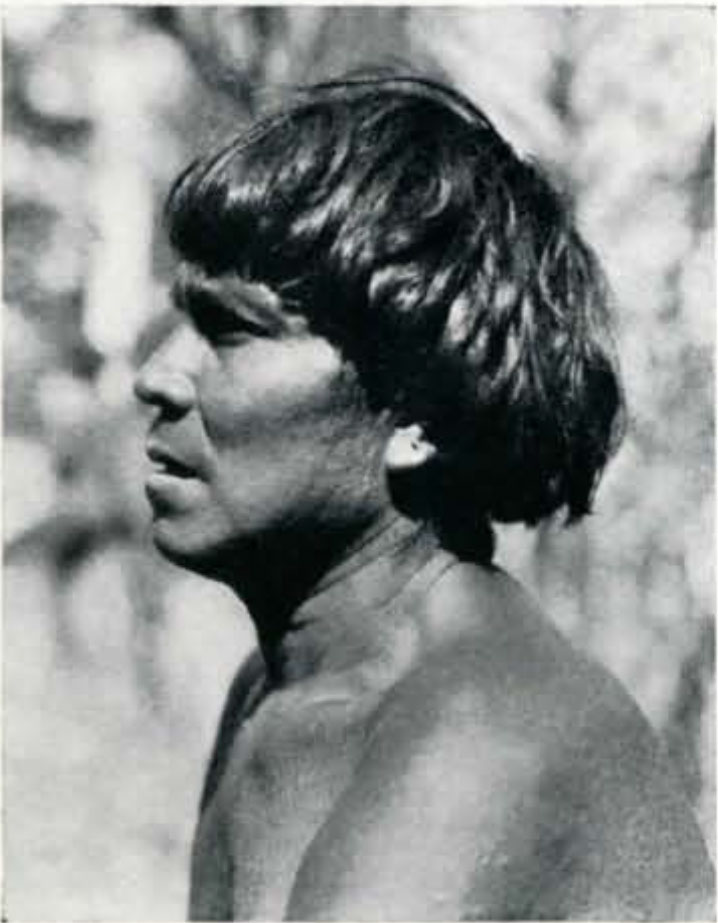
Image Number: 27625
Unit F [Plate IX, 2]
Work stopped from progressing in the direction taken by D and E, by the foundations of a wall, the trench was extended in the other direction from A and later swung to the right so as to be at right angles to the original trench. In this new section were uncovered a number of over-lapping burials, which, though badly preserved, nevertheless added considerably to the material.
About two metres away from A were a group of overlapping burials in the same level. After clearing away the debris, burial F was isolated and was found to be in a fair state of preservation.
This unit was first revealed as three inserted bowls, all badly broken. On their removal a skeleton of a young person was uncovered, lying on its back, its head slightly turned to its right, its knees drawn up and outward, and its feet together, thus forming with the legs a diamond-shaped figure. It was orientated northwest to southeast, with its head to the northwest.
Extended at its right side, with the fragments of the skull partly resting on it above the pelvis, was the fragmentary skeleton of some small mammal, probably a monkey, also carefully covered with a pottery bowl.
The skeleton, besides occupying such an odd position, showed other peculiarities. The head was large, and judging from the formation of the teeth it must have been an individual past puberty. The hones of the legs, in contrast, were puny, being both thin and short. Around its neck and chest, still in position, perforated teeth were found, in such a quantity that the bones were entirely hidden by them. On their removal a still greater quantity of small perforated shell discs, in position so as to make any other inference than that they formed a necklace impossible, were about the neck and extended partly down the neck. A good number of the same cylindrical jasper beads were scattered among the perforated teeth and the perforated discs.
The small skeleton of the mammal likewise was adorned with a necklace of the same cylindrical jasper beads.
Several aquatic shells were found associated with the burial.
No other artefacts of any kind could be found.
Most of this skeletal material has been preserved.
Unit G
Close to the left of the head of F, a number of burials must have existed, but we found only debris consisting of potsherds, beads, perforated teeth and bone fragments. One small pot was preserved whole, but it was found to he empty. It may have belonged to unit F originally. It is a small, globular pot with a broad rim decorated with impressed string patterns, similar to the decoration found on the surface potsherds already described.
Unit H
This was located about one and one-half metres away from G, and at the same level. It consisted of a well-preserved adult skeleton of large proportions, lying on its right side, the knees drawn up to a sitting posture, the lower legs flexed on the thighs. The skull could not be located. No pottery or any kind of ornaments were associated with it: hut it did present a new feature in that at its back was found a cache of piranha jaws and teeth. The body lay in an east to west line.
Unit I
A number of burials were uncovered about a metre away from H and to its right. They conformed to the general type. Four pottery bowls, badly damaged, covered skeletons, one of which occupied an extended position on its back. The other skeletons were so damaged and so mixed that little information could be gotten. There was total absence of any ornaments, but the shells described above were also associated with this group. The bone material was that of children.
In addition to the above finds there were recovered from accidental excavations nearby a skull minus the lower mandible and a skull cap. They have not been studied as yet.
* * * *
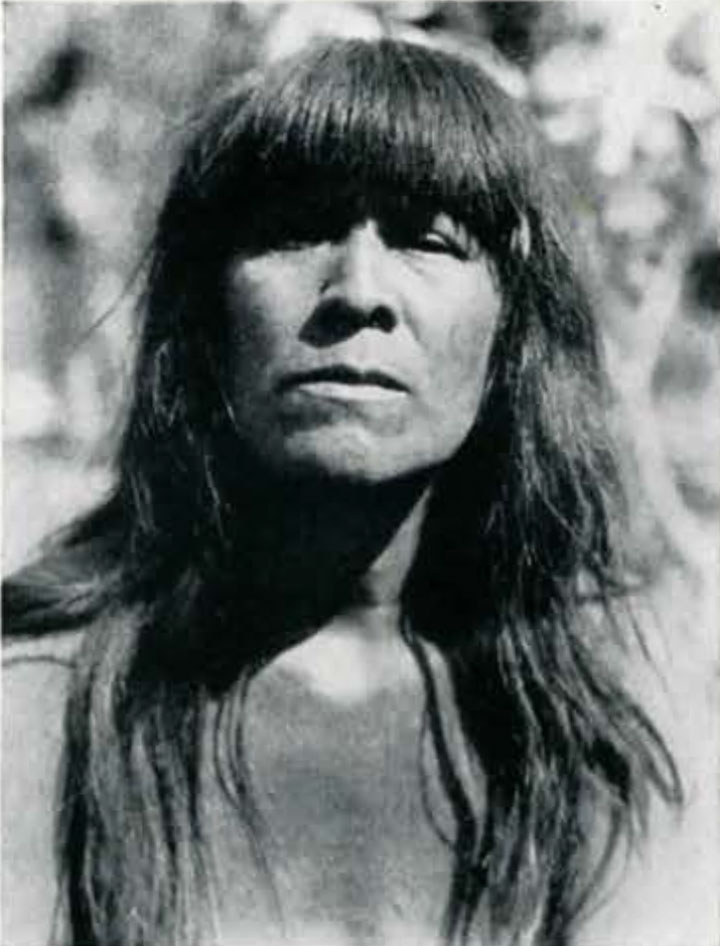
Image Number: 27626
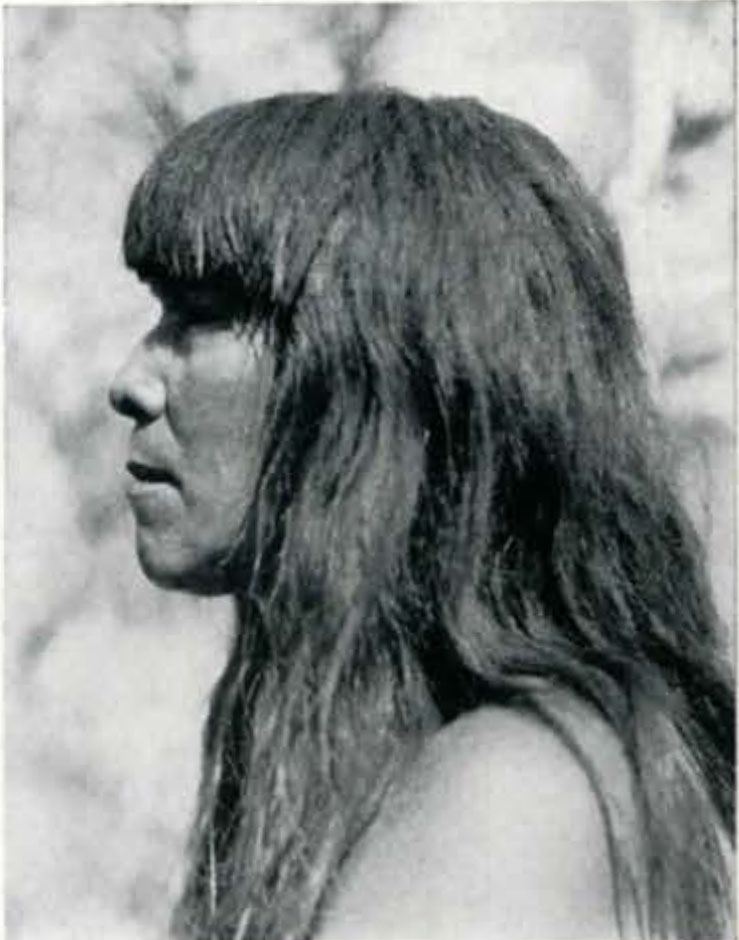
Image Number: 27626
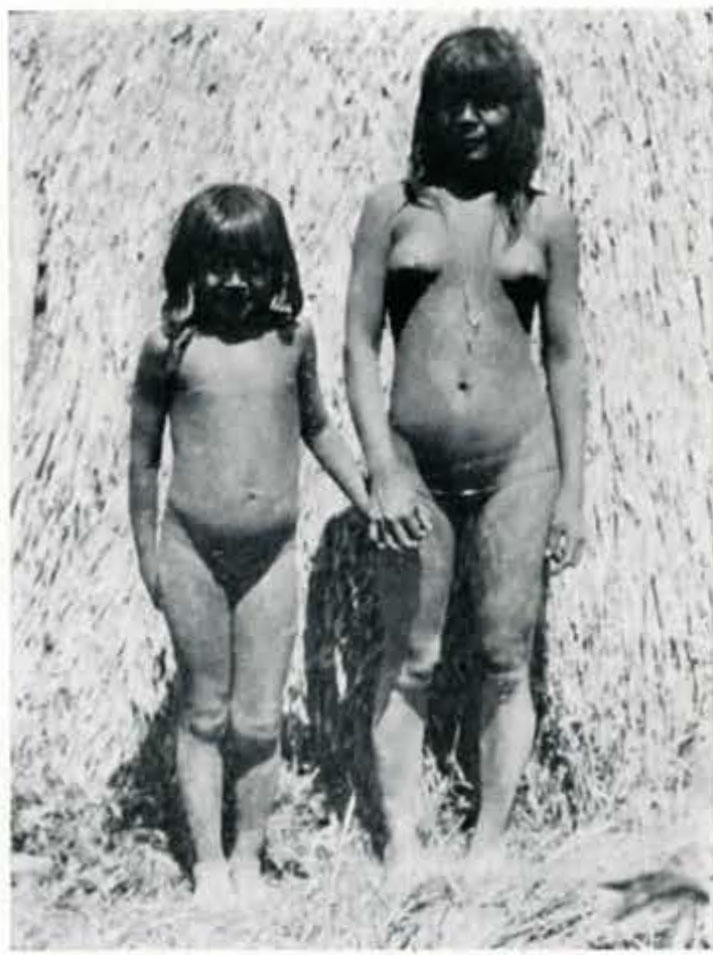
Image Number: 27635
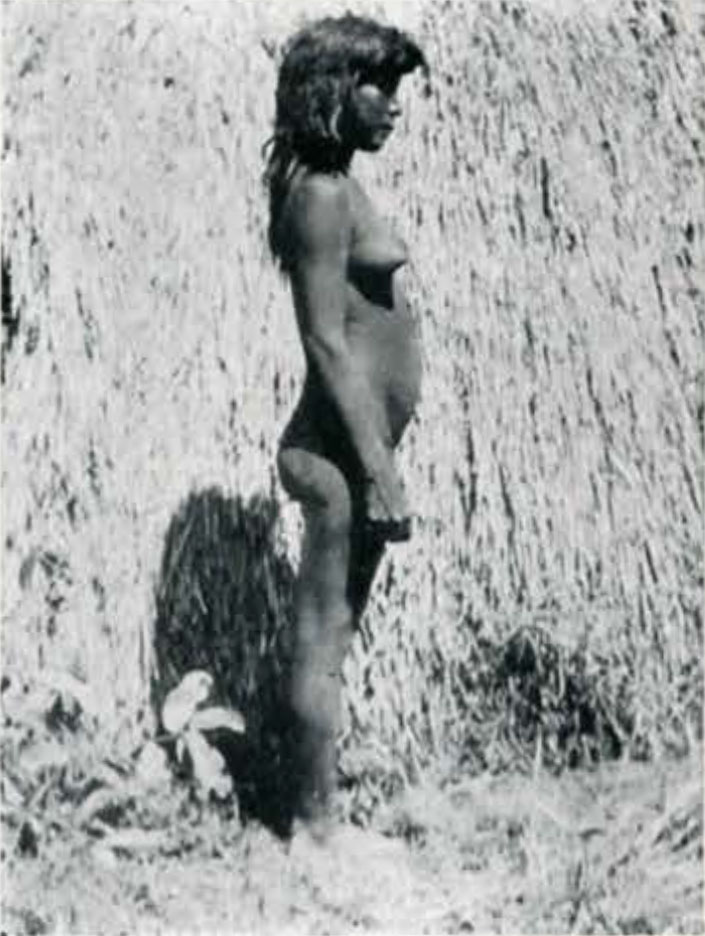
Lacking any geological data on which to base an estimate of its antiquity, it is significant that no artefacts of European origin were found in the excavation.
Though most of the skeletal remains were those of children, it cannot be inferred that the site is a child cemetery, when it is remembered that infant mortality is especially high among primitive peoples.
The method of burial for children seems to have been a simple interment protected by pottery. Ornaments such as the children wore were placed with the bodies.
Of these ornaments, the perforated shell discs are still very common among the tribes of the upper Xingu which were visited later, but were not found either among the Bororo da Campanha or the Bororo of the Sao Lorenco valley. The mussel shell beads and the cylindrical jasper kind are not to be found among the Bororo or those groups mentioned above.
The method of burial of the Bororo is radically different from what was revealed in this excavation, leaving no doubt that the cemetery must antedate the occupation of the territory by these people.
The piranha is associated in magico-religious concepts of the tribes of the Kuluseu-Kuluene region. Its jaws and teeth find practical application by all of the aborigines, being used as scrapers, or cutters. The cache of piranha jaws and teeth thus becomes meaningful.
The body was not buried always in the same position. The site revealed that it was placed sometimes on the side, and sometimes on the back, with the legs flexed at various degrees.
All of the burials were unquestionably primary, judging from the articulating position of the bones. No marks of any kind were found on the skeletal material.
The pottery is of poor quality, being of coarse clay and badly fired. The decoration that was found on several potsherds and on one small pot was impressed string pattern. The pottery ware is different from that made by the Bororo.
The lithic industry is too poorly represented to permit any conclusions. What was found is polished, and badly made. Its scarcity suggests that it was not a major industry in the culture represented. However, the stone, if not the artefacts, must have been imported from the highlands of the west or the north, since there is no stone in the region.
Cemetery II
[Plate VIII, 1, 2]
About five miles to the west of Cemetery I, and the port of Descavaldos. is located Cemetery II, part of an extensive archaeological site whose limits have not been determined. The land is slightly elevated from the rest of the pantanal, so that during the floods it forms an island, but at the height of the dry season it remains partly surrounded by a large lagoon which is connected with the Paraguay only by marshes. When the water is high it can be reached by canoe from the Paraguay. It constitutes an ideal location for a native village, in that it is situated in the pantanal where game is plentiful, it is close to the river, though hidden away and protected by swamps, and it is always close to good water. The site is completely covered with thick jungle growth.
The same men that excavated Cemetery I were employed on Cemetery II, and they proved very ingenious in solving the new problems that arose, in clearing the site, in excavating and in transporting the archaeological material to the port.
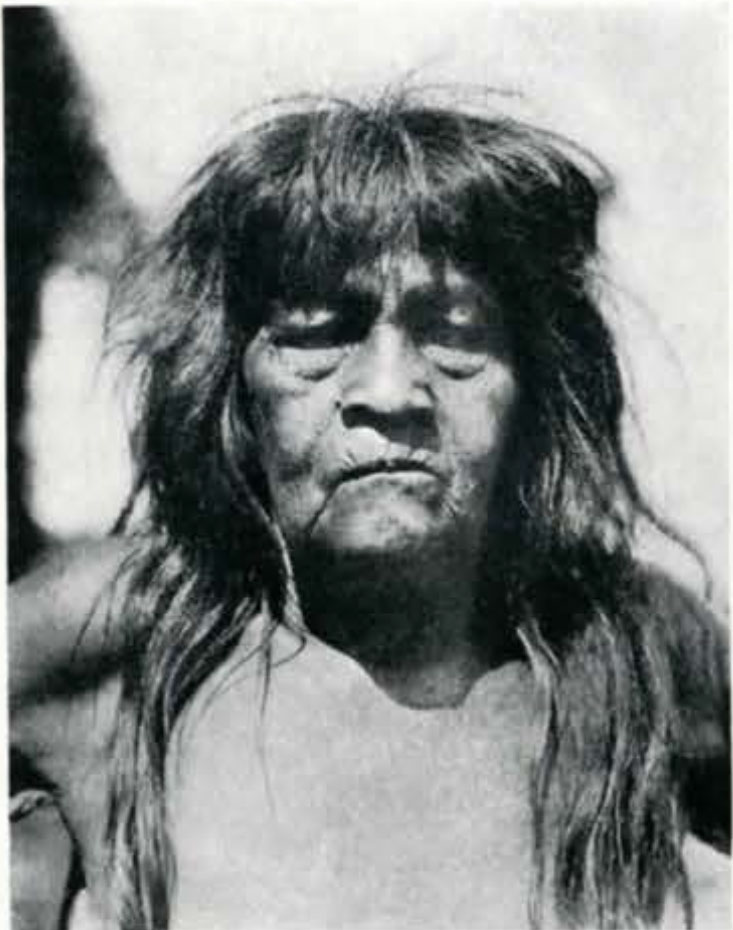
Image Numbers: 27594, 27595
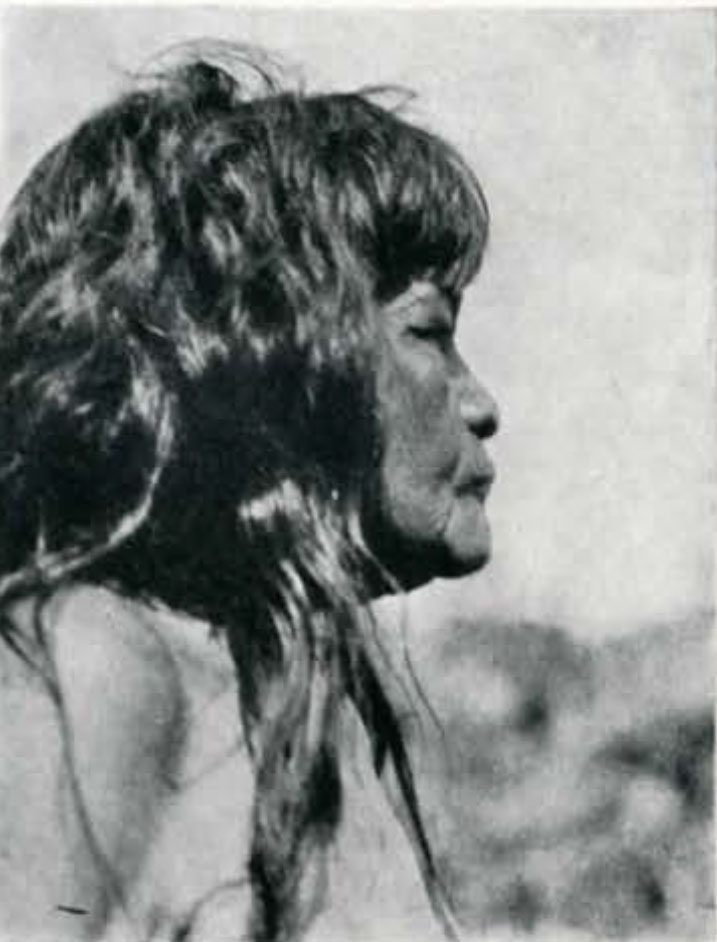
Image Numbers: 27594, 27595
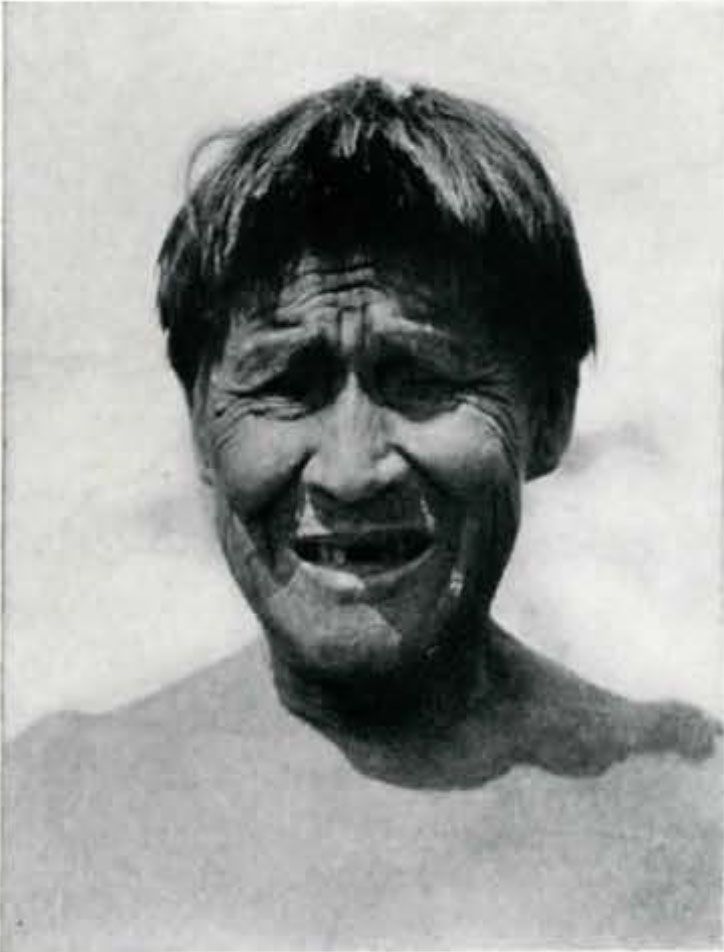
Image Number: 40484
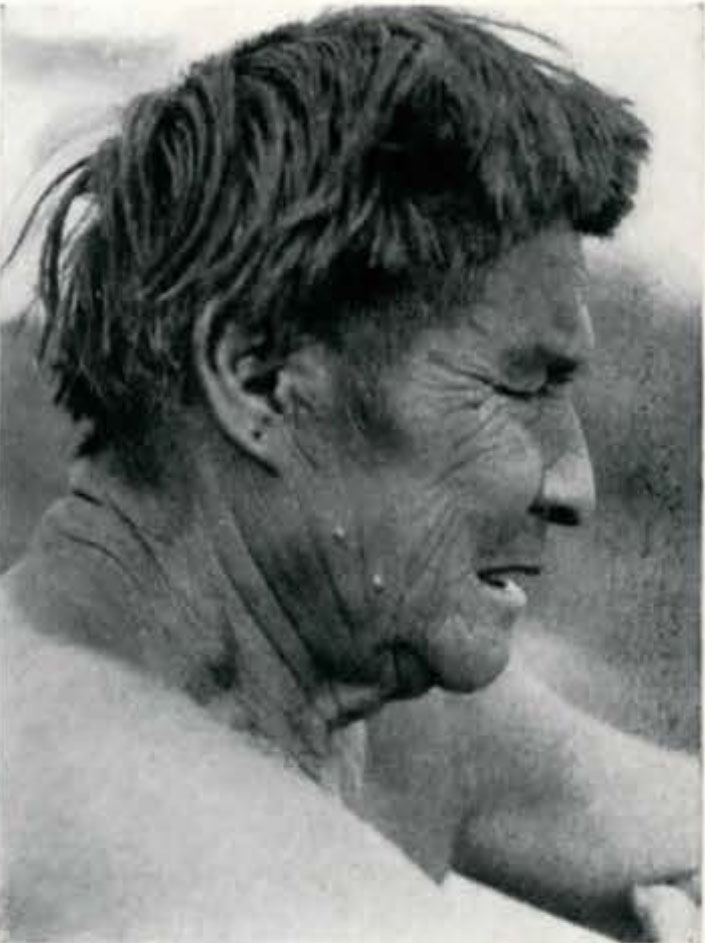
Image Number: 40479
An area seventy-five by twenty-five metres was cleared of all under-brush, and staked out in five-metre squares. Though this did not include the entire site, it was enough for our purposes. On the removal of the vegetation, clusters of rocks were found scattered about. In every case such clusters marked the location of a group of funereal urns. Another way of determining fertile places employed by the natives was to stamp on the ground. If this happens to be done over an urn a sound like beating a drum is produced.
At several places the site had been disturbed by the natives and ranchers, who sought to excavate the large urns intended to be put to domestic use. They had not been always successful in taking out whole pots, as several broken urns attested.
It was so late in the season that rains did not interfere with the excavating, but being away from the ranch settlement, we had to contend with cattle and peccarys that formed the habit of visiting the site at night. It became necessary to build a strong fence about the area being excavated.
Three smaller sections of the cleared and staked area were opened: one close to the lagoon, measuring thirty metres square; the second, twenty-five metres away from the first and to the extreme right of the cleared section; and the third, about forty metres away from the first and to the extreme left. In this manner, a test of the site was made as to whether it contains the same type of archaeology throughout.
The most fertile of the sections excavated was the first, and since the others differed in no way from it in the style of pottery or burial found, it only will be described.
In general, the material was in a better state of preservation than in Cemetery I, due probably to the larger and coarser pottery being able to resist the action of water and other disintegrating agents better. Very little skeletal material was successfully gotten out, as in the first site.
At places the excavation was continued to almost two metres, but the walls of the cuts revealed no difference in the soil, not even the humus line being marked. In this respect it was similar to the first cemetery, no change of soil occurring until the hard pan was reached.
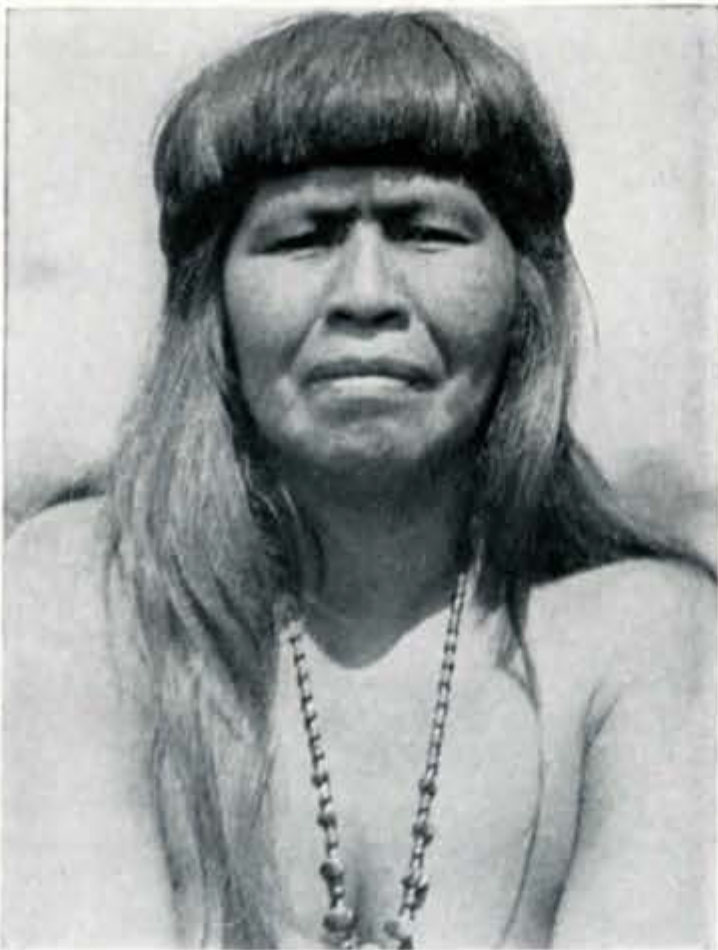
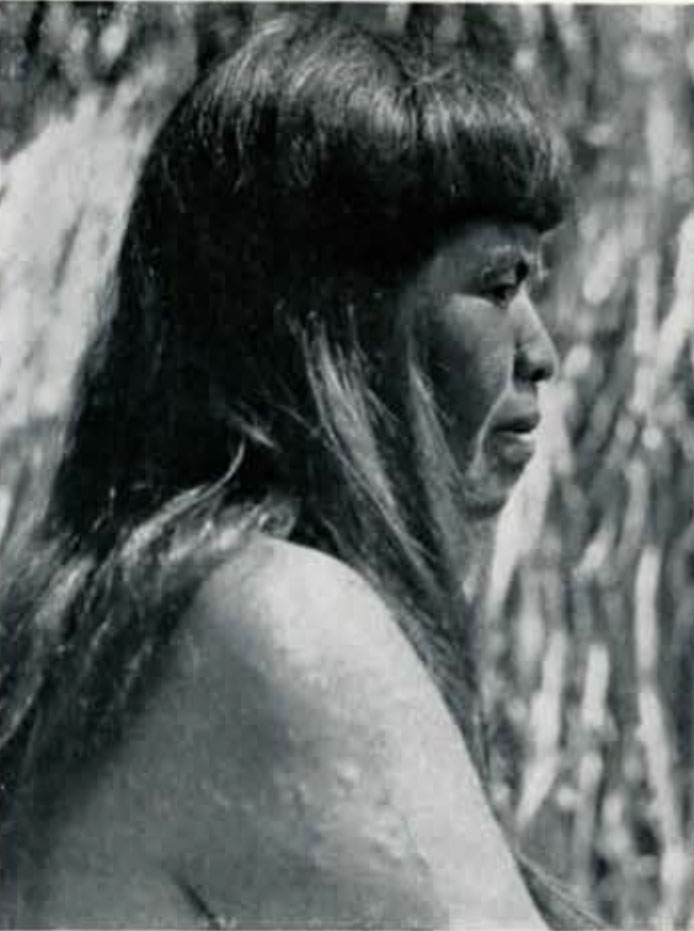
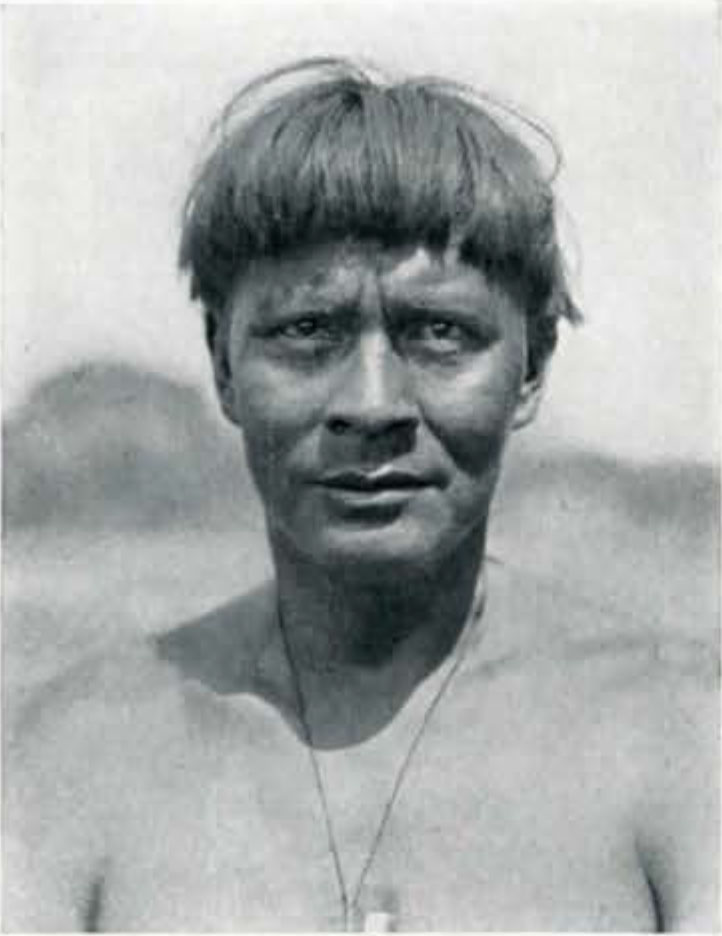
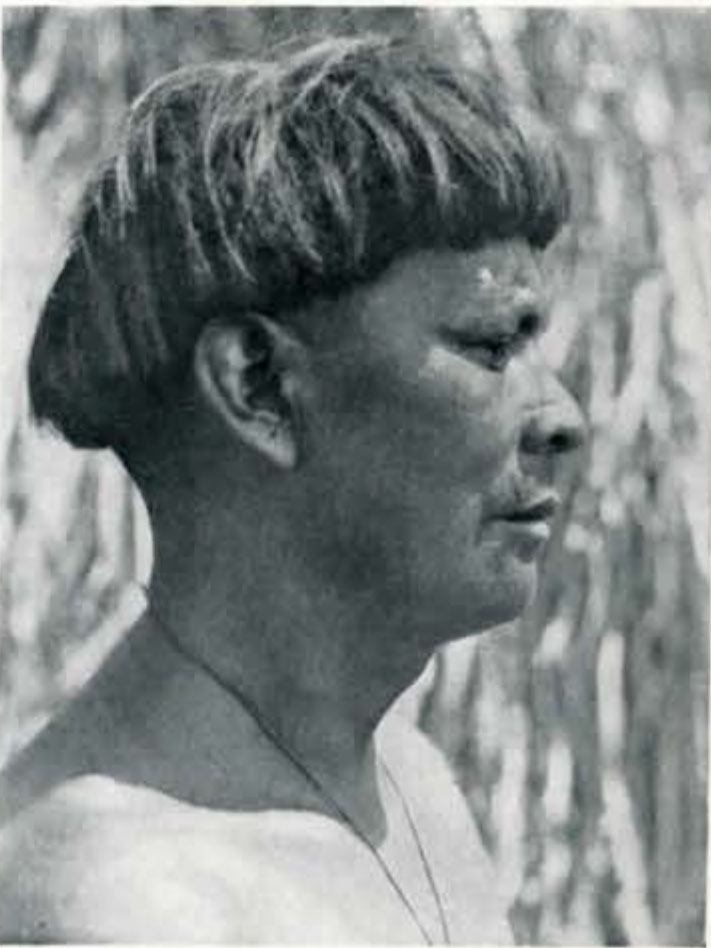
Surface Finds
These include only material that was found over the areas excavated or to a depth of a few centimeters. As in the first site, the entire area was covered with potsherds, which in most cases revealed nothing that was not learned from the whole pottery to be found under the surface. However, a few pieces of decorated pottery were found. These are shown in Plate XX, 1.4. The decoration is painted in red on red ware. It is rectilinear and consists of broad red lines which are drawn either parallel to each other or criss-cross.
Other finds include:
On the very surface two iron tomahawks, of the usual type.
Three unhafted polished hornfel celts, beautifully made. The average size is about eight centimetres in length, five centimetres in width at the cutting edge and two centimetres at the butt. The greatest thickness is three centimetres. These were found about fifteen centimetres below the surface. [Plate XX, 7.]
One celt, of the approximate size of the above, with a slight groove encircling the butt.
Several jasper cylindrical beads of the same type as those found in Cemetery I.
One large polished quartzite bead.
One large polished hafted quartz pendant [ Plate XX, 5].
A small undecorated pitcher-shaped vessel with out-turned rim, crude handle and flat base. It measures but four centimetres in height and is characterized by exceptionally thick walls. [Plate XX, 15.]
Four small round pottery vessels of hemispherical shape with thick rims. Three of these are decorated with painted designs in red.
(a) This is the largest, measuring ten centimetres across the top, and seven in height. Its walls are disproportionately thick, and the rim is made even thicker by a roll of clay, forming the upper border of the painted design, the other being formed by another roll accentuated by incised lines, on each side. The painted decoration is in red, consisting of parallel lines, criss-cross, and filled-in triangles. A section of it is shown in Plate XX, 9. Close to the rolled rim on one side, the vessel bears a smooth, round hole less than one centimetre in diameter. It was unquestionably put there intentionally by the potter.
(b) This specimen is of identical shape as (a) but smaller, measuring but seven centimetres across the top and four centimetres in height. It bears the rolled rim, and incised lines. The painted decoration is black and consists of lines and rectangular figures, sectioned off. The hole close to the rim again appears. [Plate XX, 9 a.]
(c) Of the same size as (b), and is identical with it except that the rolled rim is heavier and does not bear any painted decoration.
(d) This is the smallest of the four, and is identical with the others, only differing in the painted decoration, which consists of diamond and triangular figures filled in with parallel horizontal lines. The ware is red and the decoration is in red. [Plate XX, 9 b.]
(a), (c), and (d) were found in close proximity to each other at the same level, thirty centimetres below the surface, but not in association with any of the urn burials. (b) was found also about thirty centimetres below the surface and in the section where the urns were closely packed.
That the hole served the purpose of passing a string through it in order to keep the vessels suspended seems to be a reasonable assumption, but as to their probable use little that is definite can be said. One of the Bororo da Campanha workmen offered the information that in his boyhood he had seen similar vessels used by the girls in the catamenial periods, especially during the period of the puberty initiation ceremony in connection with fasting. These vessels were used as measures for the amount of water and food the girl was permitted to have; whether it was per day or per meal he could not say. However, the ware is not of the Bororo style, and such vessels were not found in use among the Bororo of the São Lorenço region, so that this suggestion cannot be taken as conclusive.
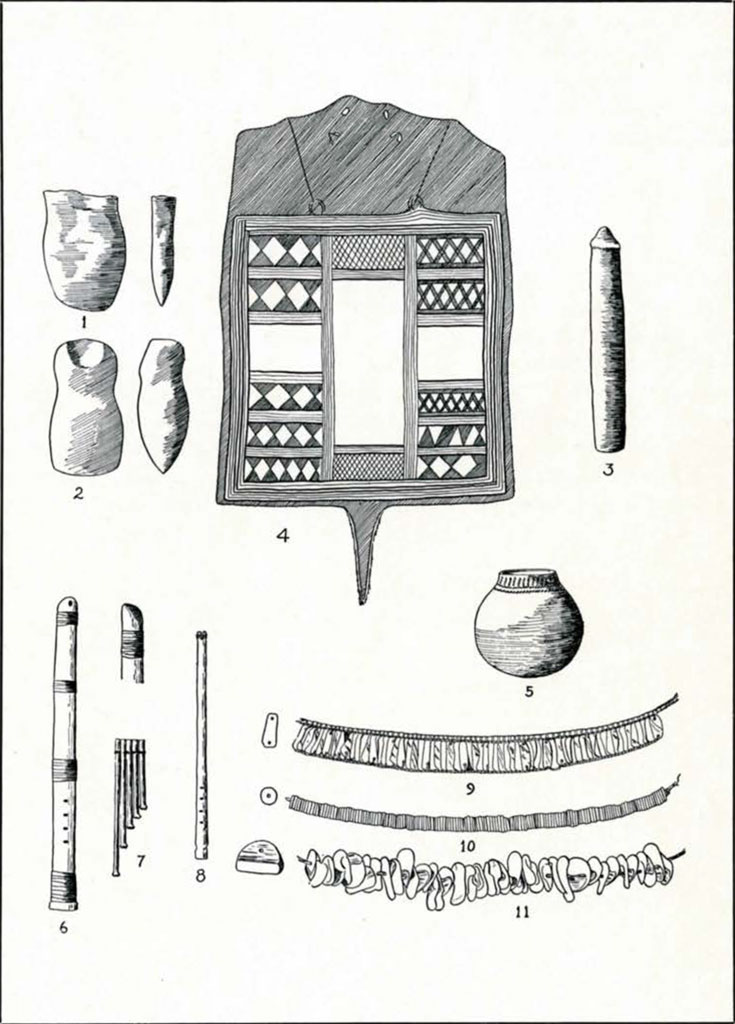
Another find consisted of several conical bone points, with concave bases, similar to those found on Bororo arrows, and also on the arrows gotten in the Kuluseu-Kuluene region. [Plate XX, 6.]
Five pottery spindle whorls of the form shown in Plate XX, 8.
Between a depth of thirty centimetres and hard pan, we came upon a large number of closely packed pottery vessels, some of which contained fragmentary bone material Plate VIII, 2 shows part of the excavation. Besides a great quantity of aquatic shells, which were found at all levels in the soil, below thirty centimetres, nothing was found but pottery and skeletal material. Not a single fragment of any artefact could be located, though the earth taken out was most carefully sifted.
To facilitate the discussion, the pottery can be roughly divided in the following types, according to the shape and size:
(a) Large urns with conical bases, bulging sides, forming shoulders, narrow mouths, either with or without a rim collar, and undecorated. These for the most part were found to be empty, except in those cases where the cover had been broken, in which cases they were filled with debris. [Plate XX, 19-21.]
(b) Globular urns, smaller than (a), with or without rim collar, with or without rudimentary handles, undecorated, always containing skeletal material. [Plate XX, 17, 18.]
(c) Bowls undecorated, but for one, of various sizes, used as covers on the urns. [Plate XX, 14.]
The pottery ware is crude, badly fired, and the larger urns are never perfectly shaped. The surfaces show the marks of the coiling technique. The following units are typical of the site:
Unit A [Shown in the right foreground in Plate VIII, 2.]
A large urn in good condition, of red ware, with a rim collar, measuring .85 metre in height and .80 metre at the greatest diameter. Originally it had been covered with an inverted bowl, the fragments of which were found inside it. It contained no skeletal material and no artefacts.
Unit B
A unique burial group seen immediately behind A in Plate VIII, 2. It consisted of an urn of type (b), bearing a bowl cover. The urn was empty even of debris, but on the outside and packed close to it were remains of three disarticulated skeletons. The bones were in such a had state of preservation that few of them could be taken out. No artefacts of any kind were found in association.
Unit C
A large urn bearing a bowl cover, the inner surface of which bears a painted rectilinear design in red. The bowl is a large one, measuring forty centimetres across the top and fourteen in depth. In the bottom of the urn were found fragments of bones.
Unit D
A globular urn about forty centimetres in diameter, bearing rudimentary handles. It was covered with a bowl and contained disintegrated skeletal material.
Unit E
Urn of type (a), on which rested another urn of type (b), which was covered with a bowl. Both urns contained skeletal material.
Unit F
One of the largest urns taken out, measuring 1.23 metres in height, and .97 metre at the greatest diameter. This specimen is now in the Museu Nacional, Rio de Janeiro. It bears no decoration. With the debris that it contained was found some skeletal material.
Unit G
A large urn of type (a), measuring .90 metre at the greatest diameter and an equal amount in height. The sides slope in abruptly forming shoulders, terminating in upturned rim collar. It bears no decoration. It likewise was originally covered with a bowl.
Bororo da Campanha
While work continued at the cemetery site, a visit was paid to the remnants of the Bororo de Campanha, collected at a village locally known as Laguna.
The trip to Laguna was made in the company of Messrs. E. R. Fenimore Johnson, John S. Clarke, Samuel T. Hoopes, Floyd Crosby, the cameraman, and guides. The village is situated on some high ground, covered with palm and banana groves. It consisted of a few huts arranged haphazardly, with that of the headman at the edge of a cleared space, a courtyard where the group meets whenever there is anything to discuss or celebrate.
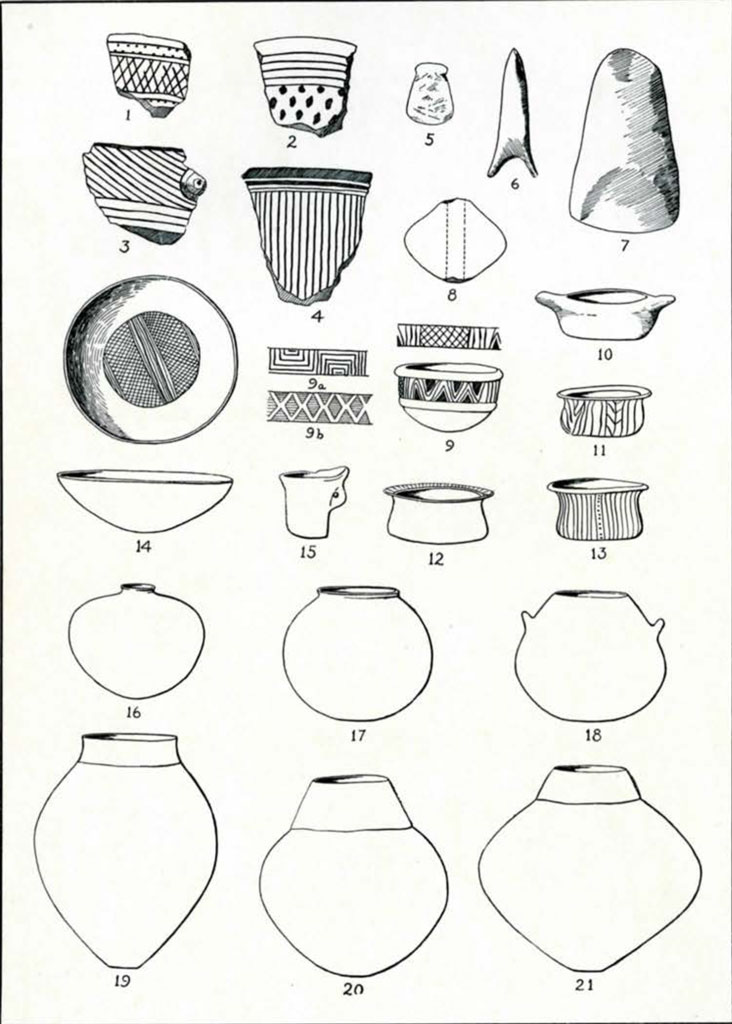
Its inhabitants were miserably poor, not having even manioc farina to offer us, so that we had to await the arrival of our ox cart, which had been left behind, to bring mate, a steer, coffee, and other foods. Our arrival was attended with a slight attempt at some ceremony, but after shaking hands with almost all of the villagers, the reception was over. Listlessness and evident ignorance of how to receive us were the main characteristics, although it was insisted that we sit down, a custom which I found to be prevalent in every group that I visited subsequently.
While waiting for the cart we took the opportunity of looking about. The huts were made of a skeleton of poles covered with burity palm leaves, which in the front of the house were placed vertically, with the leaflets interlaced. They were of a rectangular ground plan, with a true wall, about fifteen feet high. No hammocks were seen, the people sleeping either on the ground or on raised platforms, wooden frames having straps of leather to take the place of a mattress. The huts contained no further furniture. Each family had its own hut.
It was learned that only one woman of the village knew how to make pottery, but that none had been made for many years. In fact, no industry whatsoever has survived, not even the making of feather ornaments.
The bow and arrow has given place to the gun, of which there were several in the village. Acculturation has indeed gone far, the language being almost forgotten even by the older people.
After the arrival of the cart and the distribution of the food was over, they gathered by a fire in front of the headman’s hut in two circles, one for the men and one for the women. We were invited to sit with the men. When all was ready, the headman began to sing to the accompaniment of two gourd rattles, which he shook, one with an up-and-down motion and the other both horizontally and vertically with a different rhythm. In turn, his song was taken up by each man. Sometimes the women and the other men would join in a soft chorus. At times, led by the oldest woman in the tribe, the women would suddenly stand up and begin hopping, holding the legs together stiffly, the arms sideward but horizontally, and, with the hopping, leaning first to one side and then the other. This was enjoyed by them, especially by the older women. Several times chicha was passed around. Undoubtedly the song and dance would have continued all night had not the visitors finally insisted on retiring to their hammocks.
In the morning there was held a jaguar dance for our curiosity, for it has become quite meaningless to them, no one being able to tell exactly the significance of the dance.
An enclosure was built of burity palm leaves, roofless, which served as the dressing room of the dancer. No women were permitted to enter; the rites of dressing the dancer to represent the jaguar were evidently taboo to the women. Two singers with rattles stood in front of the man to be dressed. The dancer was painted red with urucum and down pasted on his breast. His face was also smeared with urucum. Around his arms were fastened armlets made from strips of burity palm leaf, and his face was covered with a mask made of woman’s hair. The foreskin of the penis was tied with a narrow strip of burity palm leaf, for these men under their tattered European clothing still carry this string. A skirt of palm leaf strips was worn, and a jaguar robe was thrown over his shoulders. The skins of practically every species of snake to be found in the pantanal hung from his head down his back over the jaguar robe, which was worn with the fur on the outside. The inner surface of the hide was painted with geometric patterns, in red and black, but no one could explain the symbolism. A magnificent headdress consisting of many pieces, and containing feathers of many birds of the pantanal completed the costume with the addition of deerhoof rattles worn on the right ankle. The dancer was ready.

The headman facing the dancer began singing to the accompaniment of his rattles, and slowly began backing out of the enclosure, the ‘jaguar’ dancing before him. The other men followed in line, roaring at intervals in the song. In this manner the enclosure was left and the dance began in the open. The women and children had withdrawn either to the huts or the surrounding jungle, but when the jaguar began dancing in the open, they came up on the dead run to join the dance. The women did not sing, but the men did so excitedly. The dancer danced flat footed with legs bent and knees thrown outward, arms extended at the side. His dance consisted of violent hops on both feet, and the twisting of his body this way and that with each hop. At the completion of the song the women and children would turn and run for cover, which they did not leave until the singing and dancing were resumed. [Plate III, 2, 3, 4.]
Eastern Bororo
On the São Lorenço river are a number of colonies of the eastern Bororo, who have not come so much under the influence of European civilization. These people still live apart in their villages and maintain their own institutions and industries. They unquestionably differ from the western Bororo in many ways.
The colonies at Pirigara, Corrego Grande (Sao Lorenco), and Rondonopolis were visited by the expedition, but Corrego Grande received most attention. Sound motion-picture studies of the dances and industries were made and rich collections of artefacts obtained.
Unlike that of the Western Bororo, the village is still an orderly affair, being built in circular fashion with the men’s hut in the center. The men actually live in this hut, the other houses really belonging to the women. Fishing, the cultivation of manioc, and hunting are the main occupations. [Plates IV, 2; V, 1, 2; VI, 1, 2; VII, 1, 2.]
Since an excellent study of a community of Bororo exists by Colbachini, little could be said of a descriptive nature in this brief paper that would not be duplication. Therefore, it is felt that time and space ought to be given to the Xingu trip.
At the Headwaters of the Xingu River
My original plans were to descend the Kuluene river, which has never been descended by an ethnographer; in fact, only recently has it been mapped by Major Ramior Noronha. However, after several conversations with Major Noronha at Cuyabá, finding that such a plan would add difficulties which would not bring any added results, I decided to descend the Kuluseu and ascend the Kuluene to the Seventh of September, and then to ascend that river. This had the advantage of avoiding a longer overland trip and many miles of rapids, and offered the opportunity of seeing more aborigines.
For purposes of reconnaisance and as a safety measure, it was decided to make use of the airplane. Accordingly, before beginning the overland trip, two flights were made to the north. We decided to depend on water for taking off and landing, since the country did not offer such open runways that landing on wheels would be safe.
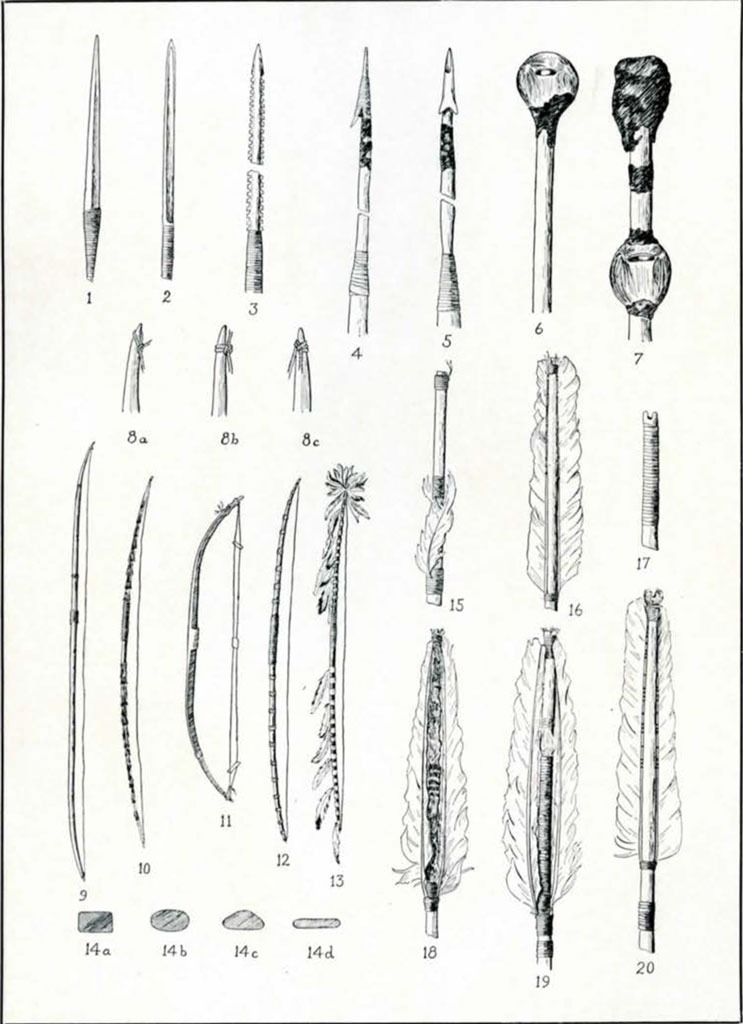
Major Noronha had informed us that, after departing from Cuyabá, no landing of the plane would be possible until we reached either the mouth of the Kuluseu or the mouth of the Seventh of September, a distance of approximately three hundred and fifty miles. The first trip was undertaken with the purpose of locating the nearest large body of water and any aboriginal villages en route. Mr. Samuel T. Hoopes, one of the sponsors of the Matto Grosso expedition, accompanied us on this flight, as well as Dr. Benedicto Duarte, of the Inspectoria de Protecção aos Indios. We flew over Chapada and took the route for the Bakairi post on the Paranatinga river. The pilot relied more on Major Noronha’s verbal descriptions than on the maps which we had, and which unquestionably were too conjectural. We had to do some flying along the Paranatinga river before we were able to sight the post. From that point we flew northeast, cutting across the headwaters of the Rio Fermo, the Batovy, and numerous smaller ones, which, joining eventually, form the Xingu further north. Having located what we thought was the Kuluseu we flew northward, but we did not locate a stretch which would permit safe landing. Finally we turned back for Cuyabá. During this flight we were in touch with our radio station at Descavaldos and with the Panair station at Para. We reached Cuyabá after over six hours of flying, to the astonishment of its citizens, who had not expected to see us again. [See map, Plate XXV.]
On the second trip we went further than on the first, and finally, the river broadening out, we made a good landing at the juncture of the Kuluseu and the Kuluene. So far we had not seen any villages or canoes on the rivers. At a distance we had sighted smoke, but since the entire area is burned by Indians and Brazilians, either to make new manioc fields or for pasture, we had not attempted to ascertain its meaning. After breakfasting and waiting in the hope that some Indians would appear, we left several strips of cloth tied to a bush with some knives, fish hooks, and mirrors, and took off. We had no doubt that though we had not seen any Indians we were being observed all of the time. A few minutes later we sighted a village. Flying low and circling it several times, we spied running figures making for the jungle and a stalwart line of men holding tall bows in their hands gazing at the plane. All of the people had the appearance of being colored red, even to the head. Another interesting feature was a tipi-like structure which stood to one side of the clearing. After dropping a sack filled with trade goods, we flew back to Cuyabá, surprising its population for the second time by our safe return. On this trip we had been away almost the entire day, so that practically no hope was held out for us, though there was a rumor that we had found gold, which caused our delay.
The distance from Cuyabá to where the plane could land on the Xingu was so great that if we wanted to do any further air exploring we had to get a deposit of gasoline there. It was therefore decided that I was to transport overland ten cases of gasoline. The plane would pay my party a visit on the sixth week after my departure from Cuyabá, that being the time calculated that it would take to reach it overland, at the same place where we had landed at the mouth of the Kuluseu.
After recruiting four men in Cuyabá, three of whom were recommended by Major Noronha and proved to be the finest that could be employed, we set off for the Bakairi post in two motor trucks. Our bag-gage consisted of airplane gasoline, an outboard motor, gasoline and oil for it, trading goods, personal equipment and food. No tents were taken for shelter, nor canvas canoes, and so forth. Our food consisted of manioc flour, beans, rice, coffee and meat. In addition, we carried six sealed tins containing emergency rations for a few days, of which we had occasion to make use later. Our camping equipment was as simple as that of the camarada, merely a hammock, blanket and mosquito net. Our only luxury was a portable phonograph, which as long as we had it helped to keep the men and aborigines in good humor.
It took us three days to reach the Bakairi post, after an early end of the expedition was threatened by the breaking of two wheels of the truck. Beyond Chapada the road is good. This section was built by the Bakairi under the direction of Major Noronha. On our way we stopped at the Protestant Mission at Burity, where we were hospitably entertained by Mr. and Mrs. Moser. It is on the property of the Mission that the Veio de Noiva Falls are.
The Bakairi
The peoples of a number of villages speaking Bakairi have been collected at the post, Simõe Lopes, on the Paranatinga river. The post consists of a number of excellent government buildings in charge of an agent and a small staff. A little distance away is the Bakairi village, in a wire fence enclosure. The effort of the Inspectoria has been to give aborigines the isolation that they want and not to interfere in anything that they may do. The tribal organization is kept as of old, and the Bakairi lead their own life in their own way. They are not forced to stay at the post, or in any way bound to do as the agent says. The agent is merely a teacher. He talks to them and advises them on any problem that may be facing them, but it is understood that they are free men and that they can do as they please.

The post maintains a school, the effort being made to teach every child to read and write Portuguese and to learn the rudiments of arithmetic. In addition to this, an attempt is made to teach them vocations, such as weaving on the loom, tailoring, shoemaking, barbering, and so forth. Generally, if a boy shows unusual talent he is taken to Cuyabá and even to Rio de Janeiro to be given further instruction. This education is not compulsory, however, though most of the Bakairi take advantage of the opportunity. It is the project of the Inspectoria to form good self-sustaining citizens of such groups of the native population as come under its tutelage.
The post has a herd of cattle and the Indians are being taught the principles of cattle raising. It is the desire of every Bakairi to own cattle. No attempt is made to turn the Bakairi into a sedentary agricultural people, it being thought unwise to attempt to transform the manner of life of the Bakairi by tying them down to the soil, when they have been used to a semi-nomadic existence. On the other hand, they are encouraged to practice some agriculture, raising manioc, sweet potatoes, some maize and cotton. Each man clears his own land yearly, and plants his foods.
In spite of the liberal attitude and practice of the Inspectoria the Bakairi have been dying fast. Fevers seem to decimate them rapidly, though all efforts are made to keep medical supplies on hand and to supply medical attention. Their life is not as strenuous as formerly, because of the improved methods, and this may account for the lowered resistance. On the other hand, there is no doubt but that at the head-waters of the Paranatinga it is less healthy than in the region of their former homes. Even the Indians from the lower Kuluseu who followed our expedition on its return to the post suffered greatly from fevers upon reaching it, though it was the dry season and there were few insects. Geographically the post is situated ideally on a high land removed from the river and cleared of all vegetation, the jungle appearing only as a narrow fringe along the river banks. Like the rest of the high plateau it is wind swept, and generally pleasant. It must be added that contact with white people, such as is had when a small group of natives go to Cuyabá, has brought syphilis to them, and it may be their mortality is due to this.
One occupation enjoyed in former times is denied them, and that is fishing. There are practically no fish in the Paranatinga, at least up to where the post is located. Since meat is gotten only on rare occasions, and no hunting is done, the diet is mainly one of vegetables and considerably poorer than when they were living in their original state. This may also explain their lowered resistance to disease.
Very little museum material which represents their own products can he collected from the Bakairi. What has not been gotten from the Inspectoria has been brought back on excursions to the Kuluseu. Pottery has not been made since their coming to the post, according to them. The huge vessels that they possess either have been brought with them from their former homes or bartered from the tribes on the Kuluseu. It is claimed that the proper clay cannot be found in the neighborhood of Simõe Lopes.
Arrows are still being made, an iron nail generally being substituted for the old bone point, but most of the arrows also come from the Kuluseu.
For the old hammock made of palm-leaf fibre the cotton hammock has been substituted, but the same open net style has been kept.
Mussel shell ornaments have also been bought from the tribes of the Kuluseu. In brief, almost anything that is found in their village must bear the suspicion that it is not a Bakairi product.
However, they have preserved a few customs, such as filing the upper teeth to a point, wearing under the European clothing the gee string, and ceremonial use of the bull-roarer, and they probably remember many of their ceremonies.
The short time spent at the post was mostly devoted to taking anthropometric measurements, which were subsequently lost on the Kuluseu, but in some notes I do find the statement that in blood groupings most belong to groups three and four, the former predominating.
Nine canoemen, recommended by Major Noronha, were recruited from the Bakairi. The nine included Paghuli, or Marcellino, and Apacanu,
both of whom had lived on the Kuluseu before the withdrawal of the Bakairi to the post. Both of these men can speak Anahukua to some extent, and are the only men who know how to make bark canoes. Unfortunately, their Portuguese is poor, necessitating another interpreter. Their knowledge and skill in matters of river travel made them invaluable, however.
The Bakairi have the reputation of being the best canoemen of the region. The children are taught to paddle from infancy, and become extremely skillful in paddling the clumsy and heavy canoes. The paddle used is short and narrow, and a quick, short stroke is employed, the paddler shifting his paddle from one side to the other with every two or three strokes. Steering is accomplished more by the bowman than by the man in the stern. The use of the stern paddle as a rudder is not well understood. Poling is resorted to by the man in the bow when going up the stream, in which case the efforts of the man in the stern are given to guiding the canoe, which is accomplished by quick shifting of the paddling from one side to the other. Among the Bakairi, as indeed among all of the aborigines encountered, the women are as good paddlers as the men, hut they never were seen poling.
* * * *

As soon as our personnel was completed, with the addition of a young Italian explorer, Giacomo Anzil, who had been forced to abandon his project to reach the Amazon upon reaching the post, our baggage was transferred to the backs of oxen and mules, which were to transport it to the Kuluseu river. The men not concerned with driving the oxen went afoot. It was indeed an odd caravan. Mounted men busy with the oxen, men afoot carrying bows and arrows and guns, long-horned oxen, small mules, filed in a long line across the wastes of the plateau. All of the men wore a red kerchief wound about the head, and the usual bantering conversation was carried on. The Bakairi, of course, wore trousers and shirts, and even sandals made of old automobile tires, in imitation of the Brazilian camaradas.
As we moved eastward and slightly north, it became more often necessary to build bridges for the animals, across small but high-banked streams. Under the hot sun this became hard work, but in general the march was a pleasant one. The start in the morning was made at about eight o’clock, unless some beast had wandered too far off, when there was some further delay. A low fog hid the tall grass from sight early in the morning, but soon afterwards it would lift. In the early afternoon would appear white clouds in the skies that had been perfectly clear, enough to enhance the beauty of the sunsets, and no more. The region is windswept, so that though the sun was hot enough the heat was never unbearable. Camp was generally made in the middle afternoon, by some stream, in order to give the oxen a chance to graze. Skies were invariably clear at night. The temperature fell so suddenly that few slept after midnight, most preferring to huddle around the fire, to talk and drink coffee, which I allowed. Precipitation was heavy during the night, as was attested by our blankets, which were wringing wet by morning. However, the nights were not so uncomfortable that it would have justified the carrying of heavy tarpaulins.
In this manner we traveled over the rolling country. Sometimes we surprised deer that bounded off before a shot could be had, though several fell to our guns. Once Tupi, a short-haired New York fox terrier that accompanied me, roused a tapir; the other dogs joining in the chase, it was bayed and killed, a welcome event, for it supplied us with meat for several days. A puma one day caused a great deal of excitement. On being seen, almost the entire personnel gave chase, whirling lassoes, shooting arrows, whooping, yelling and laughing. It was finally shot. Several mutung, birds whose meat was found to be excellent, were killed in the jungle patches bordering the streams.
We passed near two deserted village sites which the Bakairi identified as being Kayapó. Traveling on schedule, however, we were not able to stop to investigate archaeological possibilities.
On the sixth day from Simõe Lopes we entered more wooded country, necessitating cutting a way through, and on the seventh day we reached the banks of the Kuluseu river below the mouth of the Prame. This last day was marked by an accident to one of the tame pack oxen. It fell, breaking its back. For the wild steer that we had taken with us, its face covered with a leather mask so that it could not see where it was going, but naturally followed the other oxen, this was fortunate. The hurt ox was killed and its meat dried. The steer was sent back to the post in the morning with the other oxen, with another extension on its life span. The extra men that had driven the oxen also returned to Simõe Lopes, their fear of attack by the Kayapó hastening their journey back.
We were now totally out of touch with the world that we had left. The underbrush of a patch of jungle was cleared for our camp. This was always our practice, the insects and the moisture being less troublesome there than in the open. Furthermore we could swing our hammocks between trees, whereas it would have been necessary to set up hammock poles were we to camp in the open. As to danger of attack by the aborigines, it was felt that one is equally safe in the forest.
The following day the Bakairi began the search for suitable jatuba trees, for our canoes were to be made from the bark. The Bakairi set out early, without the customary breakfast, and carrying nothing but their weapons, without which they would not stir from camp. Were a man to eat before setting out to locate the trees lie would never find one, they said. In case, by some fortuitous accident he did, the bark would be too thin, or too thick, or too dry, or would crack. Therefore nothing must be eaten until the trees are found. In the afternoon they returned with news that several had been located and also that a trail marked with broken twigs had been discovered running almost in a circle around our camp, indicating the presence of the Kayapó in the neighborhood. During the night it was claimed that strange calls were heard, but during our stay at this camp we were not molested.
For the comfort of the Brazilian camaradas I permitted the making of a dugout canoe; with this sort of watercraft they were familiar, but were distrustful of the bark canoes. Subsequently I had occasion to repent my decision and they their request.
In four days the Bakairi made six canoes, two of which were of good size, each capable of carrying an estimated load of fifteen hundred
pounds. The dugout was not completed until the seventh day, and it proved hardly serviceable then. Its only baggage was two cases of gasoline, and it gave infinite trouble to its men in the rapids because of its non-flexibility and great weight.
On the other hand, the jatuba bark canoe is flexible; this feature, combined with the thickness of the bark, diminishes the chances of
perforation or capsizing on hitting a submerged rock or tree, which cannot be avoided, especially in the upper waters of the rivers. Such a bark canoe suffers little or no damage where a dugout would either capsize or split. Canvas canoes would tear too easily.
When a jatuba tree suitable in size and condition of the bark is found, a platform of slender poles is built around it. Three upright poles are set up forming a triangle around the tree. Cross pieces in which the worker stands are lashed across from pole to pole. The outline of the canoe is then marked on the tree and is peeled off carefully by driving in flexible wedges in between the bark and the wood.
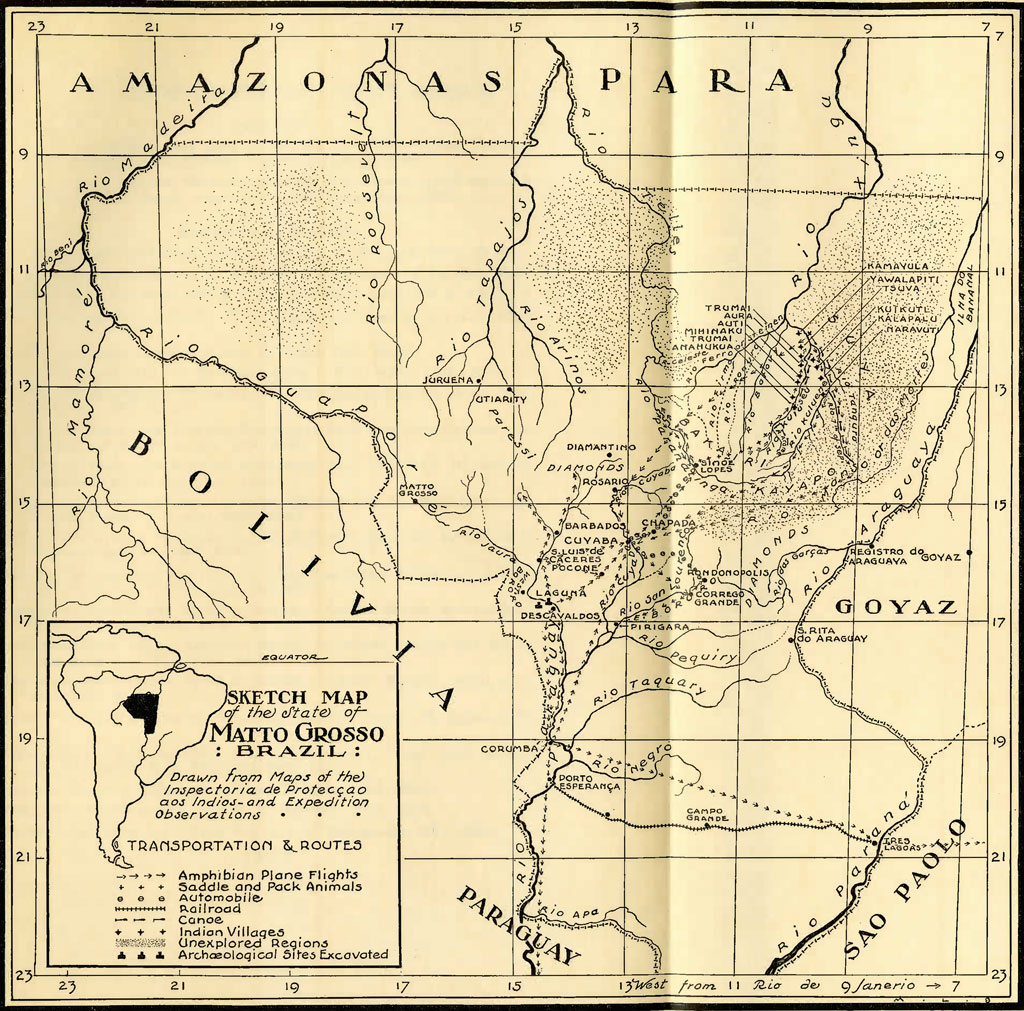
Image Number: 242517
The bark thus gotten is bent into the proper shape by building a smoldering fire on its inner surface and by means of poles used as levers on the sides, forming eventually a framework in which the canoe is wedged. The bending in of the sides too much is prevented by cross pieces. Sometimes the maker etches out a design on the outer bark.
The canoe thus obtained is a shallow affair and practically flat bottomed, which gives it stability. The bow is open and clay is used along the edges as a bank to keep out the water. The stern is raised somewhat but often water enters by it likewise.
The Bakairi, while making the canoes, fasted until the end of the day’s work, when they ate pure food, in this case rice, farina and meat. It was explained that really they should have eaten nothing but piranha and biiju, foods that we did not possess. Sexual abstinence is necessary, and were some women in the catamenial period to pass nearby, the bark would split. After work is begun no one, in fact, must approach, and if he, unaware that a canoe is being made, does come near, he must not leave on any account.
Though we found other signs of the presence of aborigines in the neighborhood we never saw them; but that we were being watched carefully, there was no doubt.
With overloaded canoes we finally embarked on the next lap of our journey to the mouth of the Kuluseu river. For another seven days we worked in the rapids, fatiguing and morale-destroying work. Often we had to cut our way through fallen trees; for long distances canoes were dragged over dangerous stretches; many times the. canoes had to be unloaded and the luggage portaged. The men worked naked in the water, and it remains a marvel how we came past the rapids without having suffered some serious injury and without having lost either canoes or baggage. However, the work in the water told on the men and a number went on the sick list with fever. From this time on, at least three of my fifteen men were daily suffering from some malady that incapacitated them for hard work.
Just below the rapids formerly were located a number of Bakairi villages, as reported for instance by Von der Steinen. We passed the sites of the villages known as Marika, Igueti, Maimeti, names meaning mosquito, harpy eagle, and turtle, respectively.
At this time some of the camaradas began to show restlessness, especially one man that I bad brought from Descavaldos to act as my foreman but who had failed in most of his duties to show the efficiency necessary. This, the fact that there was so much illness, and because we were behind our schedule, urged me to make use of the outboard motor now that we were in clear water. Accordingly three canoes were lashed together and the other four were towed in pairs. We made good speed, but an odd change came over the men. From being expert canoemen they became clumsy in their movements, as if that were the first time that they had seen canoes. Also, having nothing to do, they became increasingly restless in their places. This resulted in disaster several days later, after we left the Anahukua, at whose port we had encamped.
Pressed for time in order to keep our scheduled meeting with the plane at the mouth of the Kuluseu, the Anahukua village was not visited. We camped opposite their port late in the afternoon, and soon afterwards Aloike, the chief headman, and some of his followers, appeared on the opposite bank. He came alone, since none of his men apparently had the courage to visit us. A few gifts were made to him and he went over, promising to be back in the morning with his people and food for us.
Aloike kept his word, for in the morning the opposite bank was crowded with naked men, women and children, carrying calabashes filled with farina, baskets filled with biiju, and piki wrapped in leaves. Our phonograph kept them amused on their crossing over, but our presents to them interested them more. In the few hours that we stayed with them I tried to make as many notes as possible and collected a number of objects—work that was of no avail, for a few hours later everything was lost under fifty feet of water.
Authority among the Anahukua did not exist. It was in vain that Aloike tried to impress us with his power; everyone behaved as he pleased. The women were as outspoken as the men, but it was noticed that the younger women kept behind the older, peering over their shoulders, a custom that was observed among the Bororo and the Bakairi also.
Propelled by the outboard motor we covered a great distance, until late in the afternoon three canoes were capsized by one of the men who lost his head. This occurred in one of the deepest pools in the river, and all our efforts to recover the canoes failed. Making an inventory of our resources we found that all of our dried meat was lost, most of the sugar, a good portion of the salt, beans, rice, and farina. For this last we were not concerned, for we could buy it from the Indians. More serious was the loss of most of the ammunition, some rifles, revolvers, knives, over half of our trade goods, including most of the hardware, the cameras, anthropometric instruments, Schick and Dick Test material, blood grouping sera, and all of my notes and specimens. We had lost enough beans and rice to last us some four weeks with care, and a sufficient quantity of coffee. I decided to go on anyway, but as a matter of fact we were not able to move in any direction, since the few small canoes would not carry all of the personnel.
On the second day after this event a Mehinaku appeared in a canoe with his wife and two children. Understanding our plight, he paddled to his people further down stream and the next day returned with men and canoes, having traveled day and night to reach us quickly. In the meantime the plane had flown by on its way to the meeting place, without having seen our smoke signals.
Paddling all day and a good portion of the night, we arrived at the Mehinaku port of a village on the right bank, in the process of being built. Farina and biiju were given us and we found the people delighted and charming hosts. Putting up our hammocks under the trees, some of us retired, but the Bakairi, though tired, sat up most of the night conversing with the Mehinaku, though each other’s language was mutually unintelligible.
On the opposite bank to the port of the Mehinaku, we found a group
of about twenty-five Trumai men and women. They had no canoes, but the Mehinaku ferried them across. They were exceptionally small,
being both short and thin, in contrast with other peoples that were met, but always appeared to be well nourished. In the morning, when we distributed gifts among our hosts, the Mehinaku begged that we give gifts also to the Trumai, who were a poor but good people.
Of all the groups met, the Mehinaku were the most pleasant and the most reliable. The incident of helping us to move down stream has been mentioned. Later, on making contact with the plane, we had occasion to test their intelligence and reliability further. Eight cases of aviation gasoline had been left on the sand beach where the disaster occurred; as we needed the gasoline, six Mehinaku went back and brought it to us in remarkably short time. [Plate XI, 1.]
In the morning, while some of die canoes were being patched, I visited the new village. Though only one house had been built, and it was not quite finished, a tall conical structure made of poles tied together at the top, housed a harpy eagle. I was told that that was the first structure put up. The house structure differed in no way from others that were subsequently seen in other villages, which will be described later.
The original village of the Mehinaku was on the west bank, but having exhausted the soil, they were moving to the east bank. They had a few beans and maize seed, which they were carefully keeping for planting.
With the help of these kindly disposed and gentle Mehinaku, we continued our journey down stream, meeting with groups of Aura and Auiti, and finally arrived at the mouth of the Kuluseu. In the morning some Tanya brought us the news that the plane was several bends of the river away, and we hastened to it.
Our meeting with Johnson, Rossi, Lorber, Sauceda and Due was a happy occasion for everyone. While waiting for me, news had come to them about some white men, but our failure to put in an appearance caused them worry. Their food supplies having been almost exhausted, they had decided to fly back to Cuyabá, when we appeared.
On the sand bank where the plane was beached there were collected Anahukua, Auiti, Aura, Kamayula, Yawalapiti, Tsuva, Kuikutl, and Kalapalu, and we brought Mehinaku. Each group was jealous of the others and we had to distribute our favors equally.
Learning that I had lost my photographic equipment, Arthur P. Rossi, who had made the trip with the plane merely to take aerial photographs of the region, insisted in staying with me when the plane flew back to Cuyabá the next morning, even though the plane would not return for three weeks to bring us fresh supplies of food. Rossi was a welcome addition to our party. Two of our men, having become troublesome, were unceremoniously flown back to Cuyabá.
While waiting for our party, Johnson and Rossi had visited the Tsuva whose port is on the Kuluene river. This group has not been reported in any literature and was not on the Kuluene in 1920 when Major Ramiro Noronha descended that river.
Rossi and I with several Bakairi paid this village another visit, guided by the Tsuva that had come to see us. We took up the line of march, with two girls, carrying on their heads baskets in which were their hammocks, leading, and then I as the ‘capitão,’ the Tsuva, and the Bakairi, who brought up in the rear. The Tsuva men carried our baggage in their carrying baskets, which hung on the back from a thong drawn over the upper arms and across the chest. This method of carrying was preferred even by my Bakairi men. The women were never seen to carry these baskets, nor were they ever seen to carry loads in this fashion, preferring to carry everything on the head.
Due to the absence of the headman from the village there was no ceremonial reception. Most of the people were in their huts, and those that were not sought their cover. However, those that had accompanied us soon made our peaceful mission known and we were asked to sit on a log, placed in front of the men’s house. Later the sub-headmen came to offer us the bird stools, and the women came with farina and a refreshing drink made from manioc. Again it was noticed that the younger women stood behind the older when dealing with us.
Because of the absence of the headman we were not received in the men’s house, but instead were shown to a half-finished residential house. The entire population paid us a call there, but there was no trading.
On my expressing the wish to visit the other houses, there were signs of protest, showing that since the headman was not there, that could not be done. On my insistence, finally the same young people that had guided us to the village took us into the houses.
In one of them, living in a compartment made of mats, we found a girl. It developed that she had married a Kamayula, who was now dead, and she had escaped to her own people, who were keeping her in hiding. She proved to be the most interesting person in the village, being the local artist. The best basketry collected was made by her, the best hammock, and the mat shown in Plate XXIV, 4, and she decorated everything that she made.
One of the houses was half burned down. We were given to understand that the headman had died and that the house had been subsequently burned down intentionally.
There were four finished family houses, the half-burned house, half-constructed house, the men’s house, and the harpy eagle cage. The population was under a hundred.
Our reception by the Yawalapiti was by far more ceremonial. When near the village our guides shouted a number of times, and finally we were met by a group of men who told us that the headmen were before the men’s house. We found there two men seated on a log smoking, surrounded by their men. The chief headman wore a diadem of jaguar hide. Both went to their huts and brought two bird stools, in which Rossi and I were asked to sit. Calabashes containing manioc water, and biiju were offered then, and we in turn distributed a few gifts to everyone present. A number of long speeches were made back and forth, but finally we were taken into the men’s house, where we put up our hammocks. In the meanwhile the women had formed in line, with arms linked and the palms of the hands held against each other with the fingers interlaced, and began a song in our honor. Later in the night they entertained us in the same way.
In the morning we were awakened before sunrise by beautiful whistling from many directions. It was explained that the young men were leaving the village to hunt and fish. Everyone, even to the smallest child, took a bath, though it was cold.
Later in the day we were entertained by two clowns, painted in black and red, and wearing nut-shell rattles on the right ankle, and playing two sets of pan pipes, three in a set. The longest pipes were about five feet long, and all were played in unison. The clowning consisted of marching grotesquely from one hut to another, which was entered to the sham fright of the women.
A more serious performance was given in the men’s house. The performers were three in number, apparently a specially designated group. Each played a bass pipe shown in Plate XIX, 6. They arranged themselves side by side, the middle man being the leader and wearing deer-hoof rattles on his right ankle. They played in unison with some attempt at harmony in short, staccato notes, at the same time marching stiff-legged forward and backward. These flutes are kept hidden from the women, who though they know what they are, fear death as the penalty for actually seeing the instruments. The women also have a great deal to say about their disposition, for when I attempted to buy them, the men had to consult the women, who protested and claimed that without their flutes their life would be joyless.
In this Yawalapiti village the conical-shaped structure contained a harpy eagle. Judging from the amount of bone material on the floor of the cage, the bird is kept well supplied with food. In fact, each man and boy must share whatever he obtains hunting or fishing with the bird. In recompense he receives a feather at the periodic plucking of the plumage. [Plate X, 1.]
The Yawalapiti village was the one over which we had flown and dropped the sack filled with trade goods. We were given to understand that the women were so frightened that they even cast away the ‘uluri’ as a sacrificial gesture. However, on finding our sack, they understood that the aerial monster did not intend any harm to them, and so, thinking that we—gods perhaps—might have been offended at the warlike behavior of the men, they did not know what to do to have us visit the village again. We gathered that they prepared a great quantity of biiju, and at intervals the entire population of the village faced the south, the direction in which the plane had disappeared, and ceremonially called to us to come back to their village and share their hospitality. They had given up hope after several weeks. On our departure from this village the women and children set up a ceremonial wailing which we heard for a long time afterwards as we paddled away in the lagoon. [Plate X, 1; XII, 4.]
Following our visit to the Yawalapiti, we broke our camp at the mouth of the Kuluseu to begin our journey up the Kuluene to the mouth of the Seventh of September river, where we intended to await the arrival of the plane which was to bring us fresh supplies.
On our way we encountered Tsuva, Kuikutl and Kalapalu at their respective ports. We would find them amassed on the bank, with food for us and great curiosity. Many of them followed our canoes, so that upon reaching the mouth of the desired river and establishing our camp we found that several hundred aborigines had also slung their hammocks in the same patch of forest. Generally three or four hammocks would be arranged around a fire for warmth. [Plate IX, 3, 4.]
With Rossi and three Bakairi, two other trips were made. One was the attempted ascent of the Seventh of September, but having gone some distance and not discovering any signs of Indians, the project was abandoned. The other was a visit to the Naravute.
The usual march for several hours was necessary to reach the village in the hot sun. Upon our sighting the village, our guide called out, and did so at short intervals until, when we were almost in the village, his calls became continuous, not stopping until we were in the clearing in front of the men’s house. Then the population began to come out of the huts, led by the two headmen who brought not the customary bird stools, but stools of bark. The absence of the bird stools was significant, since the bird cage with its eagle was also missing.
Unquestionably we were shown more hospitality in this village than in any other. The women brought great quantities of manioc water, a very refreshing drink, and in every way demonstrated great joy at seeing us. Some of the women even linked arms and chanted one of their songs.
We were housed in a half-finished house because, it was explained to us, it was more comfortable than the men’s house.
Great quantities of firewood, biiju, farina, and manioc farina were brought to every adult member of the group. Correspondingly, each one received some trinket or other from us, the children not being neglected in this respect.
Again we were awakened before sunrise, this time by a pounding and the voice of a man who sounded as if he were chanting a sermon. My Bakairi translated that he was exhorting the people to rise early and bathe as did their ancestors, not to be lazy and lie in their hammocks, to begin the day’s work, and so forth. In fact, the entire population filed to the lagoon for its bath, and the pounding that we heard came from women busy at work making farina. The harangue lasted about a half hour, when things became quieter. The sun did not rise for an hour afterwards.
Three roosters helped to awaken the day. Not having noticed them the day before and knowing that our hosts had not been in touch with any Brazilians except for Noronha’s expedition in 1920, this was somewhat startling. We learned that they had been gotten from the Anahukua, where they had been left by an Inspectoria expedition several years before that had gone to the relief of an American-English group, searching for Col. P. H. Fawcett and his party, and who, believing that they were in imminent danger of attack from the Kamayula and other tribes, had radioed for help. However, there were no hens in the village.
Led by a young man, who we were given to understand held the office of leading all dances, the men entered our hut and began to circle around counter-clockwise, stamping the right foot. A group of women arm in arm danced outside the circle, holding the palms of their hands against each other with fingers interlocked, and chanting at the same time. Their dance consisted of taking three steps forward beginning with the right foot, pausing and stepping back. No musical instruments were used.
The ceremonial weeping at our departure was repeated at this village.
* * * *
As in the rest of Matto Grosso north of the sources of the Paraguay river, ethnographical investigation of the peoples in the region under discussion has not been carried very far. Most of the available information is to be found in the reports of Von den Steinen and the studies of Max Schmidt. In recent years the Inspectoria de Protecção aos Indios has had several expeditions, but they have been concerned chiefly with geography, and thus very little anthropological data can be gotten from their reports.
I know of no published description of the peoples of the Kuluene river. Major Ramiro Noronha descended and surveyed this river in 1920, and is well informed on the general culture of the Naravute, Kalapalu, Kuiktl or Cuicuru, but has not published his data. The Tsuva were, however, unknown to him. These tribes are not mentioned by Von den Steinen.
The approximate location of the villages of the peoples met on the Kuluseu and the Kuluene are shown on the map. It will be noted that they are grouped on the lower waters of both rivers, and that the region between Simõe Lopes and the village of the Anahukua is uninhabited. Our canoes were made at the mouth of the Arame, and from that point it took nine days of hard work in the rapids to reach the port of the Anahukua. Major Noronha encountered no villages above that of the Naravute on the Kuluene, where the rapids end. Thus habitation of the banks of these two rivers begins where the rapids end, and the rivers become deep and, in the case of the Kulene, broad. This seems the line likewise of the end of the open lands of the chapadão and the beginning of the forest belt that stretches northward to the Amazon. Thus the region occupied by the aborigines having permanent settlements is that which borders on deeper waters well stocked with large fish, where mammalian life is poorer, but bird life richer and the soil is better.
According to Von den Steinen, the Mehinaku, Aura and Yawalapiti speak Arawak; the Auiti and Kamayula are Tupi, and the Bakairi and the Anahuka are Caribs. The Trumai speak an isolated language. Keeping this classification, we must include in the Carib stock Naravute, Kuikutl (Cuicura) and Tsuva, if the fact that these groups could converse freely with the Anahuka and that my Bakairi, who knew a little Anahuka, is an indication that they have a common language.
Thus, three of the four linguistic stocks of South America that have the widest geographic distribution are well represented on these headwaters of the Xingu. The fourth, the Tapuya, is spoken by tribes in the surrounding region, most of whom are scarcely known by name. It is generally held that the Tapuya are die oldest inhabitants of eastern Brazil and that they were dislodged by the Tupi. hi this region, it seems that the Tupi, Carib and Arawak are holding the more desirable locations near the rivers, and that all of them have as their common enemies tribes speaking some form of Tapuya, who are kept away from the deep waters and the fish. The most numerous are the Caribs, with five villages; the Tupi have two, and the Arawak have three. However, it must not be implied that because the villages speak languages which belong to the same stock that they are united politically. Each is a separate political community and apparently language affiliation plays little part in political or social alliances.
Since Von den Steinen’s visit, the tribes have shifted their habitat somewhat. Changes of village site is often caused by the necessity of fresh manioc fields, death or warfare. The Anahukua, for instance, gave the information that their former home was to the east of the Kuluene, but that following a disastrous attack by the Jaruma they moved to the Kuluseu. A comparison of the map with that of Von den Steinen will reveal that a number of changes have been made.
Formerly the four Bakairi villages were to be found below the Taunay falls, being the first habitations that were encountered on descending the Kuluseu. These have now been abandoned, and the Bakairi peoples, including those of the Rio Novo who are almost extinct, have withdrawn to the Inspectoria’s post on the Paranatinga. Thus, the first people to be met are the Anahukua, whose village is on the right bank, in about the same location as that given by Von den Steinen. Several days of paddling downstream is the port of the Mehinaku, on the left bank, and the village is as usual several hours’ march away from the bank. This also is in the approximate location given by Von den Steinen. At the time of our visit, however, the Mehinaku were busily building a village on the right bank. Their fields were ready, the eagle house was built with the eagle in possession, and one house was almost completed. The reason given for the movement eastward was that there was necessity of seeking better fields. Another Arawak people, the Aura, also have a port on the west bank of the Kuluseu, below that of the Mehinaku, but their village must be close to the Batovy. A group of them that came to visit our camp came by way of the Batovy and Kuluene.
Below the mouth of the Kuluseu there is a lagoon and buritisal on which are located three villages. The southernmost is that of the Auiti, a Tupi people, who have in addition a port on the Kuluseu. Next to them to the north are the Yawalapiti, who are Arawak, and close to the mouth are the Kamayula, also Tupi, a numerous and much-feared people. Fishing in the lagoon is restricted to members of each group within certain limits.
The Kuluene river up to the rapids is in possession of Carib peoples. Just below the rapids are the Naravute, and then going northward are met the Kalapalu, the Kuikutl (Cuicuru) and the Tsuva, all having their villages on the west bank. These groups are in constant warfare with the Tapuya-speaking people that wander over the territory east of the Kuluene, and sweep westward, but to the south of the Naravute and Anahukua. It would seem that the Tapuya peoples actually surround the other peoples of different linguistic stocks that have more permanent settlement.
The Trumai were met on the west bank of the Kuluseu, between the Anahukua and Mehinaku ports. They had no canoes. We learned that their village was close to the Batovy. It would seem that they also have shifted their village site since Von den Steinen’s encounter with them.
All of these people live at peace with each other, though of course quarrels arose at times. Their common enemies are, however, the tribes living to the east and west, tribes that roam across the headwaters and depend on hunting rather than fishing for food.
The Bakairi gave the following list of tribes that are supposed to live in the forests east of the Kuluene: Kayahó (Kayapó); Kaviji; Turi; Maritsava; Phoi, who are pygmies, a little over a metre high; Penehoko, who are a very large people; Tsuyakadi, who also are very large; Yaruma; Suya; Tsuruna; and, on the Paranatinga, the Tonali, who are also known as Kayabi, Kajabi; Apiakala (Apiaka) and the Pana, who are a very tall people.
The Kalapalu gave the names of the following tribes who are supposed to live to the east of the Kuluene and with whom they are permanently in a state of war: lower part of Kuluene, the Siuya (Suya) and Tsuruna (Juruna) ; directly to the east of their village, the Ahinkotl, Turi, Jaruma, Tumbilyaka, Kayapo (big feet) Alitsowa, Aiiva, Yahã, Ravine, Aruga (hide away to kill people), Yarpitsu (kill people), Tahulgi (pygmies). [See map, Plate XXV.]
Our attempt to meet some of these tribes that are supposed to have their villages close to the hanks of the Seventh of September river was not successful. In view of the above linguistic grouping of the tribes, it is interesting to note their attitude toward each other. The Bakairi, who are Caribs, distrust and fear the Anahukua, who are of the same linguistic stock, affirming to me again and again that they are a bad people. They were relieved when we left their neighborhood. On the other hand they praised the Mehinaku, anti were not even afraid to leave their goods about. The Mehinaku are Arawaks. My canoemen were also at ease with the Aura and the Yawalapiti, and seemed to expect nothing from the Trumai, whom they considered an inferior and poor people. Tile Auiti were watched with suspicion, but the Kamayula were actually feared, as well as the Tsuva, Kuikutl and Kalapalu, the first being Tupi and the last three Caribs; but the Paravute were praised for their honesty and peaceful disposition, and seemed to recognize in the Bakairi, kinsmen. One of my Bakairi was treated as a headman, loaded with presents and made to lead a dance, taking the place of the master of ceremonies, by these people.
The Mehinaku were in fear of all the tribes but the Aura and Yawalapiti, who are also Arawaks. The Kamayula and especially the Kuikutl were feared by all.
In our contact with these tribes, the fears of the Bakairi and the Mehinaku seemed to be somewhat justified, though at no time did we clash with any group. Disputes sometimes arose, springing from the difficulty of making our mutual requests understood, but we were able to settle everything amicably. At one time we were warned that the Kamayala were lying in wait for us, having resented our failure to visit their village, which was due to my inability to walk at the time. However, on passing the place where they were supposed to be in ambush, we were not molested. We were told that, having waited for us several days, their food supplies had been exhausted, and that they had gone to their village for food. The Kuikutl were a little troublesome, being somewhat arrogant, yet several of their men performed excellent and quiet service, for the axes and knives that were given them. All of the tribes met have been very little affected by the outside world; in fact, the only articles that we saw not of their own manufacture were a few nails which had been converted into arrow points. Thus, in our dealings with them we had to depend entirely on trade goods. Knives were wanted and prized by all, but axes were not wanted. Fish hooks of all sizes, and fishing lines were wanted and given to everyone. Clothing was wanted as a protection from the insects, but we were not supplied with it. Necklaces came next in importance as trade goods. Other objects were taken, but not with the same enthusiasm as the ones mentioned.
In the region under discussion, three of the most widely disseminated linguistic stocks are represented, and yet no appreciable differences in their material culture were discovered in the field. An examination of the collections that have been brought back has resulted in verifying the first impression.
All are a fishing people, and the methods employed are common to all; manioc is the other food staple, and the associated traits in the cultivation and preparation of it are found in every village; the houses are constructed in the same manner; the bows and arrows used are monotonously similar; pottery, basketry, musical instruments, body ornament, all conform to the same general pattern. Thus in speaking of their material culture, the description of that of one village applies to all, with the possible reservation of small, unimportant local developments or omissions.
The mode of life and the dependency on the environment doubtlessly is responsible for the unity of culture. The rivers are the highways, with canoes traveling up and down, its occupants in search of fish. Meetings between groups of individuals belonging to two different villages are more apt to be cordial, especially since one may be in need of food which the other has. Inter-marriage is frequent and the interchange of goods is carried on extensively. In fact, in most cases it is impossible to be certain as to which village made a particular specimen.
The villages are composed of a few houses arranged around a clearing, where the men’s house and the cage for the eagle are built. The houses are exceptionally large and well built, and are occupied by a number of related families. Each house has its headman. [Plate X, 1.]
The houses are not arranged in any well-defined manner, thus the village does not have the appearance of being well planned as one of the Bororo.
Each house has two doors placed at the middle of each side opposite each other. The door opening on the side of the house away from the clearing is used mostly by the women, the back yard being used for the preparation of manioc bread, or farina, and so forth. The houses are built with light grass-thatched walls, which afford good protection against cold and rain.
There is some difference in the care with which a house is built. Of those seen, the Naravute seemed to have them more fastidiously constructed.
The ground plan is in the form of an ellipse, about ten metres in width and twenty in length. About five metres from each end and in the center the three main posts are set deep into the ground. They are about twenty centimetres in diameter and stand about eight metres above the ground. A ridge pole is lashed on top. A wall one and a half metres in height is made of posts of approximately the same thickness as the main posts, set about fifteen centimetres apart. Then long, thinner poles are lashed to these posts, their tops bent inward so as to meet, and lashed together. To keep them secure they are lashed to the other poles running transversely, and heavier short poles are lashed to the ridge pole, resting on and lashed to the bent poles which form a sort of false roof. The entire structure is then covered by a sort of light framework of lashed horizontal pieces and is thatched with grass, leaving an opening between the false roof and the ridge pole as a smoke bole. The ends of the ridge pole are prolonged and thatched decoratively. [Plate X, 2-4.]
The inside of the house contains a central platform on which valuables, such as farina, basketry, and so forth, are kept. Each family has its own corner taken up by the hammocks, implements, and valuables, and its fireplace built close to the hammocks for warmth during the cold nights. There are no compartments except when a birth takes place, when a section is screened off by woven mats.
The entire community shares in the building of a house, which takes many months. The women do the lighter work, but the actual building is in the hands of the men and boys.
The central posts are often decorated with geometric designs, which are often colored in red and black. No special significance seems to be attached to them, but this must be taken with caution, since the lack of proper interpreters made the investigation of symbolism in art an impossibility.
Some of the houses seen, those that were constructed poorly and were smaller, such as the men’s house, contained only two central posts. The Yawalapiti men’s house had no doors.
The men’s house, outside of being relatively poorly constructed and smaller, has a ground plan that is closer to the circular. The inside is empty of all furniture, except that two logs running lengthwise to the house are placed a little raised from the ground against the main posts. On these logs the men sit when at work or watching some performance. It is in this house that the sacred flutes which must not be seen by women are played. For this reason Von den Steinen refers to such a house as the flute-house.
Though it is used as a meeting place of the men, and the women are excluded from it, it is not the living quarters of the men as it is among the Bororo. The boys and the men live in the family houses, sleeping, eating, working and loafing there. This house is reserved for ceremonies and for guests. Generally, outside and in front of the house there is a log on which newly come visitors sit, until the bird stools are brought.
On our visit to the Tsuva we saw the charred framework of a house, and upon inquiring about it, we were informed that on the death of one of the inmates of the house is burned down. The Bakairi confirmed the existence of this custom among their people.
The fields are situated close to the village and are always cleared forest land. The trees are burned down, sometimes cut down and burned, as well as the underbrush. The ashes give greater fertility to the soil. The manioc cuttings are then planted. The men do, as usual, the heavy work, the women helping as much as they can.
Most of the groups cultivate nothing but the bitter manioc or cassava, but a few of diem have maize and sweet potatoes, neither of which are extensively cultivated. The Arawak groups seem to be better and more interested husbandmen. The Mehinaku had maize seed and sweet potatoes. The Yawalapiti had maize.
Of interest are the maize effigies which were seen in the houses of the Yawalapiti and Mehinaku. One ear of maize is embellished with legs, arms, a skirt and a painted visage. These figures are hung from the rafters of the roof. Some of them, instead of representing human beings, are made in the likeness of birds. Several of these effigies are in the collections of the University Museum.
The crops are transported to the village in ‘carrying baskets.’ The framework of these baskets is of wicker, consisting of an elliptical loop for the bottom, and similar loops lashed to it and to each other forming the sides. Each loop is filled in with a network of bark strips. These baskets are made in all sizes, some of the larger ones measuring over a metre in length. It is carried on the back, with a tumpline, also made of bark fiber, across the chest and upper arms. This method leaves the arms and hands free, while the load needs no balancing. No women, however, were ever seen carrying a load in this manner, preferring to carry on the head, a method utilized also by the men. [Plate XI, 24.]
When the manioc is brought to the village it is first grated to a mass. The grater is a board with piranha teeth inserted into it or bits of shell. In order to extract the juice, which is poisonous, this manioc mass is squeeezed between the hands or sometimes in wicker mats. It then is put out in the sun to dry in the form of cakes. If not for immediate use, these cakes are packed in large carrying baskets, carefully covered with leaves and stored away. [Plate XII, 1, 2, 3.]
Some of the grated manioc is made into farina, by sifting it through a basket sieve and baking it in a flat pottery pan. In this form it will keep indefinitely. If biiju is to be made, the grated manioc is sifted, but instead of baking it so as to dry it in small particles, it is spread out in the pan to form a sort of thin cake. This is the form in which most of the manioc is eaten. The biiju cakes keep for several days, and always form part of the traveller’s baggage.
A non-intoxicating but nevertheless refreshing drink is made by mixing the unbaked grated and sifted manioc with water. This is the drink offered the visitors, on arrival at the village, by the women. It is served in large half gourds.
Depending almost entirely on fish and manioc for food, great quantities of both are eaten, and eaten continuously. The women begin making biiju before sunrise, so that those setting out to fish will be able to take it along.
In connection with the making of biiju fire, fans made from strips of palm leaves, or sometimes of grass, are used. To smooth out and turn the biiju cakes, wooden spatules are in use, generally made to suggest the representation of a snake or a bird.
In the food quest, besides the cultivation of manioc, fishing occupies the attention of the men. Though the women assist by steering the canoe and paddling, not one of them was ever seen actually fishing, though the Bakairi informed me that the women are capable of it.
Shooting the fish with bow and arrow is the most common method. It is never done from the banks or by wading in, except in the rapids. The man doing the shooting stands up at the bow of the canoe while his companion, who may be his wife, perhaps with a baby at the breast at the same time, gently paddles, keeping the canoe close to the bank. To learn to shoot fish is not easy, since both the force with which the arrow is driven into the water, its deflection upon striking the water, the motion of the canoe, and the movements of the quarry must be gauged. The bow is held upright, the arrow in position hut the string relaxed until the game is seen. In case of a miss, the arrow floating on the surface of the water is retrieved with the end of the how, the arrow being caught between it and the string. No opportunity of getting fish is ever lost. Our Bakairi were imbued with the same spirit, for often the paddle would be dropped and replaced with bow and arrow though we may not have needed the extra food. This anxiety to gather as much food as is encountered was also manifested in the case of turtle eggs found in the sand banks. For those days that we travelled, each canoe at the end of the day would have gathered at least thirty or forty eggs. This food was shared generously with everyone. [Plate XIII, 2.]
Another method of fishing was with a spear. Especially in the dry season, the fish withdraw to the deep pools where it is impossible to reach them with an arrow. A spear is usually made of two sections: a wooden shaft with a large conical bone point and a reed extension to the shaft. Both sections measure about seven metres in length. [Plate XIII, 1.]
Damming of the lagoons is resorted to. A dip net with a handle about three metres long is in use, and drag nets are apparently used in season.
Fish is eaten almost raw; the only method of cooking seen was barbecuing, either by placing it on a platform over a fire or by placing it on a framework close to the fire. Salt is unknown and not liked, as evidenced when they were asked to try our food, when though hungry, none would accept it if it had been seasoned with salt.
Another food in usage, highly prized and carefully stored away is the fruit piki, which grows wild. The fruit is boiled in the large earthen pots, placed in cylindrical bark containers, about one and half metres to two metres in length and a third of a metre in diameter, sealed tight at both ends, and placed under water in some cool pool. These bark containers are reinforced with wooden slats. On ceremonial occasions they are opened and a quantity sufficient for the immediate needs is taken out to be distributed to every member of the village equally. It is mixed with water and drunk, without fermentation. Both the Yawalapiti and Naravute had these bark containers.
Pottery
Pottery is poorly developed in the region. Neither in quantity nor variety, nor in technical perfection does it compare with that of the Bororo. The forms are simple though characteristic.
The absence of good clay perhaps is responsible for the poorness of the industry, for tribes of the same linguistic stock in other parts make good pottery.
The most common form has a circular base and a turned out rim. The sides are thick, and the pots are disproportionately heavy. The clay fires black. In many cases the outside of the pot is painted. The top of the out-turned rim often bears simple incised designs, such as are seen on Plate XX, 12. These pots are used in the preparation of manioc farina and in boiling piki. To the Bakairi they were so valuable that they begged to be permitted to take several of them back to Simõe Lopes. [Plate XII, 2.]
Smaller pots are made, sometimes with different shaped rims, such as were collected by Von den Steinen. They are comparatively rare and do not seem to have much importance in the culture. A great many of the pots are traded from the tribes further north.
Other Receptacles
However, good substitutes for pottery have been found in calabashes and gourds, which are obtained in almost any quantity and are of any desired size. They further have the advantage of being light and do not break easily. They can be made to serve as bottles, dishes, cups, spoons, and every other kind of receptacle, by cutting off a section of the neck, or a section on the side, or by splitting in two along the neck to the base. The inner surface is charred and often decorated with painted red dot designs, the most common of which is a cross made by the crossing of two sets of two parallel lines of dots. Some of the other typical designs are shown in Plate XXIII. The outside of the receptacles are also often decorated—never with red dots, but always with linear painted geometric patterns. A few are also shown in the same Plate.
A great variety of basketry exists, being made in many shapes, utilizing divers weaves, and are used for many purposes. The carrying basket has been described. Another common type is a circular flat bottomed basket of hexagonal weave. It is of especial interest since this type can be duplicated in Oceania, Africa and other regions. For temporary purposes, a basket is quickly made from a single palm leaf by braiding the leaflets together. A number of intricate weaves are known producing interesting basketry designs. [Plate XXI.]
Grass, palm leaves, and splints, are used in making basketry. Some of the baskets are reinforced and decorated with interwoven cotton thread.
Bows [Plate XXII, 8-14]
The bows are uniformly large, only those of the Aura showing a slight comparative smallness. One bow collected from the Naravute measures 262 centimetres in length.
In cross section, the most common is the slightly ovoid; the round bow appears, but is less common, and one of rectangular cross section with rounded corners that was collected was said to have been made by the Suya.
With the tension of the string released, the bows are almost straight. The Suya bow mentioned is curved outwardly at both ends.
None of the bows are reinforced even by lashing. The string is made of fiber or of burity leaf strands. Part of it is wound about the middle of the bow, serving as a reserve should the string break in drawing the bow.
The Bororo bows show greater specialization and higher technique. They are smaller, somewhat flattened, and highly decorated according to the membership of the owner in one of the clans. Colbachini has given a good description of these.
The pellet bow, similar in almost every feature to one collected by Max Schmidt from the Gustó, was collected from the Bororo.
Fish Spears
A number of spears, used to transfix fish found in deep clear pools, were collected from the Yawalapiti-Mehinaku. A Mehinaku with a Yawalapiti wife was first seen using one, and later a number were collected in the Yawalapiti village.
The spear consists of a long wooden shaft, pointed at both ends. One end receives a large bone conical barbed point; the other a long reed extension of the shaft, used only when the depth of the pool is greater than the length of the wooden shaft. The total length of the spear, including the point and the reed extension, is over six metres.
Most of the fishing is done in lagoons or bayous which contained many deep pools. The water is generally crystal clear, so that the hundreds of fish swimming about close to the bottom can be as easily seen as in one of our city aquariums. The fisherman stands up in the bow of his canoe, while perhaps his wife is doing the paddling and steering, and after having chosen his fish, he lets down the spear into the water until the point is close to the fish, and then with a quick thrust impales it. The fish are a large size, and will struggle violently. Often it becomes necessary for the man to dive overboard holding on to his spear, and the battle is continued in the water until the fish becomes exhausted. This is attended with much laughter and jesting by the onlookers and by the fisherman himself.
Arrows [Plate XXII, 1-6, 16-201
Proportionately with the large bows used in the region of the Kuleseu and Kuluene rivers, the arrows are long and thick, measuring up to two metres in length. The arrow consists of a point of bone, wood and in a few cases of iron, a foreshaft of wood, a reed shaft and feathering and lashings which are usually functional but sometimes merely decorative.
Using the points as criteria, they can he classified as follows: 1. A bone acuminated point set on the foreshaft diagonally so as to form a barb, being bound to it by fiber string and cemented with wax. 2. Bone conical acuminted point set on the foreshaft, with a concave base, the points of which form two barbs, held on the shaft by wax cement. 3. The same as 1, but the bone point has been substituted by one of iron, made from the ordinary iron nail. Those arrows that are feathered show the sewed technique, the two feathers being but slightly spiralling. Almost all of them have a feather decorated butt, which is also reinforced by fiber lashing. The reed shaft is likewise thus reinforced, especially where the foreshaft and shaft meet. The wax used to cement the points on to the foreshaft is used on some as a decoration, always on the foreshaft. The length of the foreshaft is about one-quarter that of the seed shaft. The knobbed arrow was not seen.
The University Museum possesses several specimens of whistling arrows. These are feathered, but lack the point and foreshaft. In the place of a point there is a tucum nut shell, with slits cut out on its sides. When the arrow is shot a whistling sound is produced. These are used only in play. [Plate XXII, 6.]
Only one arrow with a bamboo blade was collected, and it was claimed that it was a Suya arrow, a tribe that was not met by our party.
The Bororo arrows show more specilization and difference in technique. They are smaller, in keeping with the smaller bows, with a finer reed and wooden foreshaft. Of the bone points, only the conical points made from the humerus of some mammal is in use. Even this point is smaller and better made titan the Kuluseu-Kuluene. The feathering is also quite different. The feathers, spiralled, are lashed to the shaft, not sewed.
The feathers are trimmed on both sides, but unlike the Kuluseu-Kuluene type, not to the midrib on one side. The inner surfaces of the feathers are toward the shaft and each other.
Sometimes the foreshaft has many miniature barbs, and in one case the foreshaft has been serrated on two sides.
Often the bone point is lacking, its place being taken by an accuminated foreshaft.
Bamboo blades on the jaguar and war arrows are common and of two types—a flat wide blade, and a narrow grooved one.
Spears and Throwing Sticks
A number of throwing-sticks were collected, all conforming to the same type. Only one shows decorations, which consists of a basket sheath. A wooden peg is lashed to the end of the stick, serving to receive the butt of the spear. The spear is thrown in the following manner: the tip of the index finger is inserted in the hole just above the hand grasp, the arm is pulled back and the spear thrown without guiding it with the fingers.
The ‘spears’ consist of a reed with a heavy knob at the end, which consists often of a piece of wood covered with wax, or some heavy object. The butt is not notched. Many of the spears are inserted in a tucum nut shell with slits in it so that a whistling sound is produced when the spear is thrown. These spears are used only in a game, which consists of two parties lining up facing each other at a good distance and throwing the spears at each other. The goal is to hit one of the other party.
It seems that the function of the throwing stick with a true spear, such as is used in the Chaco for hunting and war, has been forgotten by these people. In the forest such a method of hunting would not be practicable. [Plate XXIV, 3.]
Seats
In front of the men’s houses a log is usually kept, on which the men sit, and which guests occupy until bird stools, or in the case of the Naravute, bark stools are brought by the headmen of the village.
In the houses the hammocks take the place of stools or mats, except when biiju is being prepared by the women. In the men’s house there are two parallel logs running almost its entire length, lashed to the main posts.
In the villages, sitting on the ground is avoided whenever possible. Mats, made of lengths of taquora, held together by two strings passed through holes in the individual pieces, are used. Such a mat is shown in Plate XXIV, 4. Often the upper surface is decorated with incised rectilinear geometric patterns, as shown in the sketch. These mats are especially used when making farina or biiju.
The bark stools seen among the Naravute which were brought to us, as the guests, in place of the bird stools, consist merely of a piece of bark about thirty centimetres long, bent inward and lengthwise. They bear no decorations of any kind.
The bird stools are of the type shown in Plate XXIV, 10, 11. They are carved from one piece of wood, the head of the bird and the tail being easily recognized, although the style is extremely simple. The bird represented is the harpy eagle, and is in some way connected with the keeping of the bird in the cage in the village as described.
Of the hark and bird stools there are but a few in the village, owned only by the headmen, and are used on those occasions when visitors arrive at the village.
In the canoes the occupants sit on sticks placed crosswise on the bottom. The paddlers hold the legs straight before them, or bent, but never under them.
When not sitting on stools, hammocks or mats, the men squat. The women double the legs under them as seen in Plate XII, 3. When standing they frequently lean on each other’s shoulders, and also employ the crane’s posture [Plate XII, 4].
Musical Instruments
Pan’s pipes are known to all of the peoples on the Kuluseu and Kuluene rivers, including the Bakairi. One type consists of five reeds of different lengths, closed at one end. Two or three of the pipes are played in unison. Though the intervals between the lowest note and the next two in the scale are well defined, there seems to be but a very slight difference, if any at all, in the pitch of the notes produced by the shorter pipes. This type is used for practicing the music and for personal amusement, but not in ceremonies. They are easily made and are carried about frequently. Though different sets may be pitched differently, the note intervals seem to be the same, at least in the three sets that are in the University Museum collection, though they were collected from the Bakairi, the Naravute and the Kalapalu. [Plate XIX, 7.]
In the Yawalapiti village, the two clowns used pipes made of bamboo. Instead of five, they consisted of three pieces, the longest of which measured over one and a half metres. The three notes produced, though different in pitch, corresponded to the three lowest notes produced on the pipes described above. In this particular ceremony, each of the men in turn played what may be called the lead part, while the other played the accompaniment.
Single end-blown flutes, such as are illustrated in Plate XIX, 6, are common to the entire area. They were seen in the Tsuva, Yawalapiti, and Naravute village, and apparently were known to the Bakairi and to peoples of the other villages. They are made of taquara, and to be played they must be well soaked in water. The upper part is so cut out that when the flute is played the chin rests on it. At the other end, there is a narrow aperture. Four holes control the pitch of the notes. It was noted that the note intervals were the same as those of the Pan’s pipes. They are used strictly in the ceremonies, and the sight of them is prohibited to the women, death being feared for failure to observe the tabu. However, not only are the women permitted to listen to them, but they are listened to with great pleasure. It was the women that prohibited the men to sell them to us in the Tsuva village, and in the Yawalapiti village, the women pretended to weep when it was decided to let us have them. Three flutes are played together in the ceremony. Both the flutes and the office of playing them in the ceremonies seem to be inherited.
Another flute, smaller than the above mentioned, was obtained at the Yawalapiti village; it differs from the others in that close to the top there is a small aperture for blowing. This type need not be wet to play. [Plate XIX, 8.]
The only other object that might be called a musical instrument, that was seen in use, was composed of a number of nut shells joined together by a string and worn by the dance leader on the right ankle. In the dance, the beat is always accentuated by the stamping of the right foot and these rattles help to make it more pronounced.
Gourd rattles were collected from the Bakairi, and they informed me of the existence among them of the bull roarer, which is tabu to the women, but neither of these were seen among the other peoples of the Kuluseu-Kuluene area.
The men were never heard to sing. In the ceremonies that are accom-panied with singing, the women take that part, generally accompanying it with a dance, consisting of linking arms with the palms of the hands against each other and the fingers interlaced, and taking three steps forward and three backward, leading with the right foot. While traveling, the women were heard to sing softly to themselves, and apparently the repertoire is a large one.
Other Ceremonial Objects
The use of stools, flutes, and rattles, in connection with ceremonies has been noted. Although no ceremonies other than those described in the narrative were observed, a number of ceremonial objects were collected which show interesting features.
One of the Naravute masks consists of a piece of knotless netting with two splint rings sewed at the upper portion to represent the eyes, and with a painted geometric design in black and red to suggest the face. When worn, the net falls over the face and breast, and is kept in place by a string that is tied about the waist, and another about the head.
A Yawalapiti mask consists of a tightly woven piece of cloth, ovoid in shape, bearing a painted design in black and white, suggesting the face. Grass is attached to it on every side, so that when the mask is worn, the grass falls to the knees.
Another Yawalapiti specimen consists of a conical shaped hat with grass attached to the sides, so that it falls over the face and neck to the shoulders.
The headdress shown in Plate XXIV, 8, was collected from the Naraovute, but similar objects were seen in the Tsuva and Yawalapiti village. It consists of a gourd painted with geometric figures, in black and white, with wicker and grass attachments.
Woven splint diadems were found in every village. Generally they bear geometric designs in black. A specimen from the Naravute is encircled by a band of feather mosaic. These diadems are worn by the leaders in the dance.
Miscellaneous
Combs are made of splints held in place by cotton string woven in with them. A Yawalapiti specimen is shown in Plate XXIV, 1. The splints are further lashed together by transverse pieces of bamboo. A string wrapping hides the woven designs on the body of the comb.
Tobacco is not cultivated, but some wild form is smoked in the form of cigars, though not to any extent. It is dried and kept in wicker mats.
Fire-making is avoided as much as possible. In the villages, the fires are kept smouldering when not in use. On canoe trips, fire is carried in the stern, both for heat in the early morning, and also to cook the fish that are caught.
Nordenskiold differentiates two types of drilling appliances found in use in South America, both based on the principle of rubbing wood on wood. Type A, ‘a wooden stick is twirled in a hole in another stick, and where a narrow groove more or less marked on one side leads down to the tinder, which is placed underneath the stick’; type B, ‘a wooden stick, usually an arrow shaft is drilled into a slab of bamboo or wood, which is pierced whereby glowing particles of powdered wood, produced by the friction, drop down on the tinder.’
The first method was seen employed by the Bororo and also by the native Brazilian ‘woodsmen’ of Matto Grosso. The second method, that of piercing, was found among the Kuluseu-Kuluene aborigines. The appliance consisted of four or five small pieces of bamboo or other reed, tied together on a plane and held by one man in place on the ground. A small hole is made on the upper stick so as to receive the drill which is a long reed, twirled rapidly between the palms by another individual. In this manner the drill pierced all of the sticks in succession to the very bottom, when the hot powdered woody particles fell on tinder which was fanned to a blaze. Fire was made in about a minute by this method.
Clothing and Decoration of the Body
If by clothing we mean any object worn on the body for protection against the inclemency of the weather, or to cover the genital parts, either from a sense of social modesty, or for protection of a practical or magical kind, the peoples under discussion are absolutely naked; but if our definition for clothing should include the habitual wearing of anything on the body, then we can classify these people among those that are partly clothed.
Rarely is a man seen without a waist string. Those who sometimes dispense with it are the old. It may consist of merely a cotton or bark fiber string, or a roll of such strings, or a string of seed beads or perforated shell discs. Whatever it may be, it is tied in front. Among the peoples of the Kuluene the ends are allowed to fall over the genitals, but no really serious attempt is made to keep them covered. However, it seems that a sense of shame is connected with its wearing. The following incident illustrates the point.
At a time when I was bartering for specimens, with some fifty men, women and children about, I asked for such a waist band. Though I offered to buy one for an exceptional price, no man appeared to be willing to part with this article. On adding still more objects to what already had been offered, one man offered to give it to me on the morrow. On my insisting that he give it up then, he did so with the greatest reluctance. Immediately laughter and cries of derision were directed at him, especially by the women. He withdrew with apparent shame, but reappeared a few minutes later with his composure regained. He had gone to the nearby trees, gotten some bark fiber and had made out of it a hand which he was wearing. It was accepted as a substitute, and he was let alone.
In addition to this band, the men often wear cotton bands at the ankles, at the knee, sometimes only below it and sometimes covering the knee. Similar bands, or feather bands are worn on the forearms and wrists, and the young men, especially those who are not married, wear feather ear ornaments, which consist of a stick adorned with brilliant down, generally of the macaw, inserted in a hole in the lobe of the ear. One Anahukua headman wore a headband of cotton, and one of the Yawalapiti headmen wore a diadem of jaguar skin, but these are the only occasions when a man was seen wearing any kind of head ornament, except in the ceremonial dances. In addition, some of the men, if they have them, wear necklaces of puma or jaguar claws, or a seed necklace or mussel shells, but ornaments of this sort are more often worn by the children, and not the adults.
In place of the waist band, the women wear the ‘uluri.’ This consists of a square piece of taquara cortex, folded ingeniously in the form of a triangle to one of the points of which is tied a thin string. Another string passes between the folds of the uluri. When worn, the triangular piece rests on the mons veneris and is held in place by one string that is worn about the loins. The other string passes between the labia majora, and is hooked behind on the loin string. Before puberty the girls wear merely the loin string, but once having assumed the uluri it is never taken off. No decoration was seen on the uluri.
The women do not wear any bands about the arms or legs, the only exception to this being in the case of the girl during the puberty initiatory period, when her legs are bound tightly below the knee and the ankles (Naravute) for a period of two months. Some wear necklaces of shell, though not if they have children, for then such articles as may be possessed are given to them, or to the men.
Body painting is practiced by both sexes, more by the tribes living on the Kuluseu than those living on the Kuluene. Since this happens to be coincident with the fact that the insects are less bothersome on the Kuluene, there is a suggestion that such painting is practiced as a protection and not for magical reasons, as Von den Steinen points out. Most commonly used is urucum which is put on the entire body in a thick layer, even to covering the hair. Piki oil is likewise used, and carried along always. That this last is undoubtedly used for insect protection is well supported by the fact that it is generally put on the back where the insects become more annoying to the paddler, since he cannot easily brush them off, even when using a twig with leaves dipped in the stream for that purpose. Often the canoes stop and its occupants share this oil with one another, whether they belong to the same village or not, generously painting each other’s backs with it.
During the trip, at various times, a number of men were seen that were covered completely with soot. However, it could not be ascertained for what reason this was done. By my Bakairi, several explanations were given: that the man had been working in clearing the fields, or that he had partaken in some ceremony and the soot had not as yet worn off, or that he had put it on for caprice.
The women often covered the forehead and the face down to the cheekbones with a thick layer of urucum. The children also were often so painted. This seemed to be purely for aesthetic reasons. The men never did it, and it was practiced more often by the young women. It was evidently done with a great deal of pride and pleasure, the mothers finding especial delight in painting the children in that manner every morning.
One of my Bakairi, whose original home had been on the Rio Novo, one morning appeared with the identical facial painting, hut instead of using urucum, lie had used soot. On my inquiring about it, he said he had done it to protect his eyes from the glare, but on being pressed he gave me the impression that there were other reasons. The anxiety of the Bakairi to appear devoid of practices which are not European undoubtedly prevented getting the real reason. Soon after our conversation he wiped it off.
The Mehinaku and Yawalapiti women bore three painted parallel lines on the wrists, on the forearm, and on the cheek. One of them was actually tattooed in this manner. One Mehinaku living with the Naravute bore painted geometric designs on the legs, too indistinct, however, to reproduce.
There is no doubt that body painting for decoration is practiced widely and whenever the mood comes upon the woman. In the case of the men, they bear no painting other than the ordinary urucum protective coating except when they take part in some ceremony. The paint is not washed off afterwards, but remains on the body until it wears off.
The universal style of wearing the hair among the men is to cut it evenly around the head, following a line a little above the eyebrows. In addition, the crown is shaven. This latter practice, like the wearing of the waistband, is abandoned by the old men sometimes.
The women cut the hair across the forehead, but let the rest grow long and wear it loose.
The heads of the boys before arriving at puberty are often shaven, but the girls wear the hair in the same style as the older women until puberty, when the hair is not cut and must be worn over the face until after the end of the initiatory period [Plate XII, 3, 4].
Body hair, especially of the genital parts, is pulled out by both sexes. Hair of the legs and arms is not pulled out unless it is unusually thick, but the trunk, the armpits, the face, receive careful attention. For this purpose a spiny grass is used. In contrast with the Bororo, the eyebrows are not taken off.
With the exception of ear piercing, which is performed on the boys, no other type of body mutilation is practiced, though the use of piranha-teeth scrapers to draw the evil out of the body in case of sickness, done by the individual himself, often leaves marks on the body. This is done also to alleviate itching.
Filing the upper teeth is limited to the Bakairi, who file the upper front teeth to a point.
* * * *
Each village is composed of a number of houses, generally about five, with a headman to each. The heads of households are interrelated, often being brothers. In each household a number of families live together, each having its own possessions, and its own section of the hut. Such a household generally consists of the headman and his wife, his unmarried children and the married females with their husbands and children. The young man goes to live in the house of his wife’s father, but when he is capable of it he may build his own house.
There is a nominal head to the village. His authority, however, is limited to the ceremonial; in other things he is more of a counsellor than a leader.
The women are actually the authoritative persons in the village. Succession and inheritance is traced through them, and though the stranger deals with the men, they consult their women in everything and refuse to do anything unless the women are compliant. Often the women are openly more aggressive than the men.
Marriage takes place soon after the puberty initiations, which both boys and girls have to undergo. For the girl, the initiation consists in having her legs bound in the manner already described, covering the body with ashes, letting the hair grow long and over the face, and keeping away from the sight of men. During this period she is taught by the old women the various duties that fall to the lot of women. Everyone in the village, men and women, feels a responsibility toward her, and watch her development with sympathetic interest. Numerous gifts are made to her so that she may become more desirable to the men. The boys undergo a corresponding ceremony, but very little data was obtained concerning it.
The method of seeking a girl in marriage seems to be as follows: After the man has given the girl’s parents some presents, and has received some encouragement from the girl, at nightfall he goes to her house and hangs his hammock below hers. They sleep that way that night. On the following day, if the girl accepts the proposal she hangs her hammock below his. That being a sign that she has accepted, they cohabit that night, and are accepted as man and wife by the community. They live with the girl’s parents until the man is ready to build a house of his own. Probably there are other ceremonial performances to be gone through, but a marriage not having been witnessed, no more information was had on this point.
For the boys, marriage occurs later, since often there are no girls in that community or a friendly community available for marriage. Sometimes it is the male who is lacking, and in that case the girl fares badly. However, in most of the marriages the couple seemed to be of about the same age. Only among the Bakairi did I note that several of my young canoemen were married to much older women. Lack of marriageable women in a community often brings about a raid on another community. In the Tsuva village I found a girl bidden away in one of the houses in a special compartment. She refused to go outside. It developed that she had been married to a Kamayalua, had had a son by him who was then living with her, while the husband had died. Having no protectors in the tribe she ran away to her own people, but was kept in hiding lest the Kamayalua learn of her whereabouts and attack the village.
The usual form of marriage is monogamous. It is a purely practical custom. The middle-aged men, and the headmen often have two wives, hut only if they can support that number and the children that may come from that union. A second wife is desired principally for the sake of children. Infant mortality is high, and only a few of one’s children survive. Thus the headman of the Naravute had had nine children by his first wife, but all of them had died. With the consent of his wife, with whom he has continued to live in a most lovable companionship, he married another woman, by whom he has had children that have survived.
In such cases of polygamy there is no sexual jealousy between the wives. It was the wife of the Naravute headman who told of the loss of her nine children, and then pointed with pride and pleasure to another woman nursing one child and with several others about her, and told us that she was the second wife of her husband. The first wife remains at the head of the household, the second wife occupying a less important position, the relationship being more like that of mother and daughter.
Children are the most prized possession of the parents, and they are dedicated to them with such complete abandon that it is hardly conceivable unless one is in their company. The child is nursed by the mother until it reaches three or four years of age. Food and ornaments are always for the children first. All of the men and women that received objects from us in exchange for their hospitality gave most of them immediately to the children. Their health is guarded assiduously, as is evidenced by the custom of the couvade. One of the Mehinaku that accompanied us had a son about two months old. During the entire period that he was with us, six weeks, he refused to eat anything but black pirnaha and biiju. Everything that he received from us he put away for ‘pili,’ his baby, or asked us to keep it for him lest the others take it away from him. Likewise the Anahukua headman kept strictly to a black piranha diet, lest the baby sicken and die.
Not once did I see any adult scolding a child. As a matter of fact, not once did I note any violent altercation among the adults themselves. On the other hand, I noted no case when a child deserved to be scolded. They were full of fun, and obedient. There was no organized play for the children, but the adults, both men and women, played with them. On their side, they helped the adults, especially in the food quest. The first Mehinaku that we met followed us with his wife and his young baby and little girl of perhaps five. The little maiden spent a good portion of the day gleefully gathering turtle eggs on the sand bank, hand in hand with her mother carrying the baby, being taught where to look for nests.
The education of the children is taken in hand by the respective sexes in things that pertain to them. Thus the making of biiju is taught by the women, but the making of arrows and bows by the men.
Labor between the sexes is as evenly divided as their physical powers permit. Roughly, the heavy work is done by the men, with the women assisting, and the light work is done by the women, with the men assisting. The men clear the manioc fields, while the women see to it that they are supplied with food; the women do the planting, but the men aid constantly, and it is the same way with gathering. The making of farina—the grating and squeezing out of the juice—and the making of biiju is taken care of by the women; but the gathering of wood, the packing of the farina for storing, the making of the baskets, and other occupations are taken care of by the men. Fishing is a man’s job, as is whatever hunting is done, but the women assist by steering the canoe and doing the light paddling. When actually travelling, the man always paddles in the stern, and the woman never paddles if there are two men in the canoe. When travelling afoot, the loads are shared by the men and the women in proportion to their physical powers. In short, men and women and children mutually help one another in any undertaking.

